NORTH SAILS BLOG
Tout
Events
Guides
News
People
Podcast
Sustainability
Tech & Innovation
Travel & Adventure
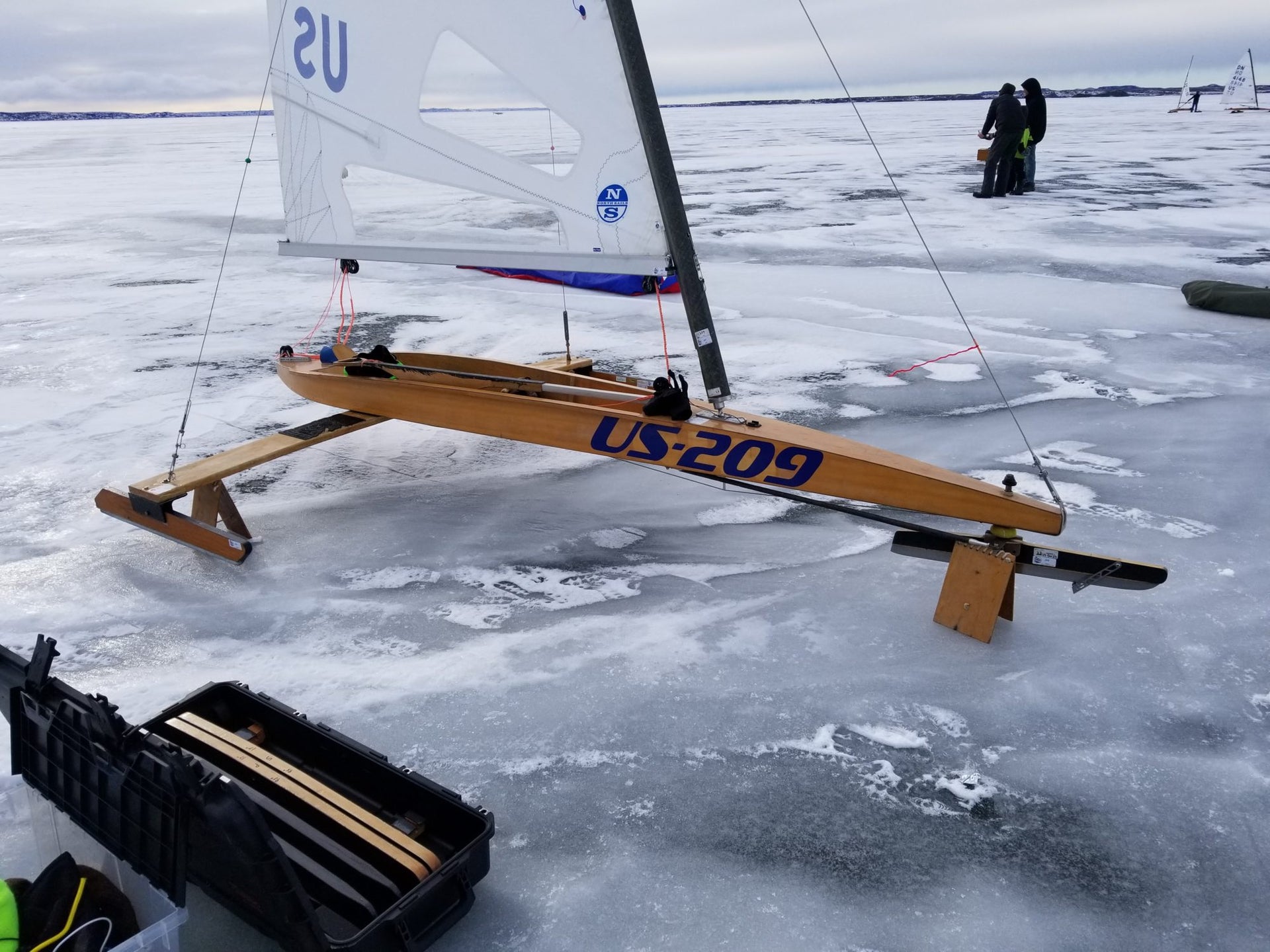
CATCHING UP WITH DN ICEBOATER TREY ROSE
CUSTOMER SPOTLIGHT: TREY ROSE
Catching Up With Trey Rose After The 2020 North American DN Iceboat Championships
For those that are unaware, Iceboating, simply put, is sailing on ice. There are many different types of iceboats, but current designs tend to have three runners or blades that support the main body of the craft. There are international and local competitions and the sport flourishes in the northern regions of both Europe and the US.
We got a chance to speak to a local Detroit area customer, Trey Rose, who recently returned from Fort Peck Montana after competing in this year’s DN Iceboat North American Championship Regatta. As with any sport there are certain characteristics that challenge participants and make the sport unique.
“The sport is difficult in the aspect of good wind, good ice and no snow on the ice” says Trey when asked about his participation in the sport. Finding this trifecta requires ice boaters to be flexible on time and location of any ice boating events. “These guys will say hey, we have a regatta this weekend and they’re like ok. And Thursday an email will go out and you find out it’s in Minnesota or Wisconsin” A lot of ice boaters have the ability to take time away from work with little to no notice, or people are retired from work.
Often times, soft water sailors are drawn to the sport because it’s similar to warm weather sailing and it keeps Great Lakes boaters active year round. However, Ice boats are known for their sometimes extreme speed and differences in maneuverability. When asked what’s different between soft and hard water sailing, Trey had this to say: “The components and how to de-power. Talking about bending your rig how many feet versus hey can I get an inch or two of mast over here….everything is a lot more extreme, speed, etcetera” For Trey, Ice boating keeps him intrigued for more than one reason. “It’s been fascinating to me. I’m really into sailing and it was a new challenge, and it certainly is all of that. I’m hoping as I comprehend and excel at this I can convert it over to soft water.”
For locals, there are several different groups that get out on the ice together whenever possible, including the Iceboating in Michigan and Ohio Facebook Group. According to Trey, “It’s a pretty active page for people posting hey, my backyard lake looks like this and they have get-togethers.” Trey has a few locations that make it easier to get out more often and have spots where people can take a break, warm up and get back out there for more action. “My favorite location, I suppose is Walled Lake. There’s a nice little beach area there that we can utilize. There’s a bar and grille right next to the beach. Its where I have been able to easily go. And I can bring new people into the sport and rotate them in a warm environment. The best place locally, I think is Maumee Bay, just because there’s so many people that sail there. There's a little shallow water area and a cove and you get a lot of great ice conditions frequently.”
The DN Iceboat was created first here in Michigan, spurred by an active community of skilled craftspeople and the Detroit News taking notice. Trey shared his knowledge on the history of the craft and how it all got started. “The intent was for anybody to get these plans and build it in their garage. I believe what was going on was a lot of people were building boats. There was this arms race of engineering almost. Kind of like the Americas Cup where design might actually win versus the sailor. So at one point, what they did was say let’s make one design. You can build your own boat and all that, but be within these certain parameters. And that way you can compete and say at least we’re in the same realm as each other. I believe it was an article placed out by the Detroit News, which is why it’s called the DN”. The DN Iceboat is currently sold internationally, and is the most popular Ice Boat in the world.
Trey got his first DN Iceboat from a co-worker who was trying to get rid of the boat after the owner of the boat, his Grandfather, had passed away. “He wanted it to be used but didn’t know anything about it. He knew I sailed. We made a great deal and since then it’s been a roller coaster of upgrades. I don’t think I have any part of that boat, that’s part of my race program now.” Ice boaters can spend a lot of time working on and tweaking their boats for optimal performance. According to Trey the type and quality of your equipment and sails can make or break your sailing experience. “Equipment is really, really important. In iceboating I have noticed a tremendous difference the equipment makes. You can buy speed. With the right conditions, the right materials, the right sails, the right runners make a big difference.”
Trey purchased a North Sails One Design Power-Max mainsail a few days prior to the regatta. He explains how that sail effected his light air sailing. “I’m a little bit heavier and there’s a slight worry about my light air performance. But we had a lot of practice and I was just killing these guys off the line, at least. I got my speed up and I got point faster than anybody around me on all 4 or 5 starts. I would say that sail is very helpful.”
The location of the regatta was chosen a bit later than usual and much farther away than usual, due to a weather system that came through the mid-west just days prior to when the regatta was set to take place. Trey details, “We had this crazy weather system that came by and dumped a bunch of snow, like 6 inches or so and more north. All of our North Americans thus far have been between Minnesota and Maine and we have different regions. The west region goes all the way up to Minnesota but not past that. That weather system took any safe ice that we had in the region and put 6 inches of snow on it. You can’t do an even on that.
Thankfully, some Iceboaters from Montana reached out with good ice conditions and with little other options, the race was scheduled for a water basin in Fort Peck Montana. “The water basin that we sailed on is a dam with a reservoir that feeds the Missouri river. The Army Core of Engineers manages it. The ice was great, well, ok and they sent all these videos of people sailing on it. So we packed our bags and headed out west and there was no wind.”
It was a difficult task finding a specific location to set up the course. “We were scouting ice, and the people managing the reservoir made the decision to lower the water level which ended up cracking some of our ice. Which made some of the areas we might want to go sail off limits; very inaccessible and obviously cracking and making some pressure cracks elsewhere. Luckily this reservoir has more surface area than the coastline of California.”
The rules of the regatta require that 3 races be held within a division to qualify as an event. This can be difficult if the weather conditions do not cooperate. This year, the weather was not cooperating. After delays in finding ice and in having conditions that were good enough to run qualifying races it came down to Friday which was the final scheduled day of the 2020 NA Championships. “Unfortunately, the end of the day happened and we only had 2 in on Silver that were legal within the time limits. The event does have a stipulation that you go until Saturday if you have not been able to complete the event by Friday sundown. Saturday was supposed to be blowing anywhere from 10 knots to 30. All of the sudden this is going to be a big air event. And once you start a race day, it’s a race day. They had us out till sundown there. I think we did 3 races. Boats still were whole. The wind just kept piping up and piping up, we ended up having a squall line come through. But the ice conditions weren’t great. They still had cracks in them and we were in really windy conditions so it started getting on the edge. At least for me. I know some of the more seasoned guys were saying, no, it’s just getting fun.”
Trey is considering competing again in next year’s North Americans depending on where they take place and how things go with his new schedule of raising his new baby girl, Claire.
Here is a video clip taken by Sean R. Heavey on the last day of the regatta.
If anyone is interested in trying the sport, you can contact Trey at Trey_Rose@hotmail.com. Or check out the Facebook page for Ohio and Michigan Iceboating to see what’s happening in your area. If you have questions about Sails for the DN Iceboat, feel free to contact the Detroit Loft.
READ MORE
READ MORE
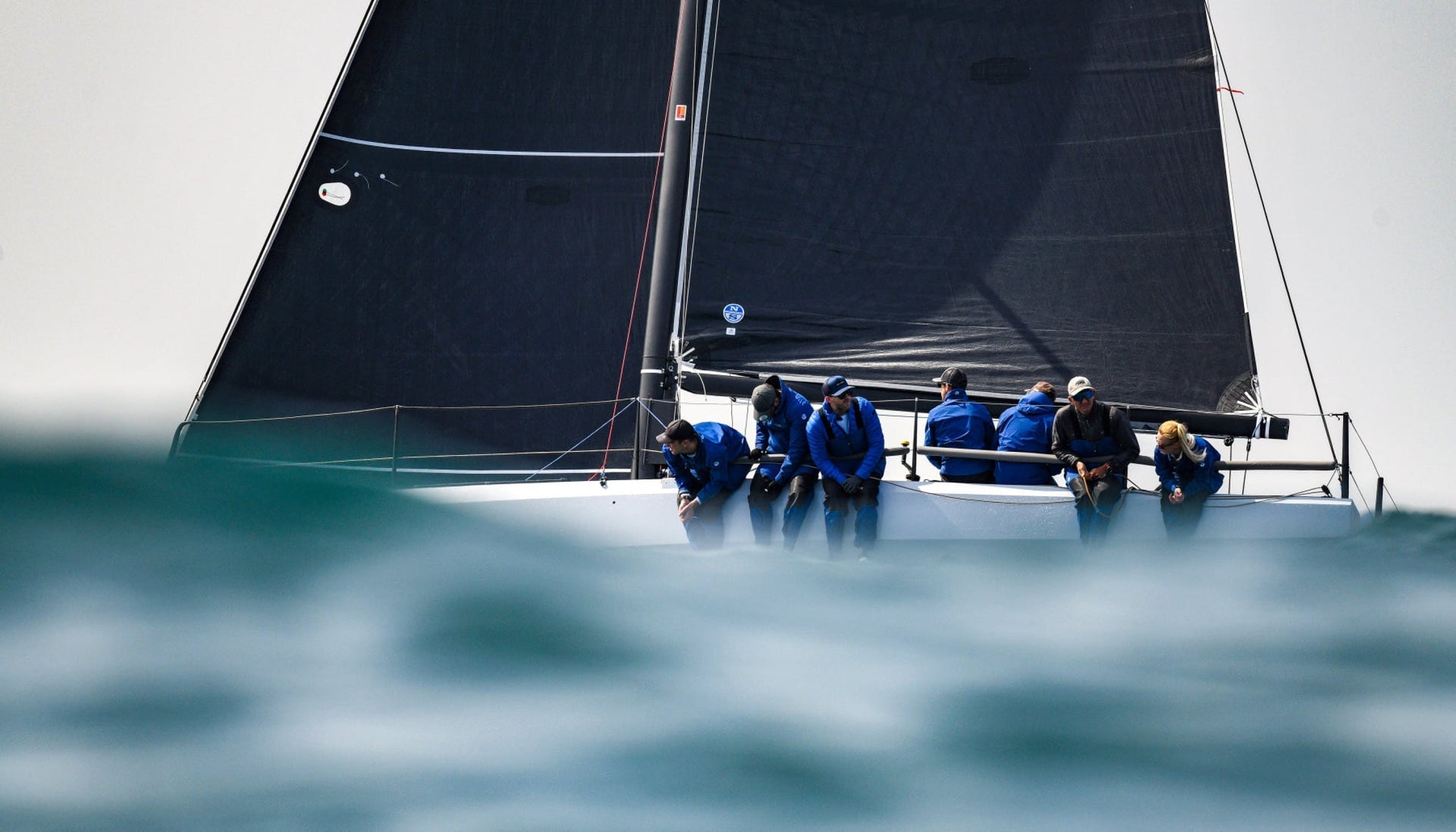
THE DIFFERENCE BETWEEN RACING SAILS AND CRUISING SAILS
People use sailboats in many ways, but we broadly define them as cruising or racing. Here is the North Sails Expert advice on what to look for when it comes to performance, design, and materials
READ MORE
READ MORE
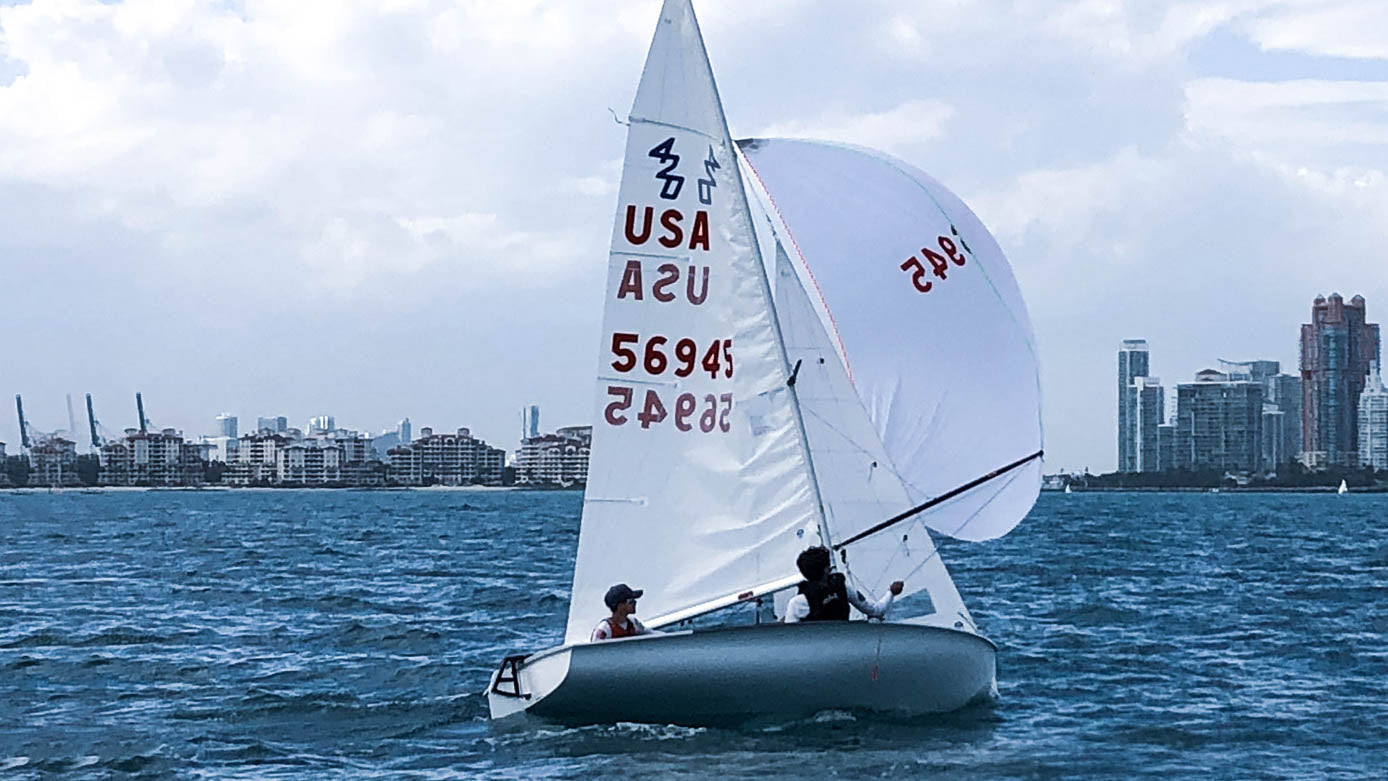
420 MIDWINTERS: COACH NOTES
420 MIDWINTERS: COACH NOTES
Key Tips To Up Your Game
35 teams from around the country gathered at the Miami Yacht Club for the 2020 International 420 Midwinter Championship. Out of the high caliber of talent, Justin & Mitchel Callahan prevailed with outstanding sailing and a convincing win at this event. North Sails powered boats fared very well, showing speed and versatility in a range of conditions, ultimately placing seven of the top ten boats in the overall results.
Here are some coach notes from North expert Tom Sitzmann:
Know your own boat
As much as we’d love to think that our hulls, spars, foils, sails, and individual tuning measurements are exact, the reality is that each boat, and all gear associated with it, is unique. With a tuning partner, experienced coach, or both, make sure you get out on the water before racing to check your rig settings and sail trim – no two boats are exactly alike! Use tuning guides as a starting point, experiment when able, but proof of concept is only validated on the water.
Spinnaker trim on the reach legs
There are LOTS of gains to be made on the “outer” reach and in the final sprint to the finish. Again, it is critical to know the design philosophy of your spinnaker and trim accordingly. Pole height, often set and forgotten about, can be a big difference-maker for an i420 on the wire reach. Experiment and improve!
Learn more about 420 sails.
Re-tuning for the lighter wind prediction on the final day.
Haul to the open-water sailing east of Key Biscayne
READ MORE
READ MORE
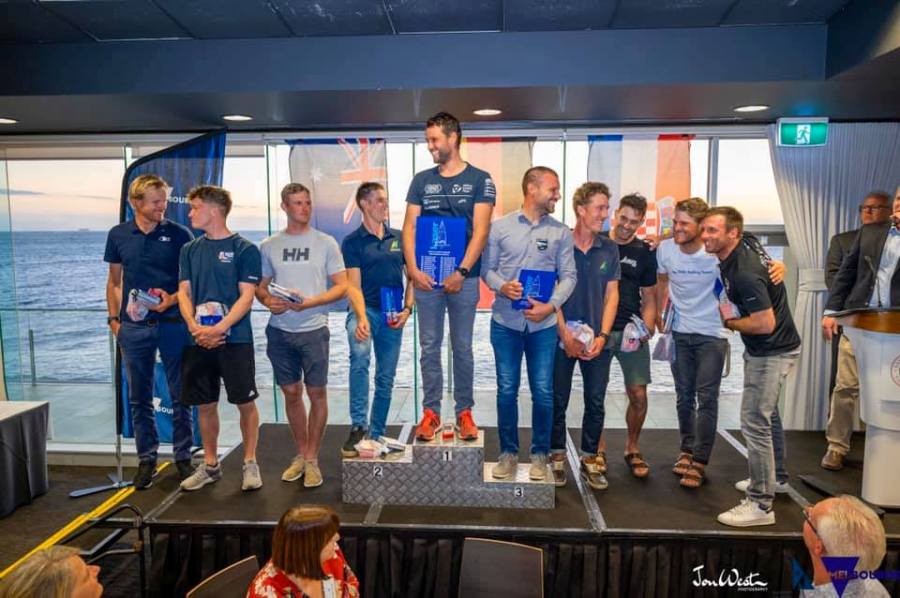
TONČI STIPANOVIĆ, BRONČANI NA SP ZA LASER STANDARD
Tonči Stipanović, brončani na SP za Laser Standard
FOTO: JON WEST
Zar može biti bolje otvaranje sezone od medalje na Svjetskom prvenstvu? A još ako se k tome doda da te za pola godine čeka nastup na najvažnijem sportskom natjecanju na planetu! Stvarno izvrsna, a s ovom medaljom u džepu i iznimno motivirajuća kombinacija.
Sigurno već svi koji prate jedrenje znaju da medalja brončanog sjaja i da ju je osvojio Tonči Stipanović, jedriličar u klasi Laser Standard iz JK Mornar.
Ova medalja je samo još više učvrstila njegov status našeg najboljeg jedriličara u ovoj klasi, a kroz cijelu njegovu karijeru bilo ih je i u nekim drugim klasama... pa prisjetimo se:
1999. - 2. na SP klase Optimist u team raceu
1999. - 2. na SP klase Optimist u pojedinačnoj konkurenciji
2001. - 3. na SP klase Optimist u team raceu
2002. - 1. na SP klase Laser 4.7
2003. - 1. na SP mladih u klasi Laser Radial
2010. - 1. na EP klase Laser Standard
2011. - 1. na EP klase Laser Standard
2012. - 2. na SP klase Laser Standard
2013. - 1. na EP klase Laser Standard
2014. - 1. na EP klase Laser Standard
2016. - 2. na Olimpijskim igrama u Laser Standardu
2020. - 3. na SP klase Laser Standard
Ja sam došao malo kasnije od ostalih, tako da kad sam prvi dan došao dočekao me je lagani vjetar, a to najviše volim... kad dođem na neku novu lokaciju da krenem postupno, od slabijeg prema jačem vjetru. Tako da sam imao vremena da uhvatim ruku na novom brodu. Već od početka sam imao dobru brzinu, pa sam odmah od početka bio zadovoljan. Zadnje treninge sam napravio po vjetru s kraja, onakvom kakav smo imali posljednji dan prvenstva. To su bili stvarno teški uvjeti. Po tom vjetru stvarao se chopy val (kratak i visok, op.a.), a od kanala, nama s desne strane, dolazio je velik val iz zaljeva, tako da smo imali taj neugodan swell s boka. Po pitanju konkurenvcije mogu odgovoriti da je bila najbolja koja je trenutno moguća u Laser Standardu. Jedino Burton nije bio u formi jer 3-4 mjeseca nije sjeo u brod, već samo petnaestak dana prije starta regate. I to se i vidjelo... ali svi ostali su bili u top formi. Svi ostali su manje više proveli cijeli prosinac i siječanj u Australiji i bili su na maksimumu. Tako da mislim da sam sve izvrsno odradio s obzirom koliko malo vremena sam proveo u Melbournu. Što se tiče taktike, tu nije bilo nikakvih kalkuliranja. U svaku regatu sam ulazio kao da je prva. Možda sam jedino predzadnji plov mogao taktički malo drugačije odigrati... držati se bliže njima, ali sam išao jedriti jednako kao i prvu, koju sam završio četvrti. Međutim, bio je jedan oblak koji se u pola regate počeo micati i tu se desila jedna promjena vjetra na strani na kojoj ja nisam bio i tu sam malo ostao iza i nisam uspio biti bolji od 21. mjesta. U svakom slučaju taktika da u svakom plovu idem na što bolji rezultat mi se isplatila. Moram izraziti zadovoljstvo i s opremom, s njom nisam imao nikakvih problema. Za razliku od Pavlosa koji je morao tri puta unutar regate mijenjati donji dio jarbola koji mu se stalno krivio! Ja s tim nisam imao problema, a i sve ostalo mi je funkcioniralo besprijekorno. U svakom slučaju, pripreme koje smo odradili na Malti su se definitivno isplatile! Istina, ovdje nismo imali tako brutalan val kao na Malti, ali tamo je bio dosta jak vjetar i to nam je stvarno dobro došlo. Stvarno smo i ja i Filip ovaj put došli fizički i mentalno spremni. A čini mi se da je ovaj put presudnija bila fizička sprema za konačan rezultat. Npr. ovaj nijemac koji je pobijedio je svjesno došao na regatu s 87kg. Bio je brz i išao je na to da će svaki dan biti jak vjetar i da će morat puno visiti.
Tonči Stipanović, JK Mornar
Tonči sad ima mali odmor, a iduće okupljanje ekipe je 1. ožujka. prije dvije domaće regate, Velike nagrade Mornara i Prvenstva Hrvatske. Nakon toga slijedi nastup na Palmi, a preskočit će Genovu u kojoj će se dijeliti preostale norme za Tokio.
Zatim u travnju ekipa putuje za Francusku i nakon toga je fokus na Japan i Olimpijske igre.
Što se tiče same regate, flota je bila podijeljena u tri skupine. Dvije su imale po 41 natjecatelja, a jedna 42... ukupno 124 najbolja jedriličara iz cijelog svijeta. Prva tri dana regate su se jedrile kvalifikacije, svakog dana po dva plova.
FOTO: JON WEST
U kvalifikacijama Tonči osvaja po dva prva i dva druga mjesta, a lošiji ulasci su mu 6. i 13. mjesto. S takvim rezultatima nije bilo nimalo straha da li će finalni dio prvenstva nastaviti u zlatnoj skupini.
Slična situacija je bila i s njegovim klupskim kolegom i našim drugim predstavnikom u Melbournu, Filipom Jurišićem. Filip je također kvalifikacije odjedrio na vrlo visokom nivou i jednom pobjeđuje, osvaja jedno treće, dva četvrta i 15. mjesto.
Jednako kao i Tonči, Filip nastavlja Svjetsko prvenstvo u zlatnoj skupini gdje zajedno jedre idućih šest jedrenja u dva dana.
Tamo je situacija dosta ozbiljnija, jer je sad tu koncentrirani svi najbolji. Jedrenja se nastavljaju iz dana u dan, a naši momci jedre s promjenjivim uspjehom. Tončevi najbolji rezultati su dva četvrta mjesta, ali vrlo dobri ulasci u kvalifikacijama donekle anuliraju 11., 15. i 18. mjesto. Srećom bilo je dovoljno jedrenja da može odbaciti svoj najlošiji rezultat, 21. mjesto. Taj kiks se desio u drugom plovu posljednjeg dana i tada Tonči uspijeva zadržati mentalnu snagu i ne dozvoljava da mu taj rezultat utječe na prikazano jedrenje u posljednjem plovu.
Da je u tim trenucima situacija po pitanju medalje za našeg jedriličara bila poprilično opasna govori podatak koji se može vidjeti u finalnim rezultatima, a to je da su jedriličari koji su završili na 4. i 5. mjestu imali dva boda više od Tonča!
Mjesto iza Tonča je završio vjerojatno najveći tragičar SP-a, francuski jedriličar Jean Baptiste Bernaz. On je u 12 jedrenja imao čak 6 prvih mjesta i po jedno 3., 4. i 7., a od čega su dvije pobjede bile u finalu! Međutim, kad je zeznuo, zeznuo je do kraja... U konačnoj sumi medalje su ga koštala 21. i 32. mjesto, dok je BFD iz drugog finalnog plova odbacio.
Što se tiče Filipa, njega je bod dijelio od 9. mjesta, a tijekom prvenstva je jedan od finalnih dana završio čak i na vrlo visokom 6. mjestu. Najbolje je završio u posljednjem plovu kad je ciljnu ravninu presjekao 7. po redu, dok su se ostali rezultati vrtili između 12. i 32. mjesta.
Nadao sam se malo bolje, ali eto... bilo je gusto... Došli smo u Australiju malo ranije da bi se prilagodili na tu opremu koju su nam oni dali. Naime, za jedrenje na SP je bilo obavezno da koristimo njihovu opremu. Stvarno se osjećalo da je ta oprema dosta drugačija od one koju inače koristimo. Na samom početku priprema nisam bio baš zadovoljan, ali iz dana u dana kako je prolazilo vrijeme pomalo sam poboljšavao sve što nije bilo dobro. A najviše mi je smetalo to što mi je brzina na treninzima na Malti bila izvrsna, a ovdje mi je to stvarno škripalo. Uglavnom, u tih tjedan i pol što smo bili dolje prije početka svjetskog, nastojao sam se prilagoditi što bolje mogu i kroz regatu sam uspijevao nadoknađivati taj manjak brzine u odnosu na Maltu. To mi je bilo nužno da bi opstao u vrhu... i eto, uspio sam sebi dokazati da unatoč takvom hendikepu mogu jedriti u samom vrhu, a u tom dijelu ljestvice u ovoj našoj klasi je vrlo gusto. Što se tiče Tokija, regata je završila loše za mene, ali Tonči je s ovom medaljom itekako potvrdio da je on taj koji nas tamo treba predstavljati! Uglavnom, ne žalim za ničim jer sam dao svoj maksimum. Rezultat na ovom svjetskom je moj najbolji plasman ikada, a sigurno je razlog u tome što sam jedrio apsolutno neopterećen rezultatom. Na prošlom sam propustio ovakav rezultat zbog opterećenja našim kvalifikacijama, a sad sam uspio jedriti bez ikakvog mentalnog opterećenja i bez fokusa na kvalifikacije, već sam se uspio koncentrirati samo na kvalitetu jedrenja. Uvjeti na moru su nam bili dosta teški. Na mjesto gdje smo jedrili dolazio je val iz zaljeva, iz dubokog dijela u dosta pliće, pa je posljedica stvaranje dosta visokog i kratkog vala. Također je i bila dosta vjetrovita regata i u kombinaciji s visokim levelom konkurencije mogu reći da sam stvarno zadovoljan svojim rezultatom. Tako da su se težak rad i vrhunske pripreme na Malti definitivno isplatile. Mislim, u uvjetima koje smo imali na dva ciklusa priprema na Malti, razvili su mi snagu s kojom sam se mogao nositi s konkurencijom. Što se regatnog polja tiče primijetili smo tri različite kombinacije uvjeta... od slabog, srednjeg i jakog sea breez-a, pa do ciklona i nešto jačih nevera i do vjetra s kraja koji je puhao u stilu naše bure. U početku je taj sea breez, dok smo trenirali, imao najjednostavniji obrazac ponašanja. Njega smo relativno dobro svladali. Onda se ta ciklona pojavila s tim neverama... a i tu smo se dosta dobro snašli, svi smo dobro jedrili. I zadnje je bilo to s kraja i mislim da je realno govoreći to svima bilo najteže. Stvarno su to bili nestabilni uvjeti, pogotovo zadnjeg dana kad se svatko pozicionira na osnovu svojih rezultata... u odnosu na konkurente koji su najbliži... Ja tu prvu regatu nisam odvozio najbolje, završio sam 24. ali drugu sam bio dosta bolji i u posljednjem plovu ulazim kao 7. Najlošije sam u tom finalu jedrio u prva tri plova i tada stvarno nisam bio zadovoljan brzinom. Mislim, nema logike da kažem da sam bio spor, a jedrio sam u samom vrhu... ali vidio se manjak brzine u duelima, a pogotovo je to dolazilo do izražaja neposredno nakon starta. To je bilo nešto gdje sam kaskao za ostalima, ali s druge strane sa snagom, spremom i koncentracijom bio sam na vrlo visokom nivou i s tim sam se uspio izvući. U svakom slučaju ja sam zadovoljan svojim napretkom, a siguran sam da mogu još puno bolje, jer sad igraju samo nijanse!
Filip Jurišić, JK Mornar
FOTO: JON WEST
Pobjednik ovogodišnjeg Svjetskog prvenstva je njemački jedriličar Philipp Buhl. Briljirao je u uvodu s četiri pobjede i jednim 2, mjestom, dok je 4. odbacio. U finalu mu je najbolji finiš bio prilikom otvaranja, na drugom mjestu, a u ostalima kao da mu je forma pomalo padala. Ali prosjek mu je bio vrlo dobar i činjenica da je iz finala odbacio 10. mjesto osigurali su mu zlatnu medalju s 12 bodova prednosti ispred drugoplasiranog australca Matt Wearna koji je imao prednost od 28 bodova ispred našeg Tonča.
Nastavak sezone je sad cijeli u znaku priprema za Olimpijske igre u Tokiju. Glavni zadatak Filipa Jurišića je da bude sparing partner Tonču Stipanoviću, ali uz regate na kojima će zajedno nastupiti bit će ih i nekoliko koje će imati poseban Filipov fokus. Zajedno će jedriti na Palmi i u Hyresu, dok Filip možda nastupi i na Europskom prvenstvu.
Nakon toga slijedi regata Svjetskog kupa u Japanu i nekoliko pripremnih regatica pred Olimpijadu gdje će uz naš dvojac jedriti i Pavlos Kontides. Uglavnom, do ljeta u Japan će putovati čak tri puta!
Što drugo, nego ekipi JK Mornar zaželjeti puno sreće u nastavku sezone i da ne zaborave da se svi potajno nadamo dobrim vijestima iz Tokija ovog ljeta :)
S ovom Tončevom broncom, Jozo Jakelić, trener Mornarevog Laser Standard tima, potvrdio je svoj status jednog od najboljih svjetskih trenera u ovoj klasi, a sigurno spada u najtrofejnije Hrvatske jedriličarske trenere ikada!
READ MORE
READ MORE
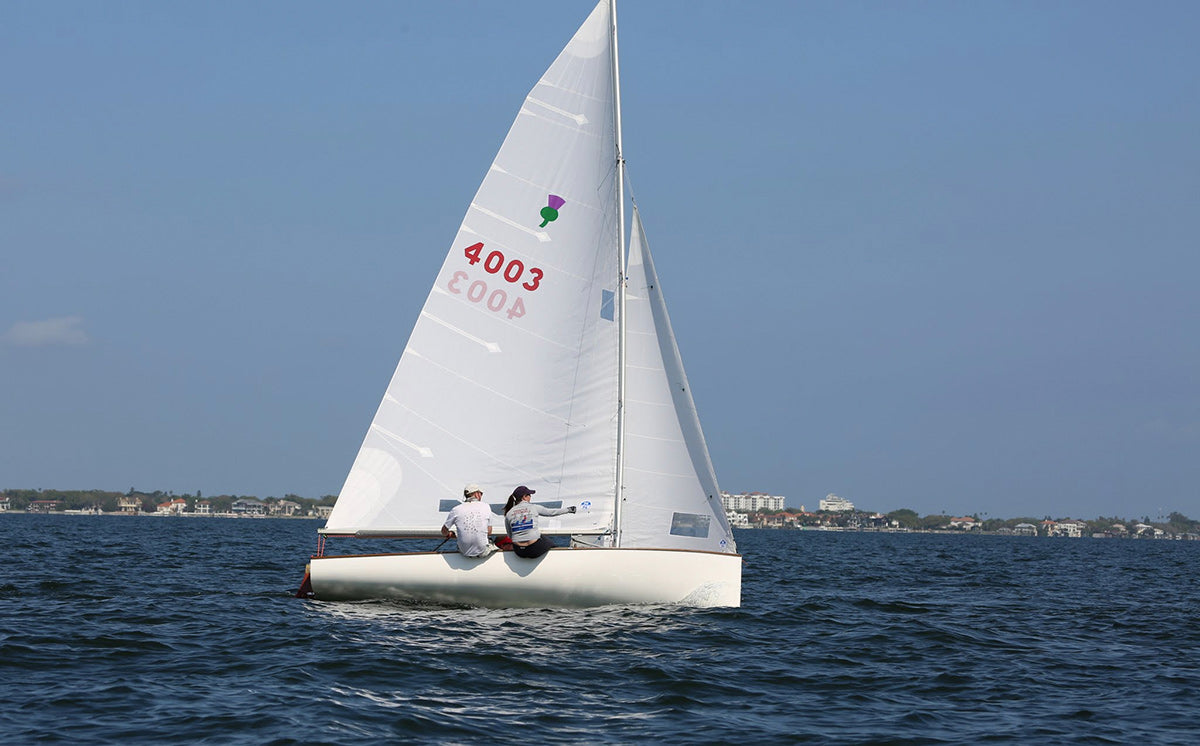
THISTLE MIDWINTERS WEST: COACH NOTES
THISTLE MIDWINTERS WEST: COACH NOTES
North Expert Mike Ingham Shares Clinic Tips
📸 Tina Deptula
North Sails expert Mike Ingham hosted a one-day clinic for over 20 Thistles in preparation for the 2020 Midwinters West in San Diego, CA. Boats were overpowered at first, but later in the day, the wind softened.
“It was nice to see both wind ranges,” Mike says. “Reviewing the on-the-water videos, I found some common threads that were well worth talking about with the group.”
If you couldn’t be there, here’s what Mike saw.
Flat, Flat
The Thistle likes to sail flat, especially in Mission Bay where there are no waves.
Depowering
To keep flat when overpowered, you need to depower. Here are a few thoughts on how to do that in flat water:
Outhaul – Tight the outhaul until the foot looks stretched. That shelf is important.
Cunningham – Make sure your main halyard is up all the way and your cunningham is reasonably snug. Wrinkles are great in lighter wind, but as it builds, pull it on to smooth them out.
Pinch – In flat water when overpowered, it is okay to pinch.
Jib Trim
A great starting point is to trim the jib leech in until it lines up with a zip tie taped to the middle spreader 10 ½” away from the mast. A lot of people did not have that zip tie, and their jib trim was inconsistent.
In Heavy Wind: If you have to ease the main out to keep the boat flat, ease the jib as well until there is just a hint of backwind in the main.
In Lighter Wind: When underpowered, if the jib leech tell tale near the middle spreader is stalled, you are trimmed too tight. If it is flowing, you may be able to trim tighter.
Mainsail Trim
When overpowered:
Vang sheet. Pull hard on the vang, and then let the mainsheet out to keep the boat flat.
If you have the North Proctor mainsail, traveler sheet.
When underpowered:
Keep the vang floppy loose so you can control the leech tension with the mainsheet.
As a starting point, try to keep the top main leech telltale flowing 50% of the time (if it stalls behind the main for a few seconds, then flows straight back for a few seconds, that’s 50%)
In flat water, you can have it flow less, say 30%
In waves or chop you will want it to flow more, say 75%
Mike’s next stop – the Thistle Midwinters East in St. Pete.
Learn more about North Sails Thistle sails.
READ MORE
READ MORE
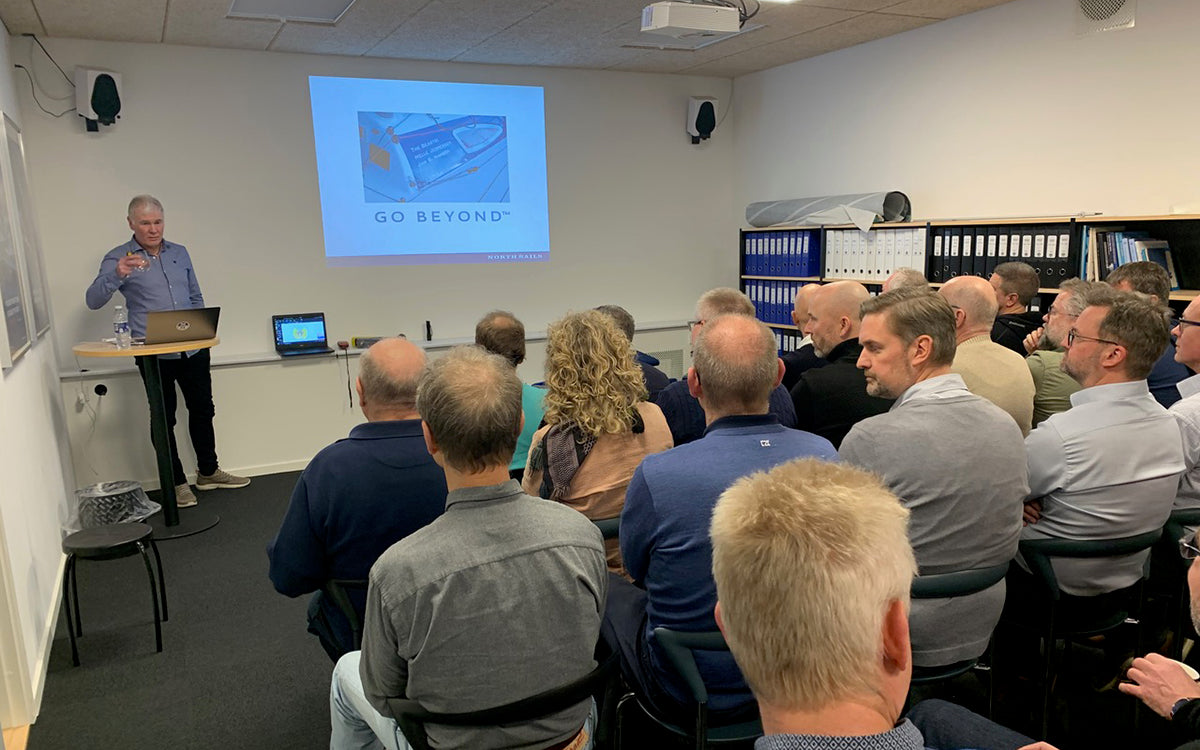
VELBESØGT AFTEN HOS NORTH SAILS
VELBESØGT AFTEN HOS NORTH SAILS
Med Jan B. Hansen, skipper på "The Beast"
Jan Hansen fortalte om sine erfaringer fra sæson 2019 med sin nyindkøbte Figaro 2, "The Beast".
North Sails have oprindeligt indbudt til en enkelt aften med Jan Hansen, single- og doublehand sejlads. Arrangementet blev overtegnet i løbet af en dags tid, så det blev i stedet til to aftener med fuldt hus. Knap 90 sejlere kom forbi sejlloftet i Herlev.
De fik en aften, hvor de indledningsvis kunne få en snak med flere af vores kompetente sælgere, som alle er sejlere på topplan.
Derefter underholdt Jan Hansen i et par timer med erfaringerne fra sæson 2019 med sin nyindkøbte Figaro 2, "The Beast". Vi kom vidt omkring: Fra valg af bådtypen, sejlene, sejladsplanlægning, fysik, sikkerhed og planerne for 2020.
Der blev uddelt af såvel gode, som mindre veldisponerede oplevelser på vandet og alle gik herfra lidt klogere og med et smil på læben.
North Sails glæder sig til at indbyde til lignende arrangementer. Hold øje her på hjemmesiden samt tilmeld dig vores nyhedsbrev for at holde dig opdateret.
READ MORE
READ MORE

ANNAPOLIS SEMINAR SERIES
ANNAPOLIS SEMINAR SERIES
Immerse Yourself In Our Upcoming Educational Opportunities
North Sails Annapolis is pleased to announce their Winter Seminar Series schedule. Connect with your local experts and make this season one of your best with our many educational opportunities. March 3 | Fawcett's Speaker Series Off the wind sailing presentation by Austin Powers. A modern guide to off wind sails featuring racing and cruising sail technology. This even is open to the public at Fawcett Boat Supplies. March 4 | An Evening With Ken Read It’s time to have fun again! Hear how the state of perfection, wasting time, and monotonous windward-leeward racing has taken the edge off of our sport. Join us for Ken Read's presentation about real ways to have more fun on the water, as well as share our precious time between the sport, activities and family. This event is for Annapolis Yacht Club members only* March 14 | Annapolis to Bermuda talk Join North Sails and local experts Austin Powers and Jonathan Bartlett for a discussion on off of the wind sails and sail trim. This talk is to educate racers as to the gear and trim settings they will need for the Annapolis to Bermuda race. This is event is open to registrants with the club at Eastport Yacht Club* March 23 | BBSA Off The Wind ** POSTPONED ** Learn about downwind sailing and double headsail sailing with North sails expert Austin Powers. Registration is required. Don't miss out on this great evening presented by the Broad Bay Sailing Association. April 14 | Opti talk for USODA Austin Powers will talk all things optimist tuning with the USODA Optimist development team at Annapolis Yacht Club. April 30 | AYC One Design Talk North Sails Experts Zeke Horowitz, Austin Powers, and Allan Terhune will visit the Annapolis Yacht Club to lead a seminar on a successful season of One Design racing. They will discuss everything from the broad picture of planning your schedule, maintenance, and crew list to the intricacies of starting strategy and tactical decision making.
READ MORE
READ MORE
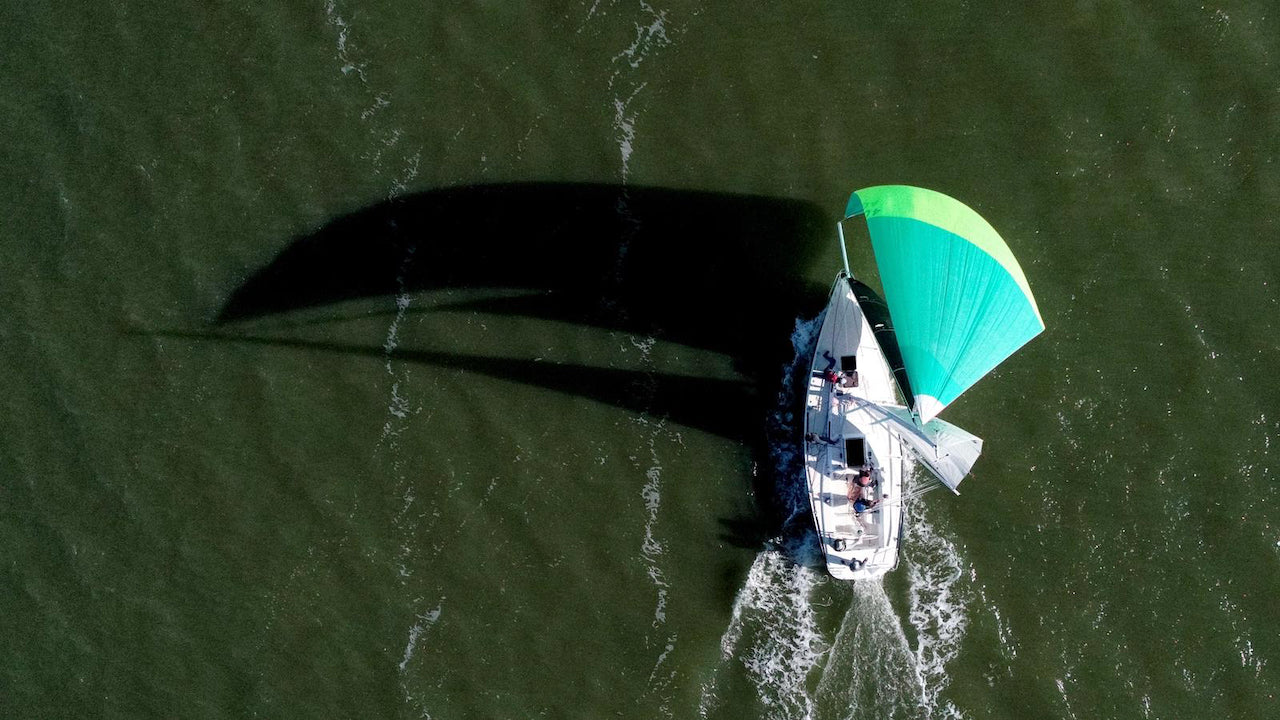
EVENT SPOTLIGHT: SCOR REGATTA
EVENT SPOTLIGHT: SCOR REGATTA
A Weekend To Remember
Photo Credit: Michael Wiser
On Friday, North Sails Sponsored a practice/tune up for visiting schools competing in the Southern Collegiate Offshore Regatta. Teams ran through practice starts for an hour while acclimating themselves to their borrowed equipment. All teams had an owner's representative onboard and crews were coached on the water by North Sails experts John Bowden, Rich Bowen, Ervin Grove and Tripp Fellabom. After several practice starts we ran 2 short course races allowing teams to perfect their boat handling and crew work around the marks. This practice would prove vital for Saturday's conditions.
Saturday morning an A and B Fleet were met with nuclear conditions in the morning and a slight decrease in pressure throughout the day. The starting line was set in the Ashley River in a flood tide(with the wind) and a windward mark 1.3 miles in the vicinity of Ft Sumpter/Sullivans Island. Two windward leeward/ twice around races were run on the incoming tide. Later in the day the tide switched for race three, which made for lumpy conditions. The final race of day one was a distance race around the harbor with a finish off the Carolina Yacht Club dock.
The race track on Sunday matched that of Saturday. The first race started in 12 knots and the wind built throughout the day with guests to 20. Again three Windward/Leeward Races were completed before a distance race finishing at the Carolina Yacht Club.
The team at North Sails Charleston takes the future of our sport very seriously. Tripp Fellabom an industry expert for over 45 years works tirelessly with many other volunteers to pull off this event. Participants of this regatta are continually graduating and moving on in life, but it is always refreshing to see them at other regattas throughout the world.
For full results, see here.
READ MORE
READ MORE
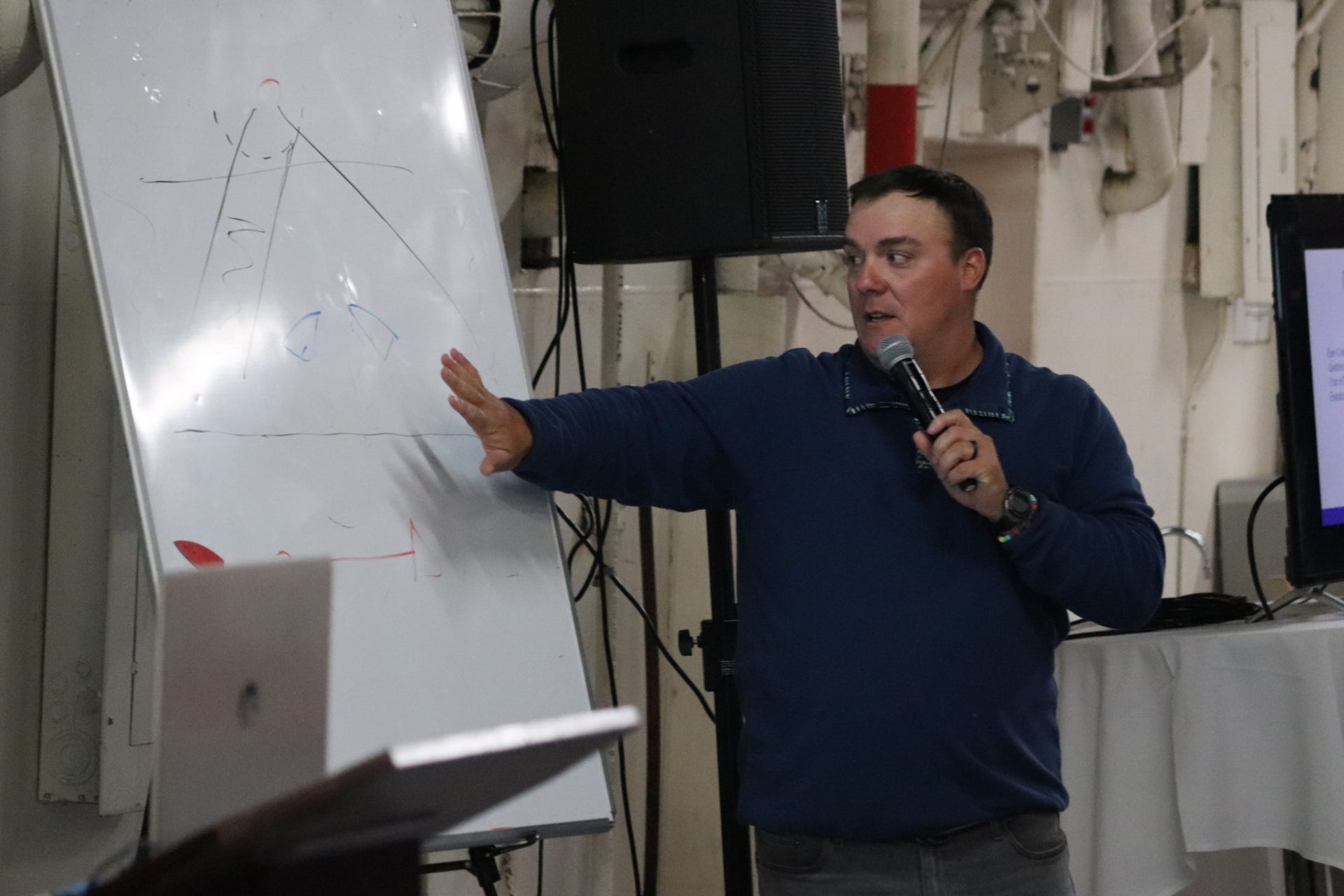
EVENT SPOTLIGHT: RACE COURSE TACTICS WITH ALLAN TERHUNE
EVENT SPOTLIGHT: CHICAGO SEMINAR SERIES
North Sails Expert Allan Terhune Explains Race Course Tactics
Sudden snow and winter winds didn’t stop sailors from gathering for the first of three winter North Sails seminars this past Wednesday. North Sails Expert Allan Terhune shared his knowledge of race course tactics to a full house at Columbia Yacht Club. He noted the importance of good boat communication and practising starts, among others things, and he made sure to touch on key differences and similarities between One Design and Mixed Fleet racing. Seminar attendee Nicole Scardigno shares how Allan's tips will help her on the race course this season.
What did you hope to learn from the Race Course Tactics seminar?
When you have not been sailing for a few months you start to lose knowledge of sailing. During the summer it is repetitive, but during the winter months its nice to have ways to stay sharp when you can't be on the water.
What was something you weren't expecting to learn but did.
Mental Tactics: I have been on boats where the captain/owner was a screamer and didn’t really care about he/she treated you. There was just a very bad vibe. I once was doing a delivery back from a very prestigious race and the captain was yelling and was so mentally and verbally abusive that I was about to take my PFD off and slide into the cold waters.
How will what you learned help you in the upcoming sailing season?
Starting. There have always been problems with the start on EVERY single boat I have sailed on. Pinging the starting line and so forth. I have sailed on some very big programs when I lived out in Newport and the professional sailors who are paid couldn’t get it.
Tell us about how you got into sailing and what you're currently racing.
I moved back to Chicago in the spring of 2018 and got involved right away with the Chicago sailing community. I have many friends who work for North so I am extremely excited when there is a training or if I can get one of my friends out on a boat to just explain everything better regarding the sails.
In Chicago, I am currently on Free Agent (Schock 35) and a few others. I help when someone needs extra hand or when the boat that I am on isn’t doing a race or beer can and I hop onto another boat. When I am in Newport, RI I sail on Jambo (First 40), Raven, International210 and a few others over 40 meters.
I started in Newport, RI learning out of Sail Newport in 2013 on brand new J22's donated by Ron O'Hanley who was CEO of Fidelity at the time, Ensigns, Rhodes 19, Shields, Herreshoff. He also has a program the boats name is Privateer and they are a Cookson 50 w/ Canting Keel. I have raced on the boat many times... Sailed on so many different types of boats when I lived out there.
A big thank you to the 90 sailors who came out to learn valuable tips for the upcoming season. Come talk sailing with us this winter! We look forward to seeing everyone soon at the upcoming seminars.
READ MORE
READ MORE
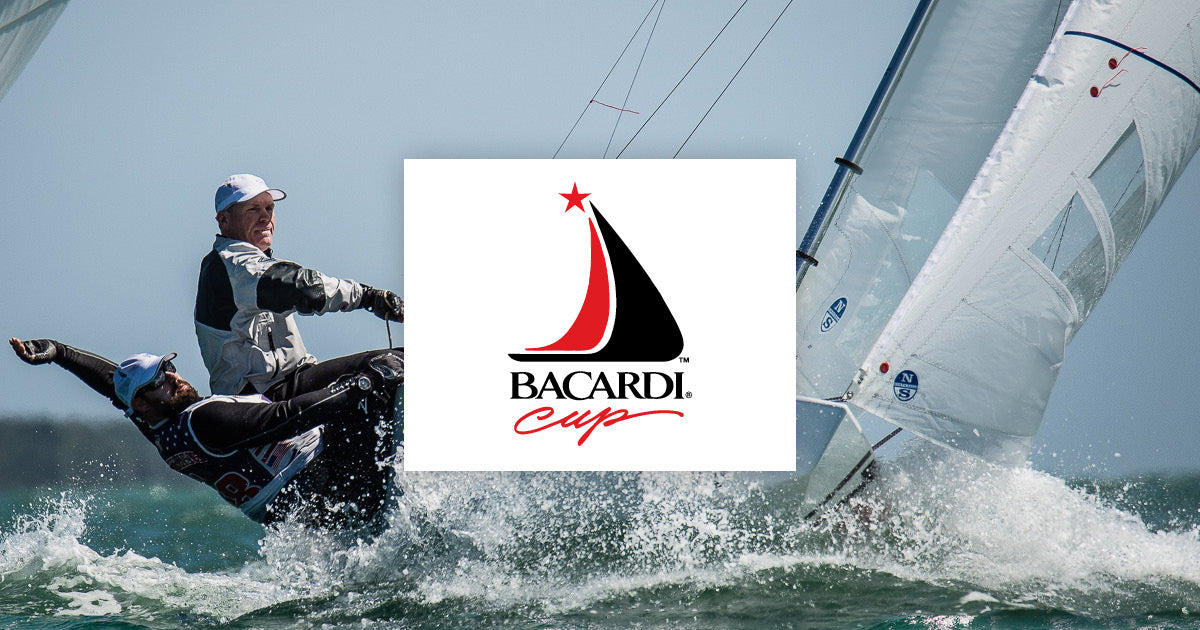
BACARDI CUP LOCAL KNOWLEDGE
BACARDI CUP LOCAL KNOWLEDGE
Get To Know Biscayne Bay
To help you prepare for the 2020 Bacardi Cup, we asked the local Star and Snipe World Champion Augie Diaz to explain about his home waters of Biscayne Bay in Miami, FL.
Biscayne Bay is I think pretty straightforward. The weather is driven by cold fronts approaching, and we don't get as much breeze as we used to because the city's grown so big. But generally, any breeze from the northeast around through the southwest is great sailing. From this direction, the breeze is usually under fifteen knots, with relatively flat water (chop but no swell). Spring and fall are the best seasons, because we don’t get many fronts.
Dominant wind direction: easterlies
The old rule of thumb is still the case: if the wind's to the left of the south end of Key Biscayne, you go left. Near the Key, from 120-160 degrees, there is a little more pressure closer to the end of the Key, and also a geographical shift off the land. How favored is somewhat current-dependent; from 70 degrees to 160 degrees with an outgoing current, then left is really good, what we call the "Old Man Expressway". At the top of the beat on the J/24 Worlds course, the Old Man Expressway could be important.
On what I call the Cuba Course, where the Etchells sail, way down south of Matheson Hammock, there's less left down there than there is closer to the point of Key Biscayne. So you have to keep in mind where you are on the Bay.
Current
Understanding the current is very important. People think the current comes in and out of the Bay from the east, but it actually runs in and out from Bear Cut. If you get close to what we call the Valves, which are the channels through the shallow areas that on the chart are labeled Biscayne Flats, there is a component of current going in and out of there. But you have to be very close to the Valves for that to be the net effect. Otherwise, the current basically ebbs from the southwest to the northeast, and goes the opposite way when it floods.
As for the timing relative to high and low tide, I've seen it as much as an hour off, so I just use tide change as a gauge and then keep checking the buoys, all the time. Sometimes seaweed will show lines of current, but I've never really seen a change in the color of the water.
Other wind directions
Once the wind gets to about 170-180, it's pretty important to protect the right. That’s true all the way to 220 degrees. Anything right of 220-230, it's going to march quickly to the northwest because that's a frontal-driven direction, which doesn't doesn't have the ability to stick.
If the wind’s right of 230 degrees, I like coming in from the top left because you get some really nice puffs off the left shore. It depends where you are on the Bay; on the J/24 course, close to the west shoreline, you’ll definitely want to come in from the top left.
Northwesters are like you're on a lake: very shifty, very up and down. But in late October, it's actually less frontal, so that’s less likely.
Secret to success
Focus on what the current's doing, and in the easterly understand how important it is to go left.
Thanks Augie!
READ MORE
READ MORE
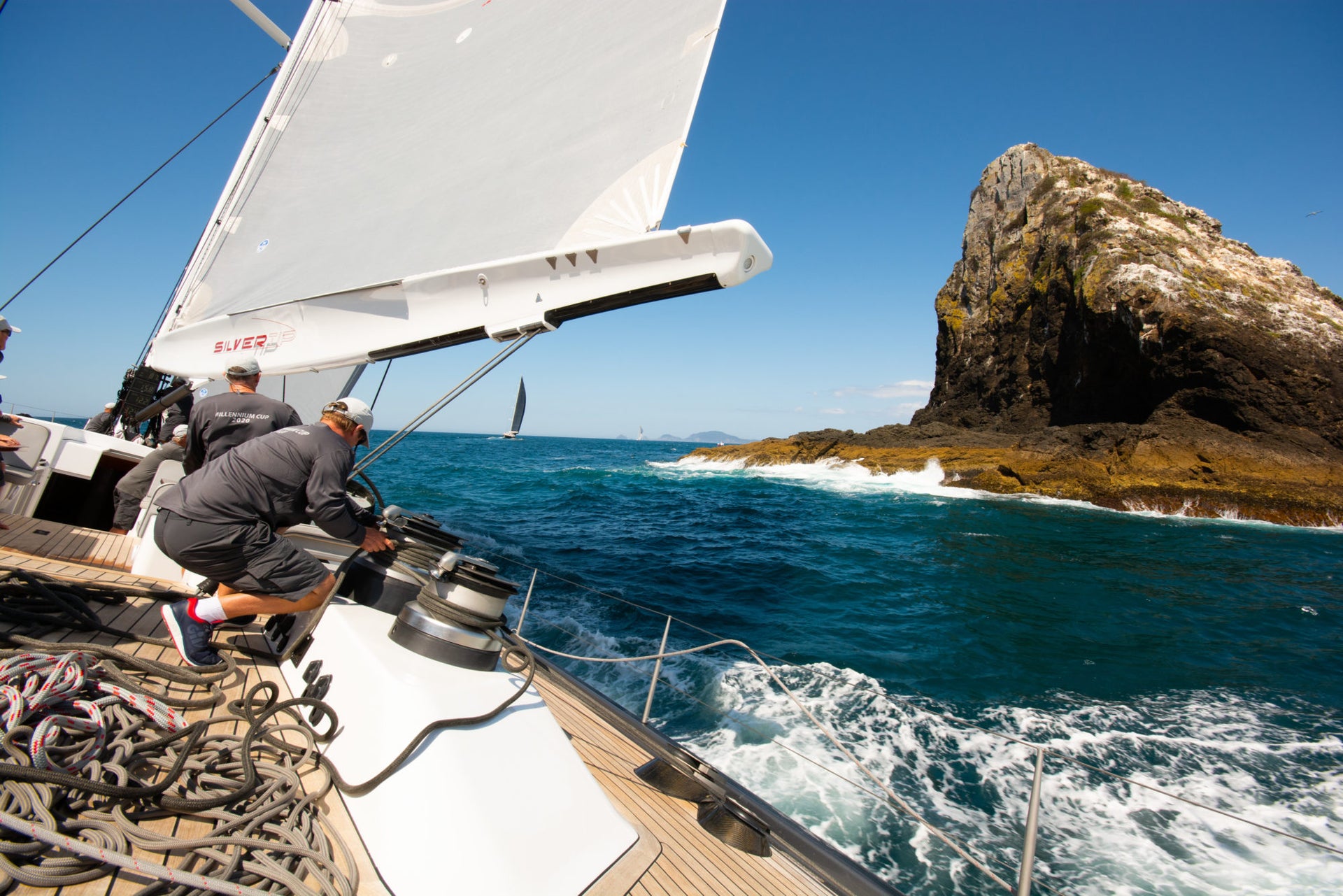
2020 MILLENIUM CUP
2020 MILLENIUM CUP
Clients Dominate in Numbers
The 2020 Millenium Cup had an outstanding showing of North clients. Client entries included Sassafras, 34.2 m Royal Huisman-built sloop. Silvertip, which was built in New Zealand by Yachting Developments, 54.6m classic-lined Adele, new entry Kawil, designed by Sparkman & Stephens, and the 40m Janice of Wyoming, which has competed in almost every Millennium Cup event since the inaugural regatta in 2000.
The 34.1 m Kawil dominated the results on corrected time, winning four of the five races, but Wills says the regatta is about more than just competition. The social side of the event also makes it one of the most enjoyable of the calendar, with the casual, holiday atmosphere of Russell and opportunities for owners and crews to mingle, giving it a point of difference to overseas regattas. Another popular event is the Tawera rum-barrel challenge, where yacht crews have the chance to race each other in rowing skiffs off the beach.
“It’s more of a shorts-and-sandals type thing, rather than long pants and collars,” Wills says. “The owners seem to really enjoy the atmosphere and the Kiwi hospitality.” The 2020 regatta was sailed in prime Bay of Islands conditions, with bright sunshine, warm temperatures, and daily afternoon sea breezes. With the natural beauty of the bay and the islands themselves, the scene was complete with regular sightings of dolphins and other sea life.
“There was some really great close racing, too. Although the boats start on a staggered grid, a few minutes apart, on the racecourse, they were quite often close together,” Wills says. “The owners particularly enjoy that aspect of the racing.”
All five entries this year were carrying a North Sails inventory, and representatives from the company sailed on each of the boats, including international guests Kimo Worthington and Mike Toppa. North Sails local experts also raced, including Andrew Wills and Matt Smeaton, superyacht project manager for the Pacific aboard Sassafras. America’s Cup and big-boat legend Tom Dodson, who works with superyacht clients around the world from his New Zealand base raced with Silvertip.
“The regatta is important to North Sails because so many of major clients are taking part,” Wills says. “It’s an opportunity for us to sail with them, talk to them about their needs and make sure they are getting the best possible service.” Sassafrass was also sporting a new set of 3Di OCEAN sails for the regatta.
“It gave the boat a whole new look, with the black sails,” says Smeaton. “OCEAN has been developed not for grand-prix racing but specifically for superyachts, but being able to make the sails in black can give quite a race look.”
The new main, genoa and staysail, plus a new gennaker, were all designed by America’s Cup expert and North Sails designer Burns Fallow and finished at North Sails’ Auckland loft.
“This regatta was the first time the new sails were used in a high-profile regatta, and we noticed an improvement in the boat’s performance,” Smeaton says. “Our speed was above polars from the year before on all points of sail.”
Smeaton says North 3Di sails are becoming the industry standard for superyachts, respected for their durability and reliability. OCEAN has the highest Ultra PE fibre content of any 3Di product, reducing bulk, weight, and stiffness while retaining ultimate breaking strength.
“It’s a big purchase, so owners want to be sure they’re getting it right,” he says. “We and the other companies in the North Technology Group, such as Southern Spars and Future Fibres, have spent a lot of time in development to make sure we can deliver the best possible rig and sails package.”
To support customers at the regatta, North Sails was able to use its Opua loft to perform quick repairs between race days and sent up its Auckland-based crane-truck to help move the large sails around.
“We were able to get sails into the loft within an hour. One of the owners commented to me how impressed he was by how quickly we could get them off the boat and to the loft to get fixed,” Wills says.
Next year’s Millennium Cup superyacht racing event in the Bay of Islands is going to be a showstopper, judging from the 2020 event, held in late January. While just five yachts took to the racecourse this year, more than five times as many are expected to grace Northland waters before the 2021 America’s Cup. North Sails New Zealand Sail Expert Andrew Wills says next year’s regatta will be both longer and held slightly later in the season, and will include the J Class classic yachts also coming to New Zealand for the America’s Cup.
“They’re talking about 25 superyachts for next year, maybe more, plus the J Class fleet,” he says. “We’re a long way down the line with planning now we have an idea of how huge it’s going to be. For anyone who is around in the Bay in February next year, it’s certainly going to be a must-see.”
READ MORE
READ MORE
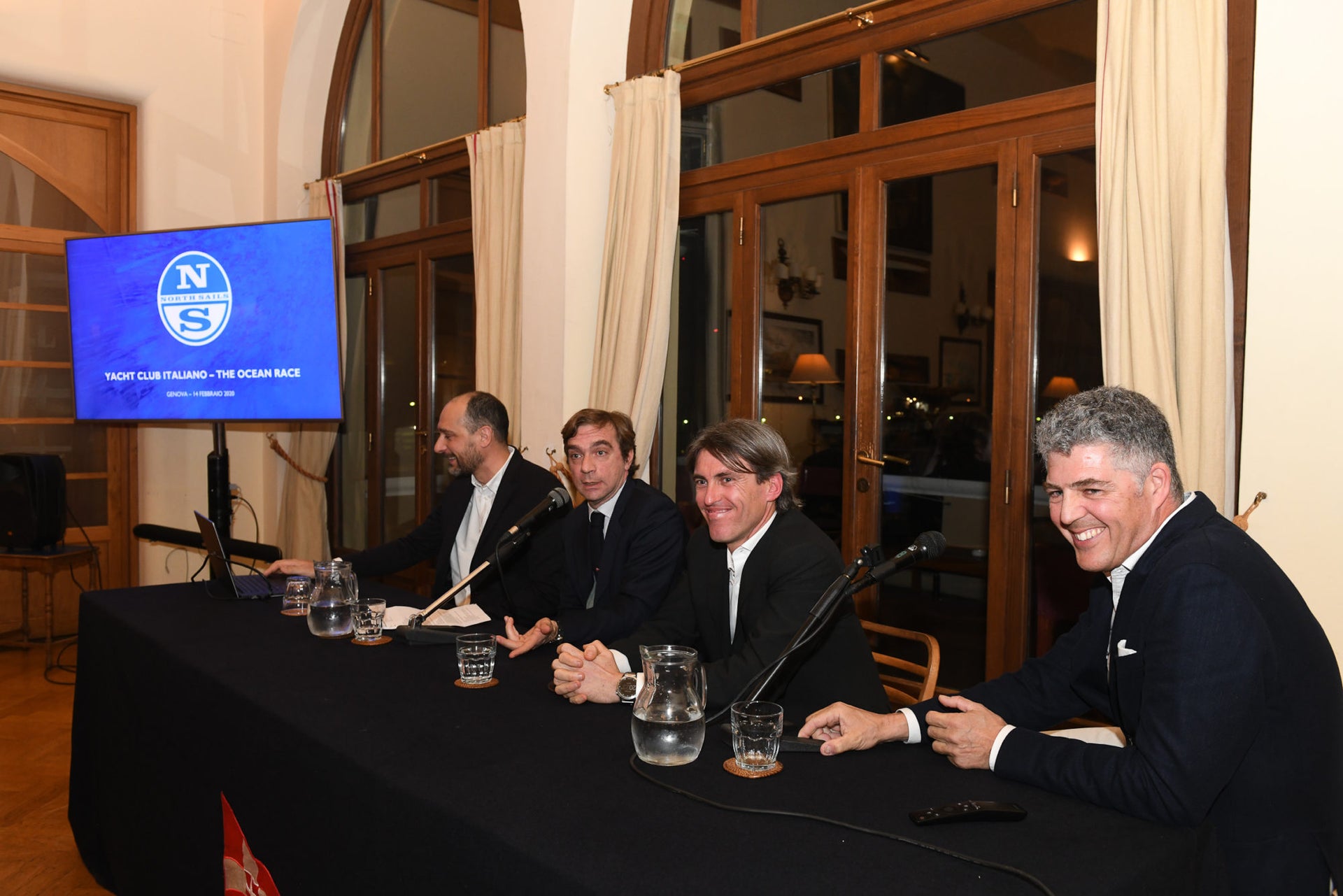
NORTH SAILS E THE OCEAN RACE
NORTH SAILS e THE OCEAN RACE
Alberto Bolzan con la Squadra North Sails allo Yacht Club Italiano
Ospiti delle grandi occasioni alla serata North Sails a tema Ocean Race Sotto la sempre ottima egida dello Yacht club italiano e del suo Presidente Gerolamo Bianchi ed il Segretario generale Nicolò Caffarena , Alberto Bolzan velista con all'attivo 2 giri del mondo in equipaggio ha parlato della sua esperienza , dei momenti difficili e delle emozioni che una regata di questa difficoltà gli ha trasmesso. Graditissimo ospite speciale il Sindaco di Genova. Marco Bucci competente ed appassionato velista. Ing. Michele Malandra uno dei migliori tecnici fluido-dinamici del gruppo North Sails ha interessato gli ospiti della serata con nozioni tecniche in merito alle peculiarità delle vele North Sails 3Di utilizzate da tutti i team della Ocean Race nelle ultime edizioni. La serata e stata anche l'occasione per ricordare Genova come tappa finale della prossima Ocean Race, un'occasione che siamo sicuri la vela italiana non si lascerà scappare.
READ MORE
READ MORE
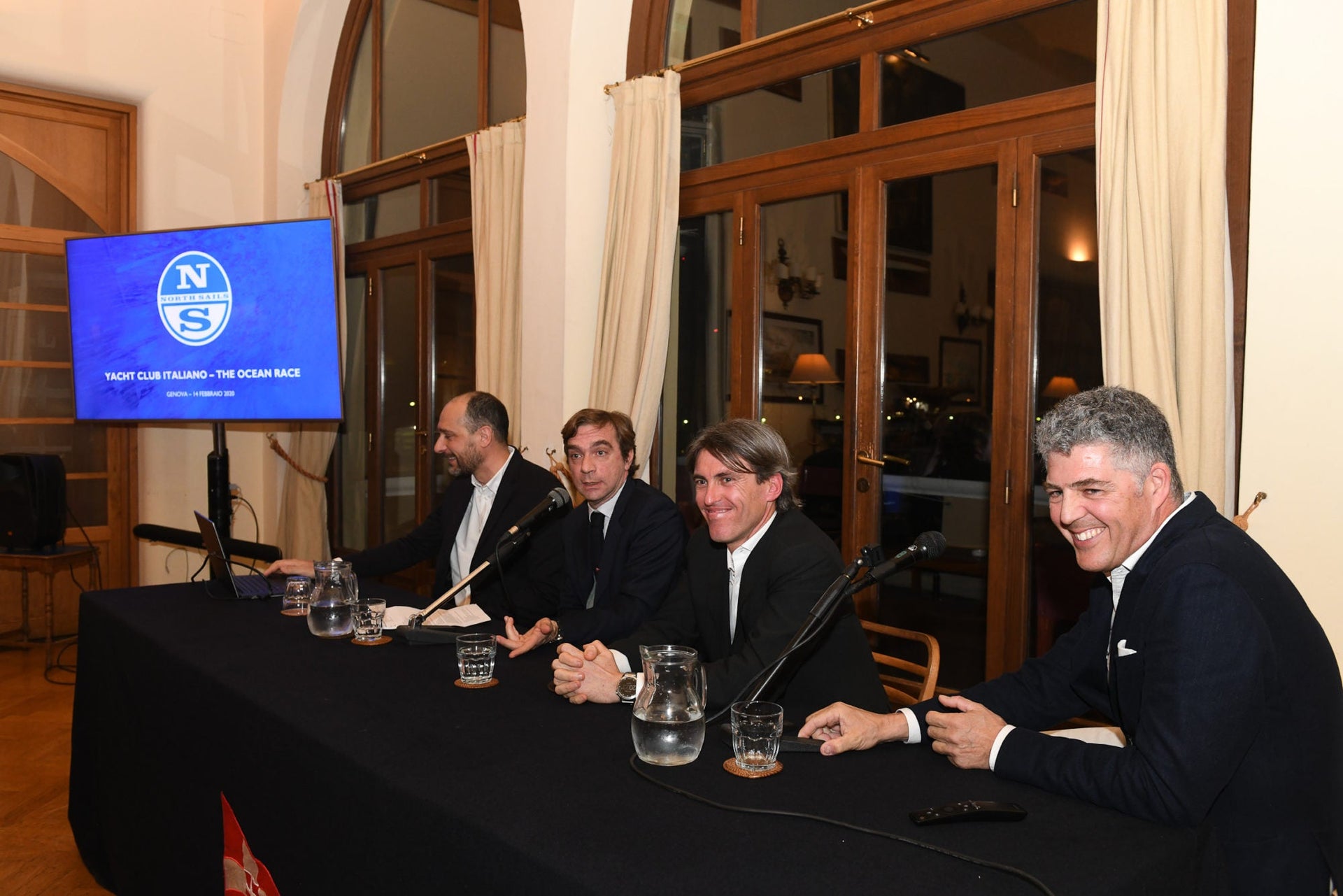
NORTH SAILS E THE OCEAN RACE
NORTH SAILS e THE OCEAN RACE
Alberto Bolzan con la Squadra North Sails allo Yacht Club Italiano
Ospiti delle grandi occasioni alla serata North Sails a tema Ocean Race Sotto la sempre ottima egida dello Yacht club italiano e del suo Presidente Gerolamo Bianchi ed il Segretario generale Nicolò Caffarena , Alberto Bolzan velista con all'attivo 2 giri del mondo in equipaggio ha parlato della sua esperienza , dei momenti difficili e delle emozioni che una regata di questa difficoltà gli ha trasmesso. Graditissimo ospite speciale il Sindaco di Genova. Marco Bucci competente ed appassionato velista. Ing. Michele Malandra uno dei migliori tecnici fluido-dinamici del gruppo North Sails ha interessato gli ospiti della serata con nozioni tecniche in merito alle peculiarità delle vele North Sails 3Di utilizzate da tutti i team della Ocean Race nelle ultime edizioni. La serata e stata anche l'occasione per ricordare Genova come tappa finale della prossima Ocean Race, un'occasione che siamo sicuri la vela italiana non si lascerà scappare.
READ MORE
READ MORE
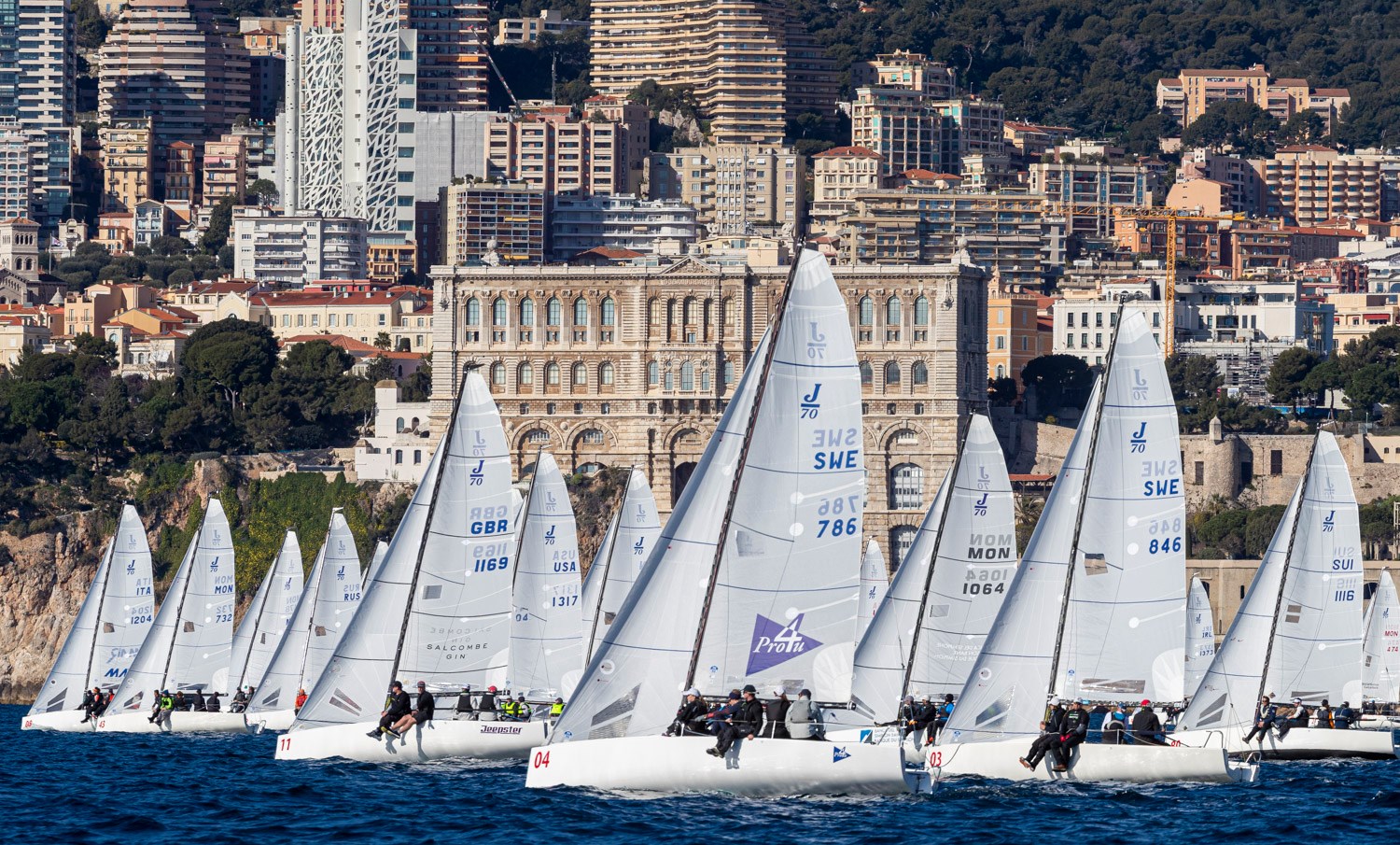
J/70 MONACO PRIMO CUP: PODIUM SWEEP
J/70 PODIUM SWEEP AT THE PRIMO CUP
A Preview of the 2021 J/70 Worlds Venue
📸 Yacht Club de Monaco
Beautiful Monaco Yacht Club hosted the 36th Annual Primo Cup, the 4th act of the European Circuit. North Sails expert Alex Curtiss sailed on Good to Go and shared his experience about the regatta, and also took some notes about the 2021 J/70 World Championship venue.
North Sails clients couldn’t be happier with their results. The top four boats used the fast North J/70 designs. Congratulations to the Russian team ELF for winning the 36th Primo Cup using the North F-1 Mainsail, J-6 Jib and AP-1 Spinnaker.
Here are Alex’s notes about the venue for the 2021 J70 Worlds in Monaco for those planning to attend:
Breeze Conditions
The dominant wind directions are E, SE, ESE, SW, WSW, and W. If the breeze is directly onshore, it has a tough time climbing the mountains that line the bay so it is a very fickle wind. If the breeze comes from offshore, the breeze will land about 10 miles away so there is hardly any wind in the bay.
Sea State
Expect a lot of chop. The city sits in a horseshoe-like part of the ocean. When waves roll in, it’s like a washing machine. There are no beaches and only concrete walls that reverb water. Expect to keep the bow down!
The Yacht Club
Monaco Yacht Club is extremely hospitable. They sectioned off large parts of the club for competitors to take advantage of. We spent a lot of time at the Sports Bar, which has an epic view of the city. Everyone who works in the sailing portion of the club is super helpful to all competitors. They are generous with lending tools when needed — and we needed a lot!
Accommodation
The Fairmont is walking distance from the club. There are great restaurants in the hotel and you can walk to the casino. Bring your sports jacket and you will fit anywhere in the city!
If you are planning on sailing in the 2021 Worlds, it would be very advisable to sail the winter series. There were 65 boats on the line this past weekend at the Primo Cup. It is a very tough fleet with high-profile teams, and mixing that with the challenging conditions is going to keep everyone working hard the entire time. Based on what Alex experienced, doing your homework and making sure you spend some time sailing at this venue will be key.
Interested in a new main or jib for your Worlds inventory? Contact your local expert today. Have questions about the Worlds venue? Alex Curtiss is here to help.
Congratulations to the Russian team ELF for winning the 36th Primo Cup powered by North Sails! 📸 Yacht Club de Monaco
📸 Yacht Club de Monaco
READ MORE
READ MORE
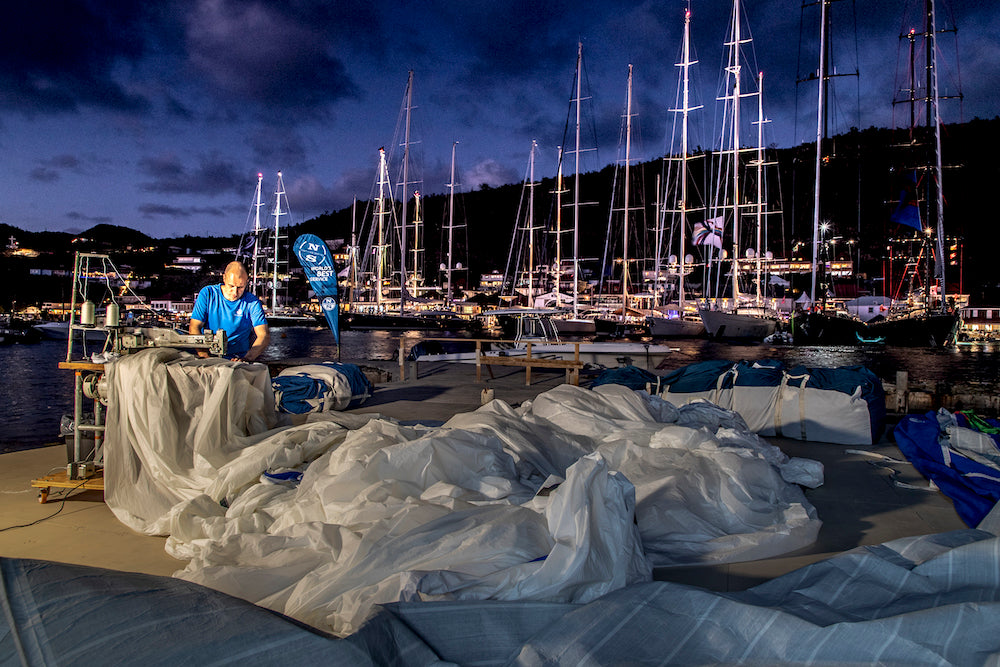
2020 SUPERYACHT EVENT SERVICE SCHEDULE
NORTH SAILS 2020 SUPERYACHT EVENT SERVICE SCHEDULE
Regatta Repair and Support On The Global Race Circuit
North Sails Certified Service gives Superyacht crews and boat owners the benefits and convenience of experience through a global network of sail lofts and Regatta Repair pop-up lofts. With unparalleled experts, technology and 14 dedicated Superyacht service lofts across five continents, North Sails is uniquely positioned to handle the logistical needs to repair Superyacht sails.
There are 10 regattas on the 2020 global Superyacht racing circuit where North Sails is equipped for overnight repairs. Our team of service experts will be onsite to offer an easy and accessible solution for all boats competing. See the event list below for specific dates and locations.
Beyond the 2020 season, the North Sails team in New Zealand is ready to welcome the many Superyachts who will travel to Auckland for the 36th America’s Cup. Our team of sales and service experts is available to support you with all your Superyacht service needs.
READ MORE
READ MORE
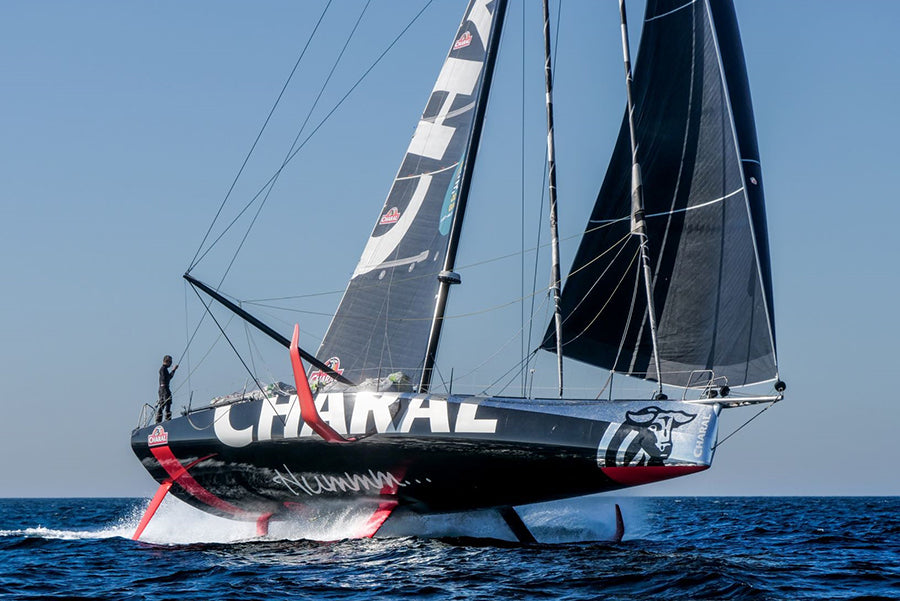
LE CONCEPT HELIX : LA VITESSE D’ABORD
LE CONCEPT HELIX : LA VITESSE D’ABORD
En vue de la préparation au Vendée Globe 2020, certains IMOCA ont bénéficié de nouvelles technologies dont la voile Helix.
© Gauthier Lebec / Charal
Plus de la moitié des IMOCA qui ont disputé la Transat Jacques Vabre en novembre 2019 portaient une garde-robe North Sails. Parmi ces IMOCA, six voiliers récents à foils ainsi que d’autres plus anciens ont bénéficié, en vue de la préparation au Vendée Globe 2020, de nouvelles technologies dont la voile Helix. Cette dernière redéfinit sans aucun doute la performance en course au large. Alors que ces bateaux dernière génération sont encore en rodage, la structure Helix semble un atout encore plus intéressant qu’on aurait pu l’imaginer. Gautier Sergent, responsable R & D chez North Sails, qui travaille en étroite collaboration avec les équipes IMOCA, nous fait le point.
Quelles sont vos impressions aujourd’hui sur les voiles Helix en IMOCA ?
Le potentiel de ces voiles est flagrant. Les charges sur le gréement monotype en IMOCA sont explicitement limitées. C’est précisément là que la technologie Helix intervient. Dans les premières confrontations réelles comme le Défi Azimut et la Transat Jacques Vabre, les bateaux équipés par North Sails, tels qu’Apivia et Charal, ont dominé les podiums comme les places d’honneur.
La voile Helix n’est pas nouvelle à North Sails. Nous en avons fabriqué des centaines (plus de 500 même) et nous ne nous lançons pas dans l’inconnu. Néanmoins, nous ne sommes qu’au début de la préparation au Vendée Globe. En effet, nous apprenons énormément des bateaux dernière génération et comment tirer la quintessence du concept Helix sur chaque type de voile dans diverses conditions. L’équipe North Sails France et moi-même avons passé d’innombrables heures à travailler avec les teams et les concepteurs / designers pour affiner les modèles numériques et comprendre les critères de performance. Nous avons désormais entamé la phase de confrontation à la réalité, du développement du bateau sur l’eau.
Les IMOCA seront menés en solitaire pour le Vendée Globe et en équipage pour la Ocean Race (ex Volvo Ocean Race). Il peut être difficile d’identifier les implications qui découlent des modèles numériques. Où met-on le curseur ?
La question n’est pas de savoir si les voiles seront Helix ou non. La question est de savoir quel pourcentage de charge fait-on passer par la voile et ce qu’il reste sur le nerf de guindant pour chacune des voiles en prenant compte de tous les paramètres de dessin de voiles : creux, position de creux, rond de guindant, vrillage de chute etc.
Pouvez-vous décrire la technologie de partage de charge ?
On parle de partage de charge pour évoquer le ratio de charge d’amure distribuée dans le guindant de la voile par rapport à celle qui passe par le nerf de guindant ou l’étai. La structure et la forme de la voile sont conçues en conséquence. Cela semble simple, et ça l’est à vrai dire. L’astuce consiste à trouver le bon rapport pour l’utilisation envisagée et ce que cela implique pour la forme de la voile. Il s’agit également de trouver la bonne raideur de câble afin qu’il interagisse harmonieusement avec la forme volante sur l’ensemble de la plage d’utilisation.
Pourquoi Helix et le partage de charge sont-ils avantageux pour un programme IMOCA ?
Nous savions que la structure Helix conviendrait à la classe IMOCA à plusieurs égards. Premièrement, Helix permet d’accroître la plage d’utilisation d’une voile. Les changements de voile en IMOCA sont très pénalisants, comme nous l’avons vu dans le Défi Azimut et la Transat Jacques Vabre, riche d'enseignements pour les allures portantes notamment. Avec le système Helix, vous pouvez vous concentrer sur la vitesse du bateau dans un éventail de conditions accru et ne pas perdre des milles à cause de changements de voile coûteux. La deuxième raison est la limite de charge imposée par les gréements monotypes alors que les foils peuvent générer un couple de redressement dynamique nettement supérieur. En transférant une grande partie de la charge de drisse / amure dans le guindant de la voile, on diminue les tensions dans le gréement sans compromettre le devers de guindant. C’est particulièrement bénéfique quand le bateau vole sur ses foils, accélère et génère de plus en plus de couple de redressement. Enfin, compte tenu de la nature dynamique, pour ne pas dire instable de ces bateaux, il est important d’avoir très peu de devers de guindant pour que la forme volante soit stable et convertisse tout changement de vent apparent en force propulsive et non latérale. Les IMOCA ne sont pas autorisés à se doter de plans porteurs arrières sur les safrans, et naviguer dans une mer formée au large est un véritable rodéo, avec des accélérations brusques suivies de décélérations tout aussi nettes, un tangage et un roulis très dynamiques. Être capable de maintenir les forces aérodynamiques projetées vers l’avant atténue les mouvements du bateau et augmente ainsi les vitesses moyennes.
© Jeremie Lecaudey / BPCE
Quels sont les gains de performance permis par Helix ?
La vitesse ! La vitesse ! Et plus de vitesse ! Helix apporte de la polyvalence, c'est à dire une capacité de réglage via la charge d'amure réduite, offrant la possibilité d'adapter la forme volante à vos conditions. La jauge IMOCA n’autorise que 8 voiles à bord et les changements de voile sont très pénalisants. C’est d’autant plus vrai que les nouveaux bateaux sont beaucoup plus rapides que la génération précédente à certains angles. Les milles défilent lorsque vous naviguez à 90 degrés de la route et que vos adversaires sont sur le cap à plus de 25 noeuds…
Le 3Di est particulièrement adapté à la technologie Helix en raison de son ratio élasticité / poids inégalé. Un petit ajustement entraîne un changement notable de la forme volante. Le 3Di a aussi la capacité à supporter des charges élevées tout en gardant les voiles légères. Sans parler de la répartition minutieuse de la densité et de l’orientation des filaments permettant de gérer les charges secondaires sur le biais lors de l’enroulement. L’autre paramètre majeur est que les bateaux naviguent selon deux modes distincts : en archimédien (non volant) et en vol (en appui sur les foils). Cela signifie de grandes variations de vent apparent. Les voiles Helix délivrent une puissance constante et propulsive au bateau. On atteint alors des moyennes élevées plutôt que des accélérations furieuses qui se terminent dans un nuage d’embrun, l’étrave sous l’eau.
Que nous réserve la classe IMOCA et comment North Sails assiste ses clients dans leur préparation ?
Les équipes ont commencé à s’entraîner avec leur nouveau jeu de voiles l'été dernier pendant de nombreuses sessions assistées par l’équipe de North Sails France, puis à régater dans un premier test en compétition lors du Défi Azimut et sur la Transat Jacques Vabre en novembre 2019, première véritable course au large de ce cycle. Nous les avons aidés à mieux appréhender le concept et la performance des voiles Helix pendant les entraînements, ainsi qu’à affiner les détails propres à chaque bateau et à chaque marin. Nous avons collecté des données de navigation, échangé avec les navigants, identifié des gains et des améliorations à apporter et avons recalibré les modèles afin de poursuivre l’optimisation et atteindre le vrai potentiel du bateau. Tout cela nous permet aussi de mieux comprendre le comportement des bateaux en action et dans diverses conditions. L’équipe de service North a tout mis en œuvre pour assurer le contrôle des voiles et des derniers ajustements avant la Transat Jacques Vabre, une course majeure et très prisée. Pour nous comme pour les équipes, l’idée est de capitaliser sur les enseignements que l’on peut tirer de cette course. Le temps en mer, surtout en compétition est précieux. D’autant qu’en double, la cadence peut être un peu plus constante et la façon de naviguer plus agressive, notamment avec une pénalité à la manœuvre légèrement réduite. Mais ce n’est qu’un tremplin sur la route du Vendée Globe, et souvent le vrai premier test au large pour les bateaux nouvelle génération ainsi que les bateaux dotés de nouveaux foils. Après ces premiers enseignements, les équipes mettent à profit la saison hivernale pour effectuer des modifications sur leur machine et leurs équipements. Les prochains tests grandeur nature seront The Transat en mai et New York - Vendée en juin, deux courses en solitaire cette fois pour s'approcher un peu plus encore du format du Vendée Globe.
READ MORE
READ MORE
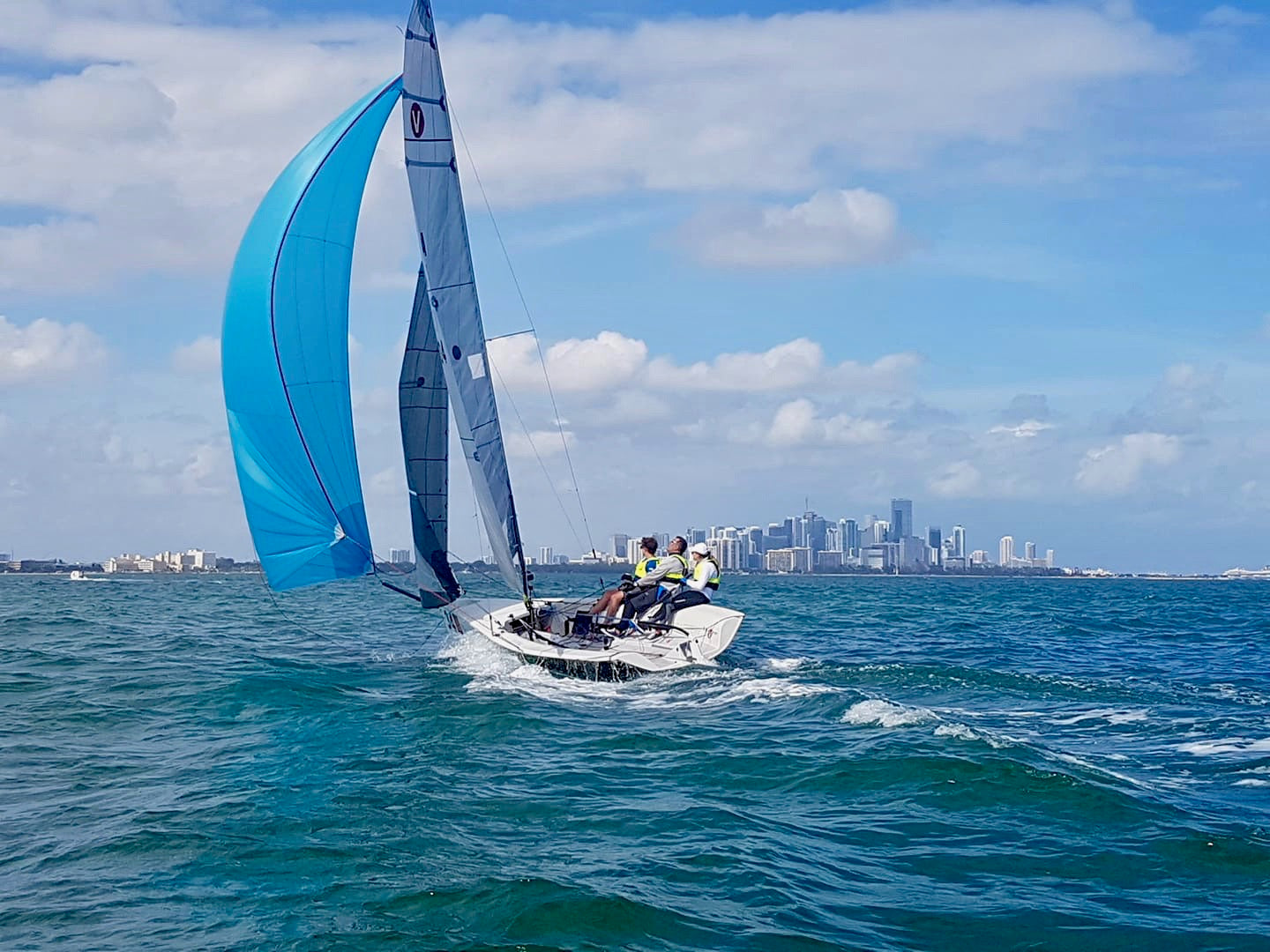
BENVENUTTI WINS VIPER 640 WINTER SERIES
BENVENUTTI WINS VIPER 640 WINTER SERIES
Key Tips for Sailing in Heavy Hair
The third regatta of the Viper and VX One Winter Series in Sarasota, Florida delivered excellent weather, friendly competition, and a great onshore atmosphere. After enjoying a Saturday debrief led by our experts, North Sails customers took all but two of the top ten places in both classes. In the Viper, Peter Ill won with North Sails expert Austin Powers on board, while the VX One class was won by Esteban Forrer and Hayden Bennet.
The Viper class also concluded its three regatta winter series, which was won by Jackson Benvenutti with help from Jesse Fielding, Jan Majer, Nick Ward, and Chris Morgan.
Sunday’s 18-22 knots allowed teams to test out their heavy air prowess upwind, while going for top personal speeds downwind. (One VX One posted a 19.2 knot 10 second average). While straight line speed was fun, many Vipers and VX Ones wiped out while jibing. Gybing in big breeze takes lots of practice and crew coordination, but here are some tips to help keep the boat on its feet.
Keep the boat moving into the jibe
Time and time again, I see crews take their attention off going fast when setting up for a jibe. If you slow down before jibing, the boat loads up as the apparent wind increases on the sails and gets knocked over as soon as the boom crosses. Instead, heat up to increase boat speed just before you jibe and minimize the apparent wind. This keeps the boat under a more consistent load, making it much easier to keep the boat underneath the sails. Picking a wave to jibe on always helps as well.
Use a blow-through jibe
When the driver starts the turn, overtrim the sheet until the clew comes back to the shrouds. As soon as the kite backwinds, the driver should slow the turn to allow the trimmer time to pull the new kite sheet through. Once the kite fills, the driver slowly heads up to the final course.
“When you do wipe out”
We’ve all been there. When you do wipe out, blow the spinnaker halyard halfway until the boat is back on its feet again. Overtrim the jib to turn downwind, and then rehoist the kite to get moving again. If the boat stays on its side even after the spinnaker halyard is dropped halfway, try pulling the clew around the headstay to help get the boat pointed downwind and in control again. Then re-hoist the spinnaker.
Next Viper stop: Gulf Coast Championship in Fairhope, AL. See you there!
Left-right: Viper Winter Series champions on Psycho Tiller! | 2nd Place Winter Series Peter Beardsley on “Great Scott” | 3rd Place Winter Series 3 Peter Ill (winners of event 3)
READ MORE
READ MORE
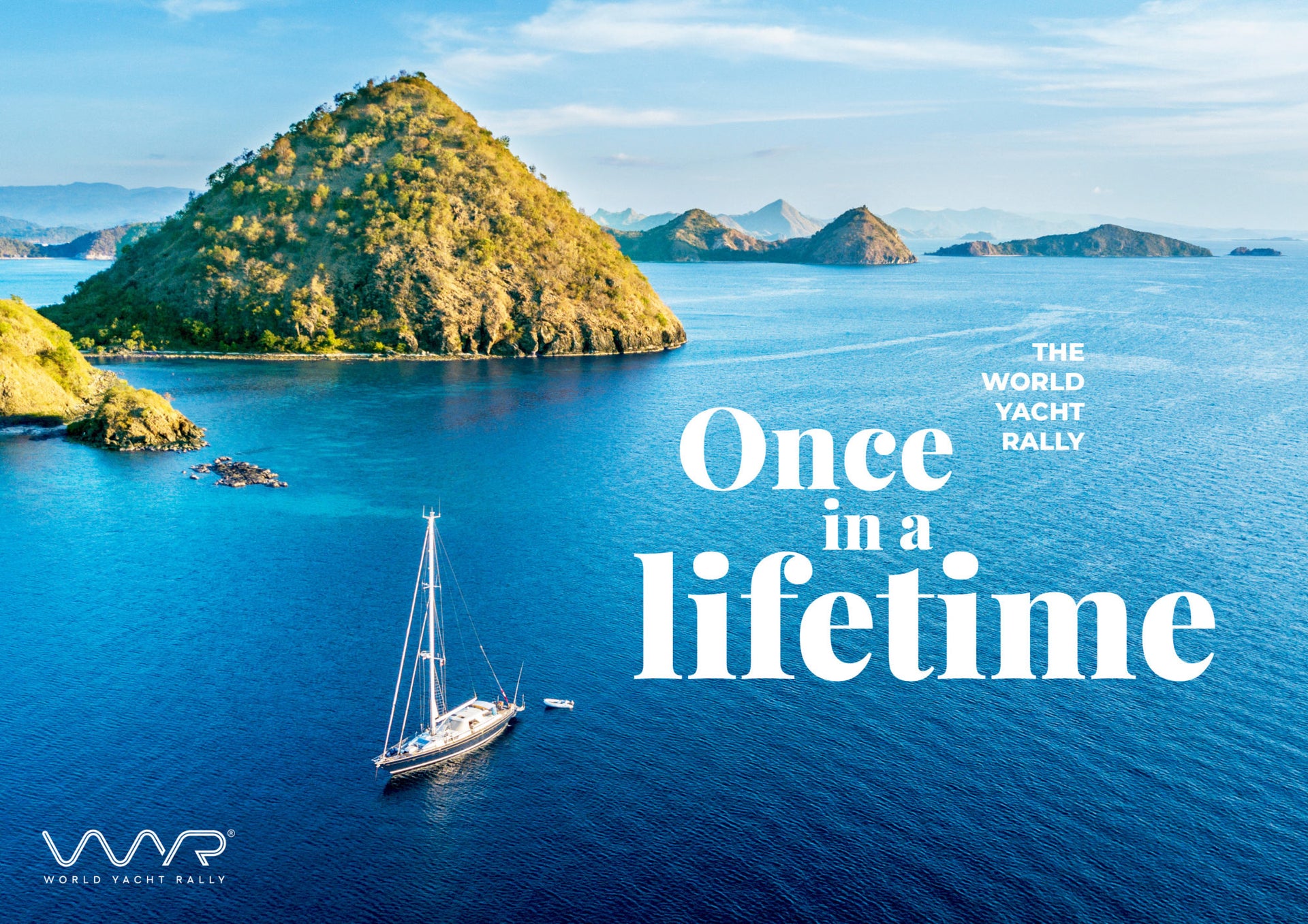
REGISTRATION IS OPEN FOR THE WORLD YACHT RALLY
NORTH SAILS IS A TECHNICAL PARTNER TO THE WORLD YACHT RALLY
Registration is Open for an Exciting New Cruising Rally Concept
North Sails is excited to partner with the World Yacht Rally to bring a new concept cruising rally to life. Developed by Volvo Ocean Race shore team veterans, the World Yacht Rally aims to bring the best of professional race team support and route planning to the participating cruising yachts. North Sails is signed onto the rally as a Technical Partner to provide race participants with unmatched sail care through the almost 40,000-mile route.
Set to start in Alicante, Spain, the World Yacht Rally is a seventeen stop, two and a half year adventure for cruising boats 50’ and above. There are two slots open to begin the rally; November 2020 and November 2021. Participation is limited to 30 yachts and, the rally entry fee includes weather routing, security assessment, berthing, medical support, safety training, administrative support, social events and the yacht service support needed to sail around the world worry-free. Participants will also have the option to access the World Yacht Rally crew pool of professional sailors, charter their vessel for legs and benefit from logistics, travel and supply support from the rally organizers.
Commenting on the partnership, Nick Bice of the World Yacht Rally, “Having worked alongside North Sails for many years during our Volvo Ocean Race days, there is no better solution to cover all the bases when setting out on such an adventure. Built on a foundation of Grand Prix sailing, North Sails is a fantastic addition to the professional level of service the World Yacht Rally is aiming to deliver.”
North Sails President Ken Read concluded, “Like the rally management team, North Sails has experience helping sailors get around the world safely. The World Yacht Rally is an exciting concept for our company as we now have an opportunity to show our offshore experience to a new and important group of sailors. Many people in the sailing world know North Sails as a racing company, and the same reliability and sailor support we provide for racers are the same requirements cruising sailors need to make their passages safe and enjoyable. The World Yacht Rally concept is unique in that the level of support participants will receive through their experience is unlike any cruising rally to date.”
Learn more about how to register for the World Yacht Rally.
About the World Yacht Rally:
The World Yacht Rally is a once in a lifetime adventure taking you to breathtaking locations and several impressive metropolises. An adventure in which you are supported and where you can take the time to enjoy and explore each location you cruise to. An adventure where you’ll meet new cultures, new friends and finally get to fulfill that dream – sailing round the world.
We provide the support to ensure you have everything you need to sail safely, comfortably and as worry-free as possible. Each of our team has worked as part of the Volvo Ocean Race – running the Boatyard, directing all on water-matters, managing race teams or preparing stops. We were responsible for providing all of the support elements we offer as part of the WYR to the best ocean sailors in the world and know what to expect from a circumnavigation, how to prepare for it and handle the unexpected.
READ MORE
READ MORE
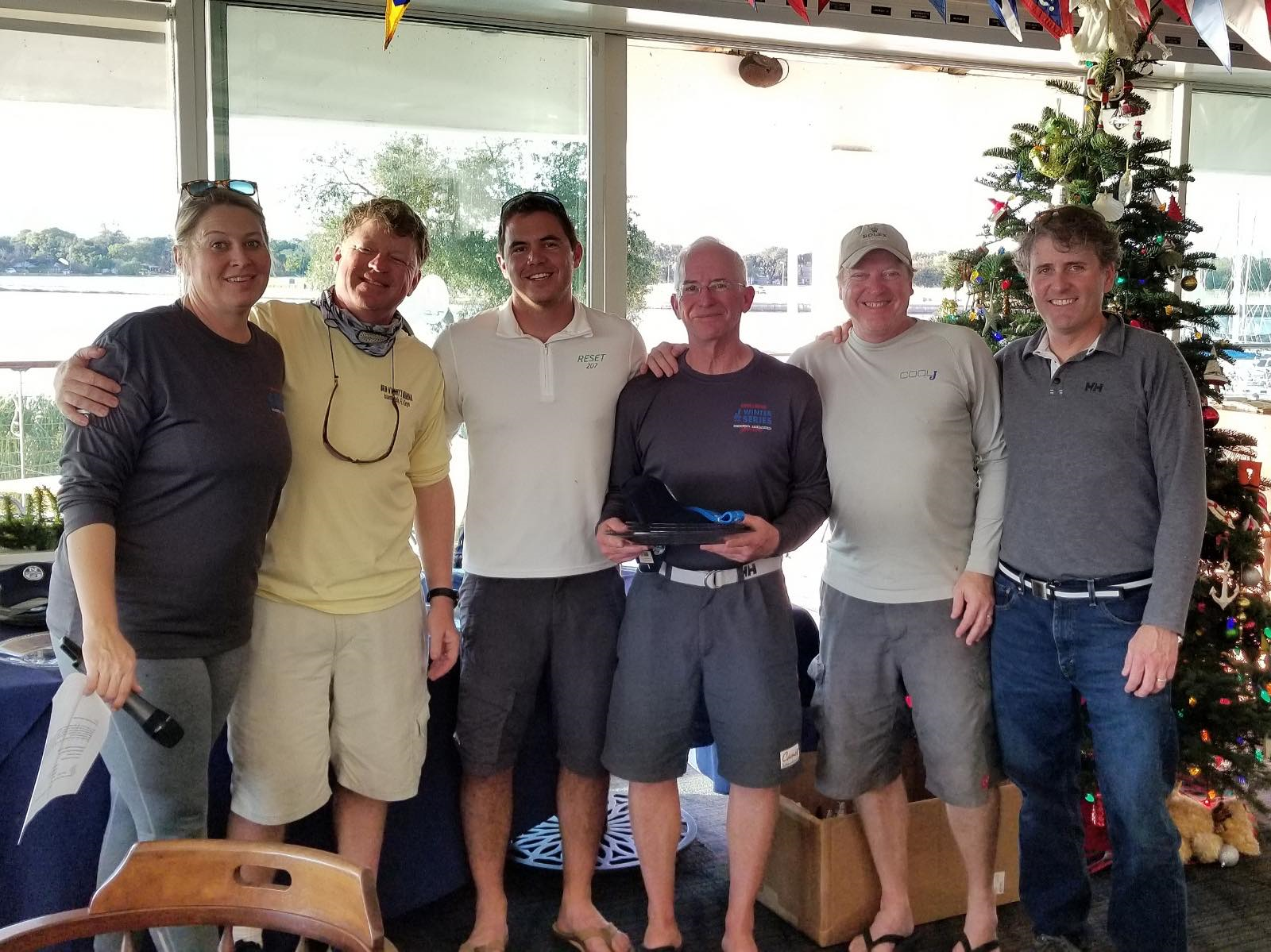
WINTER SERIES WRAP UP
WINTER SERIES WRAP UP
Sailors Fly South For The Winter Series Events
When sailors want to compete in the winter months, they head to Florida to sail in the winter series events since there are plenty of one design sailing fleets that are actively racing. Florida offers an astounding number of Winter Series events in various locations, so no matter what your flavor of One Design Racing, there is a series for you. No surprises here but it's just great to see our local sailors from Annapolis representing down there all winter long. Check out how many of our local sailing heroes have made the trip down to FL to race this winter.
J70 Davis Island Series
Ayacucho - James Gary, Travis Carlisle, Edward Gary, Pat Isherwood, Lexi Foos
Building A - (Crew) Allan Terhune, Cate Terhune, Austin Powers
Columbia - (Crew) Ian Moriarty
Danger Mouse - Taz Coffey, Kristen Berry
Down the Line - Dave Manheimer (JWorld)
Phoenix - Peter Firey and Team
Planet Claire - (Crew) Zeke Horowitz and Mike Coe
Viper640 Sarasota Series
Evil Hiss - Mary and Geoff Ewenson
Caterpillar - (Crew) Austin Powers
Gnixe - Bill Vickers / Chip Steiner
J70 Bacardi Miami Series
NINE - (Crew) Ian Coleman
Empeiria - (Crew) Zeke Horowitz
Rimette - (Crew) Allan Terhune
Bazinga! - (Crew) Kristen Berry
Weight Up! - Harry Brigham, Keith Hahn, Shannon Lockwood, Ian Moriarty
Etchells Miami Series
Playmaker- Allan Kelly
Goombay Smash - Chris Larson
Shades- Geoff Ewenson
VX One Sarasota Series
Alternative Facts- Paul Murphy
READ MORE
READ MORE
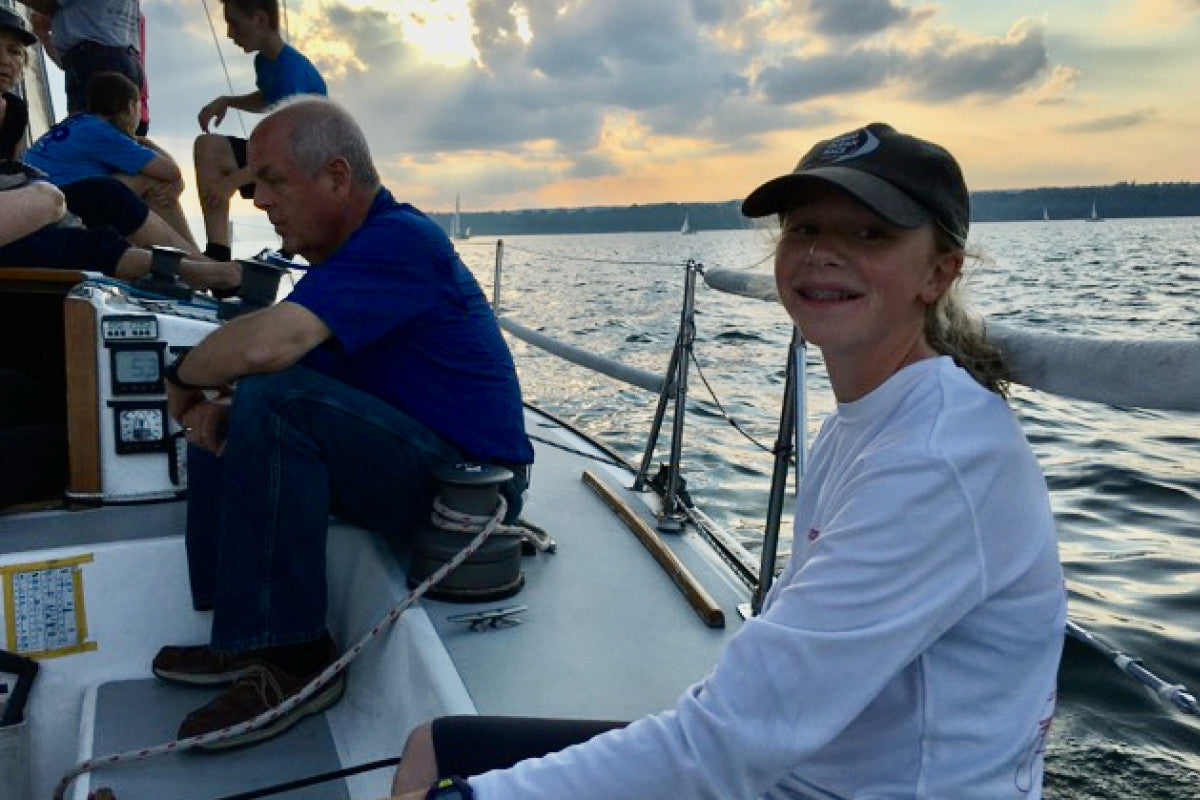
MY FIRST SUSAN HOOD TROPHY RACE
MY FIRST SUSAN HOOD TROPHY RACE
Zoe Folsetter Reflects On The 75 NM Overnight Race
Zoe and her Dad, North Sails Hamilton Area Rep Doug Folsetter sail out of the Royal Hamilton Yacht Club and make it their goal to sail as many different boats as possible.
Tell us about yourself and what you’re sailing?
I currently sailing the Laser 4.7 / Radial and will be on the Ontario Sailing Team development squad this year. Before the Laser, I raced Optimists and was on the Canadian Team for 2 years. I was fortunate enough to race in cool places like Chile and Uruguay. I also sail two nights a week in Hamilton - on Tuesdays I race on a J/35, and on Thursdays I race with my Dad on his Viper.
How did you start sailing?
I started sailing at the Royal Hamilton Yacht Club when I was 6 in the discover boating program, and then the following 5 years, I sailing at the Stony Lake Yacht Club near my cottage. That was where I did my first regatta. It was a small regatta called the Cottage Club Regatta, where all of the boats are from the neighboring lakes.
How old were you when you did your first overnight race? What race was it?
I did my first overnight race when I was 12 years old - it was the Susan Hood race in 2017. The Susan Hood is a short overnight race starts in the evening in Port Credit and goes to Burlington, Niagara on the Lake and back. It takes about 10-15 hours for the faster boats and up to a day for the slower boats, all depending on the weather.
How did that come about?
My dad told me that he was doing the race and I jokingly asked if I could come, not thinking that there was a chance he would say yes. But he did! I really didn’t know what to expect nor did I know what I was getting myself into.
Tell us about the boat, the crew?
I sailed on a J 92 from Olcott Yacht Club in New York. On the boat, was my Dad and me, the skipper Andy and his 16 year old son, and the North Sails rep from Buffalo, Louis Johnson. It’s a fun 30’ boat that's fast, comfortable, and pretty easy to sail.
What position did you have on the boat?
In the beginning, when everyone was awake, I was mainly along for the ride but I helped out where I could, After people starting taking naps, I did a bit of everything but mainly trimmed the mainsail.
Did you enjoy it?
I really liked sailing the Susan Hood race. It's an experience that I won't forget. The part that I enjoyed the most was waking up in the middle of the night and seeing the stars and the cities in the distance. We won the race in our class and overall so that was fun too!
Was there any parts that you didn’t like?
There was no part that I really disliked, but the part that I liked the least was how cold it was. In the middle of the night, in the middle of the lake, I had on every bit of clothing that I brought with me. I was also really tired when we finished. On the way home from Port Credit, I fell asleep in the car before we got to the highway!
How is it different than the kind of sailing that you normally do?
Before the Susan Hood race, I had never sailed at night or done any long keelboat race. I liked the challenge of figuring out what the weather is doing and staying in the best breeze, and changing sails. Sailing at night is really fun too.
Where there any other kids racing?
To my knowledge, there were no other kids racing close to my age. I think that kids who are comfortable sailing on keelboats in any condition should definitely try distance racing if they have the chance. It’s an excellent experience to have. It will also get more people interested in the sport.
What races do you want to do next?
To start off, I think I should do the Susan Hood again because the first time I did it, it was smooth sailing, and I have not sailed much in rough water. I would also like to do the Lake Ontario 300, and if my Dad will let me, I would like to do one of the Mackinac races.
What type of sailing do you want to do when you’re older?
I am not sure what I would like to sail when I am older, but right now, I am really enjoying sailing the Laser and I would like to sail it for as long as I can. I also want to sail on more keelboats and do more offshore racing.
READ MORE
READ MORE
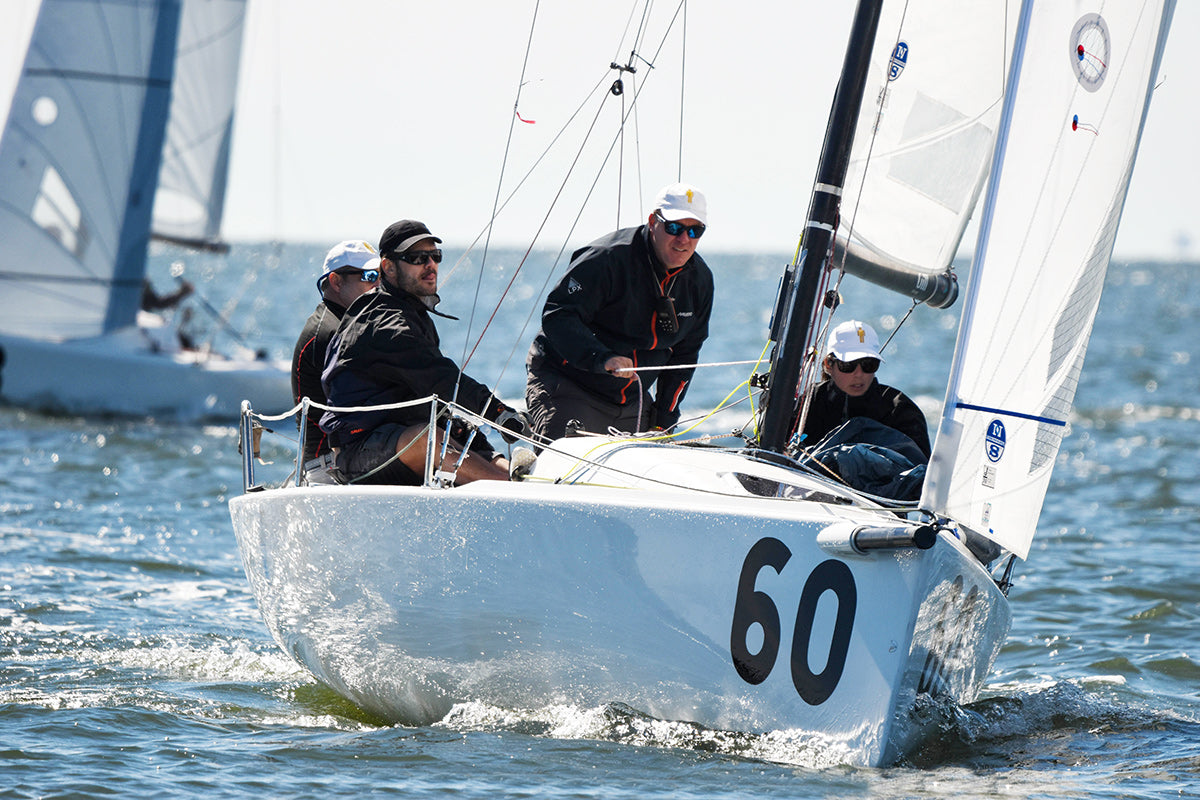
J/70 LESSONS FROM THE DAVIS ISLAND WINTER SERIES
J/70 LESSONS FROM THE DAVIS ISLAND WINTER SERIES
North Sails Expert Allan Terhune Shares Tips From Sailing the J/70
Allan Terhune on Building A. 📸 Chris Howell
This past weekend concluded a great Davis Island Winter Series in the J/70 class. With a variety of conditions and great hospitality from DIYC, this series has become an impressive example of how winter circuits and regattas should be run.
Equally impressive were the results of North clients: 1,2,3,5,7,9 overall and 1*,2*,4,5,7 in the Corinthian division. Congratulations to series winners Brian Keane and Peter Fiery.
Here are the top 5 lessons we took home from the regatta.
Keep the rig versatile
Before each race, I made sure my “normal” setup had the backstay at the middle of its range. Many teams set up more toward the extremes and then struggled with transitions in the puffy conditions. To me, nothing is worse in the flat water off DIYC than having a main too full to depower.
Be patient with the shifts
The easterly winds were both shifty and puffy, and it was impossible to be in phase all the time. When we were on the correct side of the shift, our goal was to go as fast as we could. If we were on the wrong side, we tried to get back in touch to attack on the next shift. It was easy to chase the breeze and continue to lose ground.
Top of the cone: be proactive
The courses were relatively short for 50 boats, so the first weather mark was very crowded. The boats that were reacting to traffic were the teams that were losing. The winners visualized what the next moves would be while keeping an open mind. It is OK to duck a boat or two if you know it will get you to an open lane or layline.
Downwind mode matters
There were times when you were planing, and times when you were not. The biggest mistake I saw was not changing modes decisively. Once the boat behind starts to plane, you have to find a way to match. Even if you aren’t in the same breeze, get off the wing and sail towards the next puff.
Keep calm and sail on
In such variable conditions, it’s very easy to get frustrated about your performance. No matter where you are on the race course or in the fleet, looking forward and being positive is key. Not panicking about your traffic or situation will make the rest of the day go that much better.
Heading to the Midwinters? We have sails in stock ready to be shipped to your door.
Peter Firey’s Phoenix, overall Series winners in the Corinthian division. 📸 Chris Howell
Brian Keane’s Savasana (right), overall winner of the 2020 Winter Series. 📸 Phill Pape
READ MORE
READ MORE
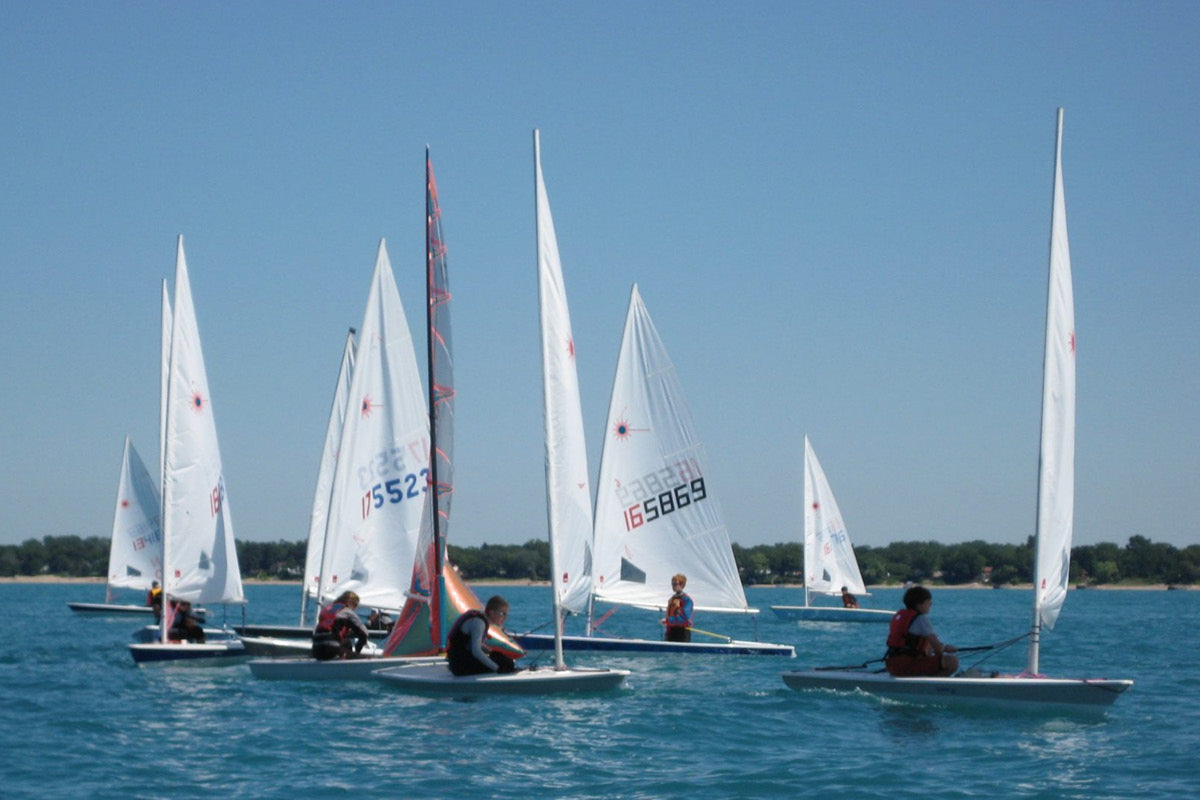
IT STARTS IN JUNIOR SAILING
IT ALL STARTS IN JUNIOR SAILING
One Sailors Journey to Keep Sailing in his Life
Nigel, third from right back row, has been involved in sailing since he was a tiny tot.
Nigel Crosscombe began sailing at a young age through lessons at Etobicoke Yacht Club (EYC) thanks to his Aunt who lived nearby. From the get-go, Nigel became entrenched in the sport and loved being on the water. Fast forward 20+ years and he's still on the water and helping the next generation. When he is not in the classroom teaching, Nigel is a LF with Ontario Sailing, runs his own company focused on sailing education and still actively sails. He shares his sailing story and advice for clubs trying to get more youth involved.
Tell us how you got into Junior Sailing.
Growing up I had an aunt who was very involved in my life and she lived near a yacht club. She always very generous to my sister, myself. She saw a sign, advertising a local sailing program and she thought it'd be a really cool birthday present to gift me a week of sailing camp. I went to sailing camp and then I was hooked and you know, two weeks became a month, which became a whole summer and I wanted to get into racing. I tried racing and I had a really good time, but I wasn't quite old enough to take it seriously. From there, I progressed through the levels very quickly and then became an instructor and for me that, you know, I became a part of a community.
What were your next steps once you became a sailing instructor?
I tried the laser sealing circuit and I was really too young but I was still really keen to go sailing. At Etobicoke Yacht Club, they had a really cool program called the Next Generation Regatta where a bunch of skippers donated their boats and took kids from the sailing school out. The goal was really to get youth from the club and the community out keelboat racing. They'd let you skipper, I mean, they were on board to make sure you didn't crash. After that I found a boat that I clicked with and I, and I got involved in the keelboat sailing seam, sailing C&C 27 out of EYC. Through that opportunity, you know, that's when I really got to learn a lot about racing by being able to take a bit of a backseat role. Now, keelboat racing is what do for the majority of my sailing again.
What is your best advice for yacht clubs or programs to get youth to stay involved? What do we need to do as a community to help keep people involved?
We got a lot of things we get to do, but one of them is definitely to make sure that our sailing clubs are accessible, open and friendly for all. I remember when I was a young kid at a sailing school getting told by a member that we couldn't play over here and we had to go to play over there, and that was a gravel parking lot where they said we could go play. At the same time, you know, I have worked at a lot of clubs that have been very friendly and I've been around clubs that are very friendly for youth and kids. I think when you start looking at the age that you start losing people is around 18. If they don't become an instructor or they leave instructing to pursue a job related to their field of studies they might not come back to sailing. So you have some people who are involved in weeknight racing, but I think a lot of yacht club programs rely on owning a boat and for a lot of people in their twenties, which is when you people can't afford to do it. There's clubs that are doing boat sharing programs, such as National Yacht Club's 420 club where you don't have to own the boat but you still are able to participate in a racing environment, you still have opportunities to continue participating in the sport.
What keeps you coming back?
I love really growing the sport and supporting sailing in all the different forms, through the work I've done with Ontario sailing I've had an opportunity to travel with, see what sailing looks like. I grew up sailing in the Toronto area and it was mostly yacht club based programs. Now I've gone to sailing programs that are in the Muskokas that own one style of dinghies, a shed and they have fantastic programs. But I've learned that sailing looks different all over the place and, and to be able to support those clubs with their growth and development wherever they are, whether it's race or recreational programs, whatever their next step is. If there's a way that I can help them and, you know, give back to the community that gave me the best summers of my life. That's sort of what I'm passionate about in my work as a teacher.
How did you create Crosscombe Sailing?
I had a good friend who went to an overnight camp and they needed a sailing instructor to evaluate bronze five at the time. They didn't have a local instructor and he said any chance you could come to my camp this weekend? And, you know, a deal was made. I went up and I got to work with this camp sailing program, make a little bit of money on the side on the weekend. And you know, for me, I kind of really enjoyed that experience. As I started returning more to my work as a learning facilitator, I realized that there were a bunch of clubs and there was a demand for it . Especially with overnight programs and clubs, a little bit outside of the GTA and just to build capacity; there was a desire for training. Crosscombe Sailing really evolved out of the need for education, especially outside the GTA. A lot of Crosscombe Sailing has come from just saying yes. As long as I feel like it's an appropriate fit and there's a way that I can help them, just say yes to that opportunity. It's something that I've learned a lot through when I was traveling around the world that just say yes and you'd be amazed at where it takes you.
What advice would you give to skippers and clubs to get new members to be involved? How would you get more youth involved long-term?
I think that working with your local junior sail and asking them, in an overall club sense, to create a strategy on how junior sail and your club racing program can work together. As I mentioned, the next generation regatta where you're, you know, giving kids an opportunity to go out on keelboats, giving them an opportunity to drive, make decisions, it allows them to feel that they're involved and that they're not just turning a winch or sitting on the rail or getting told to go down below another racing started. Give them an opportunity to be involved and teach them, train them and they're going to return that investment that you make in them.
Good crew aren't found, they're made.
We need to grow the sport and work on making it accessible. We've got to work on that transition into sort of like what we, in sailing, call long term athlete development (LTD), which is essentially on the one side of the ladder, it's a pathway from being first contact with the sport to the Olympics. But on the other side it's sailing for life. The idea behind sailing for life is that eventually you might not decide that competition's not for you, but that's okay, because there's this whole other aspect of the sport that becomes a lifestyle, a community.
READ MORE
READ MORE
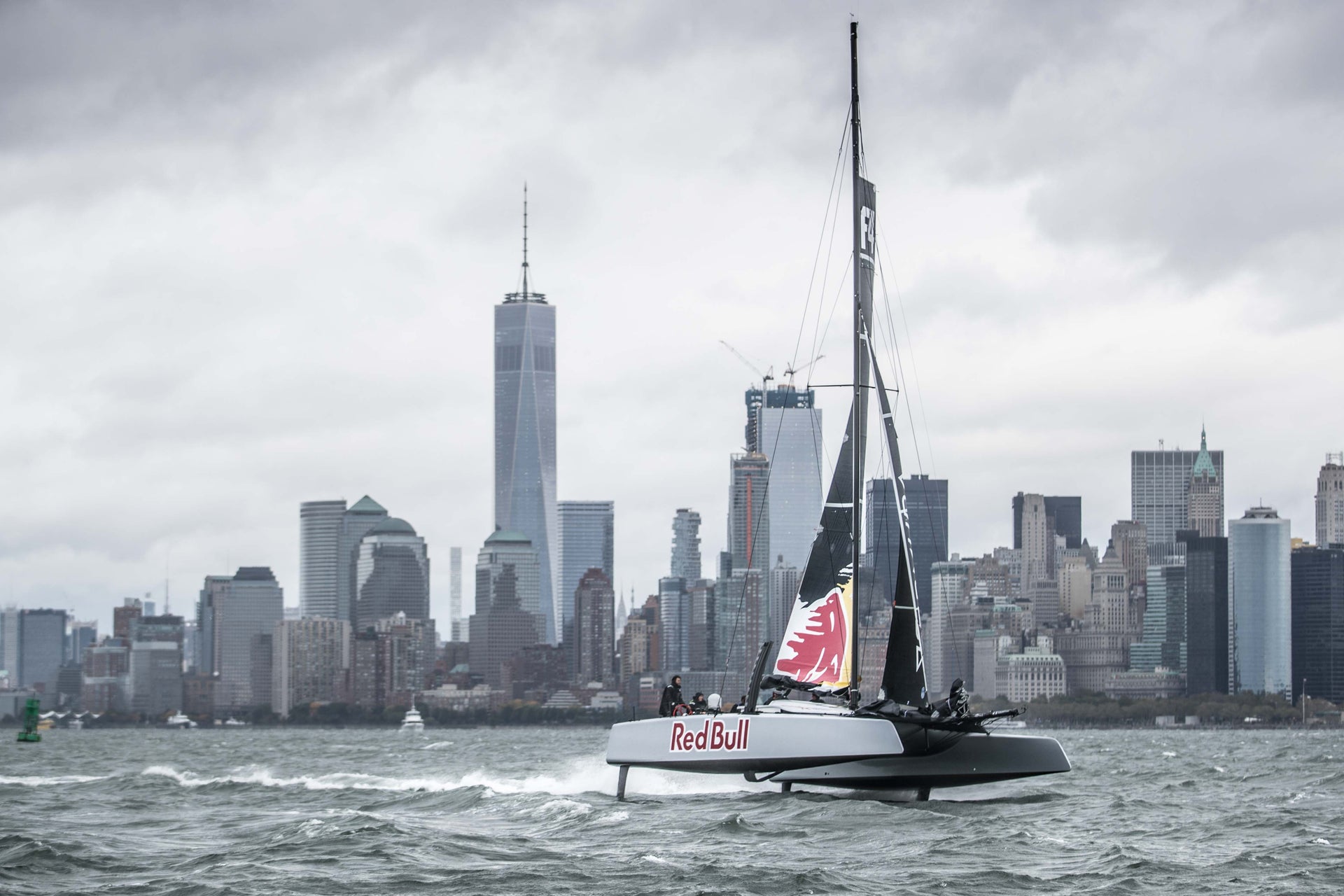
SPAN SQUARED
SPAN SQUARED
What Does It Mean When Wings Create Lift?
© RedBull G2
When a wing (like a sail or a keel or centerboard) produces lift, an accompanying drag force is generated called induced drag. This is related to pressure that is lost around the wingtip and the formation of vorticity. A wing is considered to be more efficient if it produces lift with less induced drag.
Common understanding is that induced drag is lower for higher aspect ratio wings. This is apparent by reviewing the standard equation used to calculate induced drag which contains the term aspect ratio. The problem with this equation is that it defines the value of the induced drag coefficient using the lift coefficient, which is not necessarily constant depending on how aspect ratio is changed.
The equation is useful in situations where the wing area is the same, such as these two wings. Notice that while they have the same area, they have different spans.
A useful definition is to relate aspect ratio to the span and area rather than to the span and chord. This is particularly handy
for tapered wings.
Lift coefficient and drag coefficient are non-dimensional terms that indicate how hard a wing is working regardless of speed or size. Dynamic pressure, which depends on the velocity squared, and area are divided into the lift and drag forces to define these coefficients. As area changes, the coefficients required to generate the same force will change proportionally.
Since the equation for induced drag coefficient relies on the lift coefficient, it is susceptible to changes in lift coefficient that can occur as the aspect ratio changes. For a fixed amount of lift (force, not coefficient), if the aspect ratio is increased by making the span longer while keeping the chord length the same, which adds area, the lift coefficient will be decreased due to the greater area. If the aspect ratio is increased by keeping the span the same length and decreasing the chord length, then the lift coefficient will be increased due to the smaller area. When aspect ratio and lift coefficient both change, it becomes more complicated to assess what the affect is on induced drag.
There is a simpler way to understand how induced drag is affected. By performing some appropriate substitutions in the induced drag equation and simplifying the terms, we define the induced drag force rather than the induced drag coefficient.
The result is that this equation shows that induced drag is proportional to the lift force (not coefficient) squared divided by the span squared. This means that span, not aspect ratio, is the determining factor for the efficiency of a wing. Area and chord do not appear in the final equation and do not impact induced drag. They do affect the viscous (frictional) drag, though.
Unlike the original induced drag coefficient equation, which implies that induced drag is dependent on aspect ratio (but only when the area is kept constant, meaning that as aspect ratio is changed, chord and span are modified to maintain the same area) this equation demonstrates that the induced drag force is really dependent on the amount of lift squared and the span squared. This reveals that the reduction in induced drag in the previous span comparison example is really due to the increase in span. The power of the squared term is significant because, for example, if span is doubled, the induced drag is decreased by a factor of four. Even a 10% increase in span results in nearly 20% less induced drag.
Understanding that induced drag is inversely proportional to span squared has value to improving sailing performance.
A common misconception is that a centerboard or keel with shorter chord but the same span is more efficient because it has higher aspect ratio. When we recognize that when span is the same, induced drag is therefore the same, we can properly attribute any performance differences experienced to the difference in area. These differences relate to the viscous drag instead, which is the friction of the fluid flowing over the surface and is dependent on the area, and also to changes in angle of attack (leeway and apparent wind) that occur as area is changed.
An example of the affect of span on sails that is common for many one designs is that as speed increases, raking the rig aft has been found to be beneficial to performance. This can be explained through span squared.
After a boat has reached its righting moment limit (crew fully hiked or trapezing, or practical limit of heel for a keelboat) the amount of force that the sails produce cannot be increased any more (without causing excessive and detrimental heeling). In order for the boat to go any faster, the drag needs to be reduced. The longest edge of the sail is the leech, which as the rig is raked aft becomes more vertical and maximizes span. So, with the same lift being produced over a sail with greater span, the induced drag of the rig is reduced and the boat can sail faster. In the most extreme case, comparing an upright luff to an upright leech, the induced drag would be decreased by the ratio of the luff length divided by the leech length, squared.
Another benefit of raking the rig is that the clew becomes closer to the deck, and as the trailing edge approaches being sealed, there is less pressure lost around under the boom and the sail becomes more efficient. Span-wise change in pressure differential is what causes vorticity to be shed from the trailing edge. Increasing the distance between the vorticity shed from either end, or reducing the vorticity shed yield higher effective span, hence lower induced drag.
Since drag also contributes to heeling, a lower heeling force allows the total force on the sail to be increased up to the righting moment limit, further increasing the boat’s speed.
When the rig is raked aft to maximize span by making the leech more vertical, the height of the sail is slightly lowered becoming closer to the water where the wind velocity is lessened by friction with the water surface. While this is not a problem once the boat has reached the righting-moment- limited condition where de-powering (and drag reduction) becomes necessary, it might explain why it is not always advantageous to sail with the rig raked aft in lighter wind conditions when creating more sail force could be the overriding factor.
As the rake of the rig is changed the location of the sail’s force moves with it. This changes the loading required on the rudder in order to make the boat sail straight. While this may limit mast adjustment, the potential benefit creates incentive to discover how to set up the boat to take advantage of the lower induced drag of a more raked rig.
The concept of span squared can also be used to determine the optimum rudder load, either to define the reasonable extent of mast rake or to minimize the drag of the underwater foils for a fixed mast location. The keel (or centerboard) and rudder should both contribute to the boat’s side-force to counteract the sail’s side-force. Determining the appropriate load for each can produce significant performance improvements.
While there are some interactions between the two foils, a simple approach to determine the minimum induced drag is to treat each foil as isolated and sum the drag of each. The result with the least induced drag is that the foils should contribute to side-force proportionally to the ratio of their spans squared.
It is important to consider the span as twice the physical span of the keel or centerboard because it is sealed against the bottom of the hull, which acts as a reflection plane. This is because the pressure differential across the sealed foil is maintained at the hull intersection as if there were a reflected image of the keel protruding upward. A completely immersed rudder that is sealed under the hull can also be considered to have a reflected image that doubles its physical span, but a transom hung rudder that pierces the surface of the water would only be considered to have its physical span without a reflected image. This is because the water surface can deflect due to the pressures imposed on it by the surface piercing foil. As the water surface deflects, the pressure differential at the surface is degraded and the surface piercing rudder loses the benefit of a reflected image.
The difference in effective span between an immersed rudder and a transom-hung rudder indicates that most keelboats (with immersed rudders) should be sailed with more rudder load than most dinghies (with transom-hung rudders).
An additional factor is that as rudder load is increased through deflecting the rudder, the leeway angle of the boat is decreased. Decreased leeway has the additional benefit of a higher apparent wind angle and the opportunity to produce higher sail force. This makes it is very beneficial to deflect the rudder at least to the angle that produces minimum induced drag for the whole boat and gain low induced drag, a higher apparent wind angle and larger sail force, and less leeway, all of which contribute to better pointing. It could even be useful to sail with the rudder deflected somewhat beyond the loading that minimizes induced drag. The small additional increment in induced drag for a modest increase in rudder angle could be offset by further improved pointing ability.
A boat with a gybing centerboard or adjustable flap on the keel already has the capability to reduce leeway and improve the apparent wind angle and may not benefit as much from overloading the rudder as much as a boat with a fixed centerboard or keel.
Since sailing with the appropriate rudder load can have a significant affect, particularly in one-designs where there are limited opportunities for performance improvement, it is valuable to determine what the target rudder angle should be. Assessing the issues for a specific boat requires knowing the dimensions and loads. These can be analyzed to produce specific target settings or designs (if allowed).
Here is an example of how induced drag is minimized through optimizing the load sharing of the keel and rudder.
The total amount of side-force that the keel and rudder produces is kept constant but the amount of side-force that each contributes is varied. By ignoring the affect of each component on the other (a simplification that is more valid as the distance between them is large), the induced drag of the keel and rudder can be calculated separately and added together. In this example the keel span has been chosen to be four and the rudder span to be three. The units do not matter, since we are merely looking at the proportionality of the load. Assuming 100 total units of lift, induced drag is shown for several possible load distributions. Note that minimum induced drag occurs when the load is distributed proportionally to the ratio of the span of the keel and rudder, squared (for example 64/36 = 8/6 squared, and 88/12 is close to 8/3 squared).
The example is shown two ways: with an immersed, sealed rudder that benefits from a reflected image with twice the span, and with a transom-hung, surface piercing rudder that only has an effective span equal to its length. The lower induced drag with the longer effective span rudder is dramatic. But what is important to recognize is that the optimum load sharing distribution is quite different between the rudder styles.
While the longer acting rudder can take 36% of the side-force leaving 64% for the keel, the shorter acting rudder can only take 12% of the side-force leaving 88% for the keel. That causes the lowest possible induced drag value to be 37% higher in order to produce the same 100 units of side-force. Again, the units are artificial, as the constants dynamic pressure and pi have been left out of the equation so we can just look at proportional relationships. A similar amount of drag reduction could be expected for the same style rudder that was replaced with one that had twice the span.
Within the constraints of one-design rules, that type of change is usually not allowed, but there is still the potential to achieve a load sharing that yields the lowest possible induced drag for the configuration. The increases in induced drag as the proportions are varied away from the optimums are shown and give incentive to set the boat up to achieve loads that generate the lowest possible induced drag. Also evident is that being away from the optimum is more severe for the shorter span rudder configuration than for the longer span rudder configuration.
By applying the relationship of span squared, the target loads can be determined for a specific boat. The challenge then is to achieve those loads. This is accomplished through changing the mast position, either by moving the mast step or adjusting rake in order to establish the location of the sails’ force so that the boat will sail straight with the rudder deflected to the desired angle that minimizes the induced drag of the underwater foils. As the mast is shifted aft, the rudder load required to make the boat sail straight increases, and as the mast is shifted forward, the rudder load will decrease. Finding the optimum can have a noticeable affect on performance. The goal is to efficiently use the spans of both foils.
Often, a boat has the mast too upright and hence, is not properly loading the rudder. Raking the mast back can cause the rudder load to increase, which decreases the underwater foils’ induced drag, AND increases the span of the sail by making the longer leech more upright, which causes the sail to have less induced drag also. Appreciating the power of span squared can be useful when making decisions that affect performance.
READ MORE
READ MORE
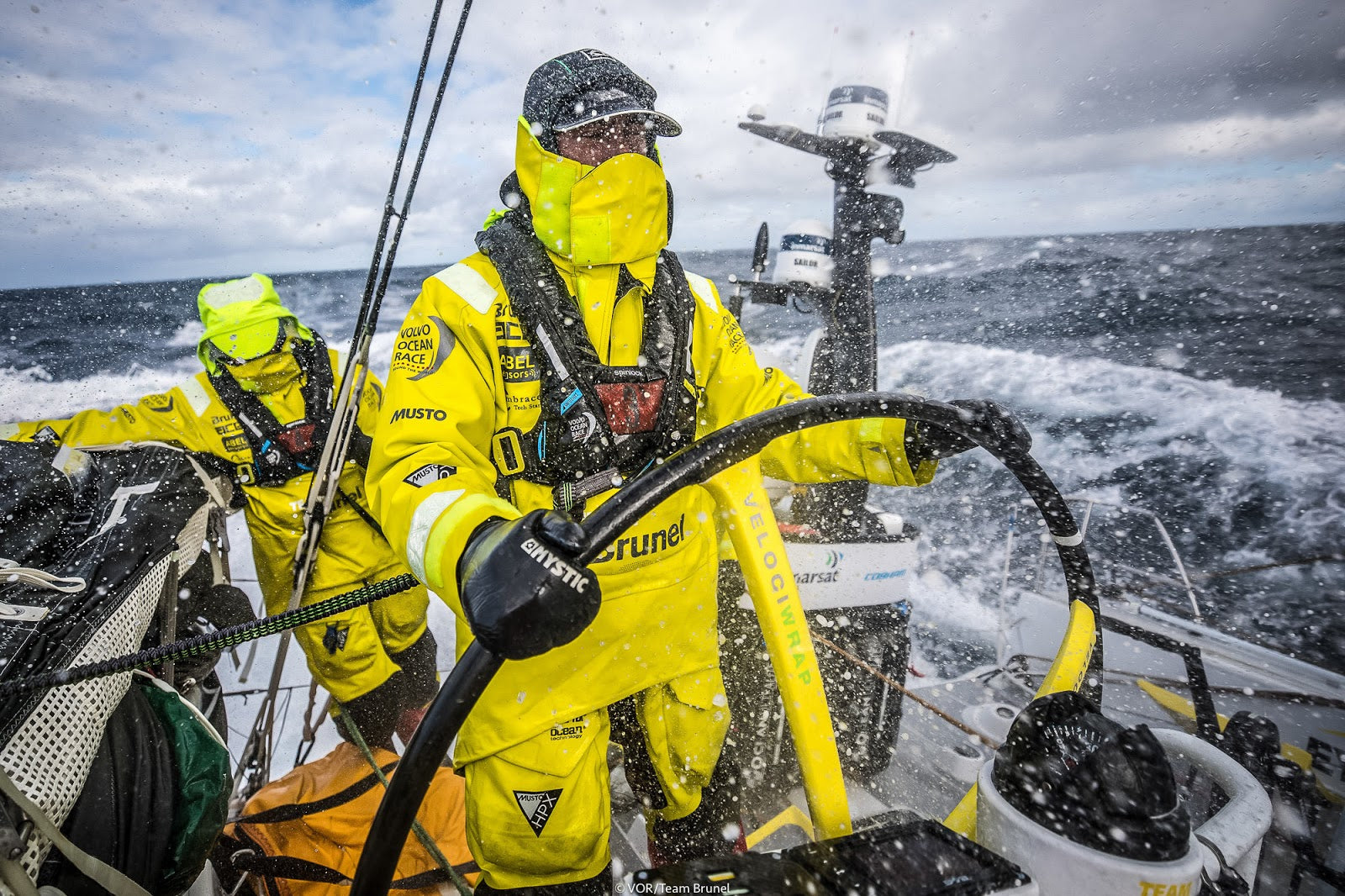
NORTH SAILS E ALBERTO BOLZAN
NORTH SAILS e ALBERTO BOLZAN
Alberto Bolzan racconta il suo rapporto con North Sails e il giro del mondo in equipaggio in una grande serata di San Valentino presso lo Yacht Club Italiano di Genova.
Il velista italiano che ha al suo attivo due partecipazioni al massimo evento velico in equipaggio attorno al mondo con i team Alvimedica e Brunel, racconterà le sue esperienze. Alberto nell’ambiente si è meritato il soprannome di “Ferrari” per la sua particolare abilità a sostenere la velocità delle barche che timona. E’ un grande amico di North Sails, che ha invelato numerose barche su cui ha partecipato alle regate.
“Ho avuto vele North Sails quando ho cominciato con l’Optimist e poi issandole ancora ho vinto due campionati europei con l’Europa – racconta – la vita di un velista si intreccia sempre con quella di questa grande veleria”.
Alberto Bolzan ha un curriculum molto dopo l’inizio con le derive è passato alle classi maggiori, dai Melges 24 e 32 (con Mascalzone Latino) ai Farr 40 (su Joe Fly e Enfant Terrible), ai TP52 (Luna Rossa e Pisco Sour) e infine ai Maxi, con il veloce Esimit Europa 2 e Rambler 88. Triestino, ha fatto della Barcolana un impegno fisso. Nella sua prima partecipazione al giro del mondo, nato come Whitbread Round The World Race e poi divenuto Volvo Ocean Race e ora Ocean Race, era unico italiano ed è stato uno degli elementi fondamentali di Alvimedica. La seconda volta è stata su Team Brunel dello skipper Bouwe Bekking, che ha chiuso al terzo posto in generale vincendo la tappa più leggendaria, quella di Capo Horn. In quella occasione ha condiviso gli impegni al timone con Peter Burling fresco vincitore della 35° Coppa America.
Il giro del mondo sarà il tema principale della regata, una regata che negli anni ha cambiato la sua essenza, e che nella prossima edizione avrà Genova come sede di tappa. Infatti la prossima edizione di The Ocean Race, partirà dal porto spagnolo di Alicante, nell’autunno del 2021 e si concluderà proprio a Genova, nel giugno del 22.
“North Sails – racconta Alberto – ha avuto un ruolo fondamentale nel corso del giro del mondo, i Volvo 65 issavano infatti tutti vele one design North Sails, costruite in 3Di e ottimizzate per la durata e l’affidabilità richiesta da una regata che impegna gli uomini ma anche i materiali ai massimi livelli di stress”. Per North Sails è stata una esperienza importante per lavorare sull’affidabilità e durata delle vele.
“Mi piace North Sails perché è in grado di proporre in tutti i mercati – conclude Bolzan - dalla crociera alla regata estrema prodotti di livello tecnologico assoluto. Sia il regatante sia il crocierista hanno a disposizione il meglio disponibile”.
L’evento è il frutto della collaborazione tra la veleria più importante del mondo e lo Yacht Club Italiano. L’accordo, una inedita partnership tecnica tra il Club e la veleria, prevede una serie di agevolazioni per i soci, un ciclo di incontri e l’assistenza tecnica durante le principali regate della prossima stagione.
READ MORE
READ MORE
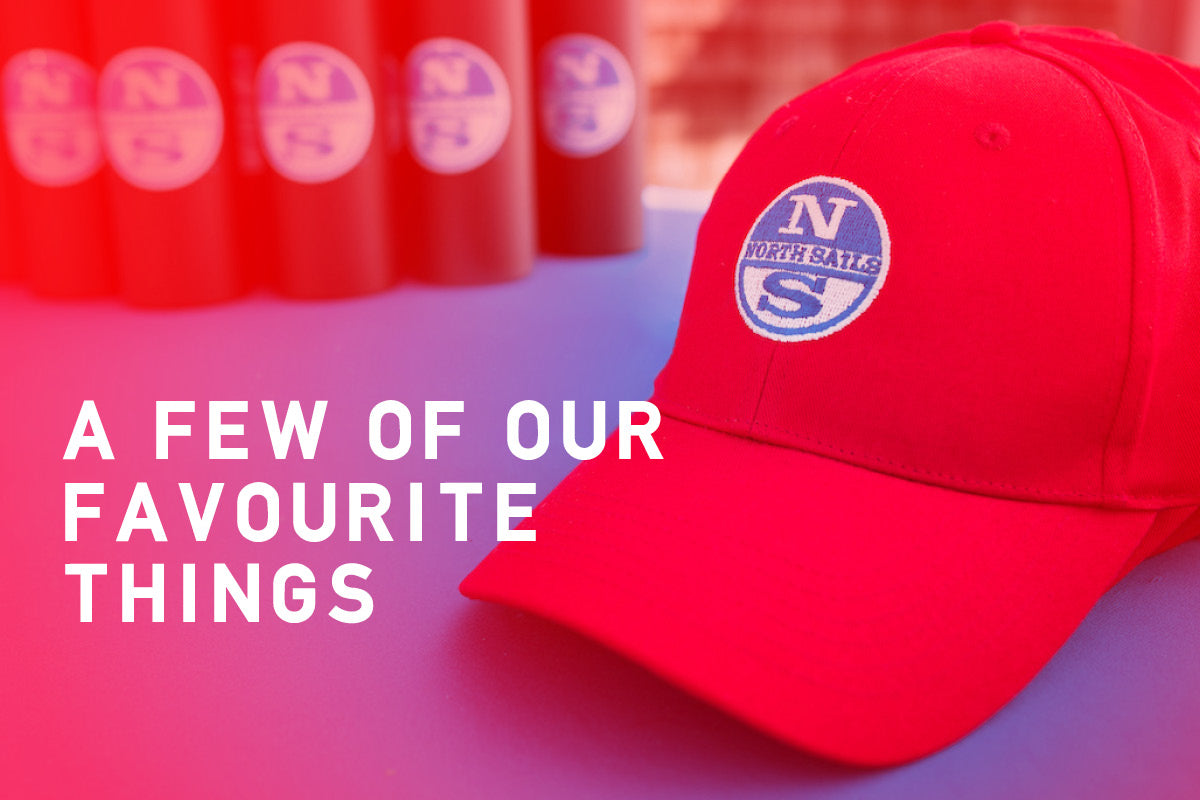
A FEW OF OUR FAVOURITE THINGS
A FEW OF OUR FAVOURITE THINGS
North Sails Fashionistas Share Their Must-Have's
We all have our favourite pieces of gear that we cannot leave the dock without. For me it's my sunnies, for others it's their foulies, and for some it's their hat. Either way, we all have those items that make our life better while out on the water so why not share them? Here's a few of our favourite things:
UV Shirt
The secret weapon to adjusting to temperatures on the water: layering. Beyond dealing with varying temperatures, UV shirts help protect you against harmful UV rays. No one enjoys a sunburn, they are literally the worst. Be smart, layer up and avoid becoming a lobster. My North Sails UV technical shirts are the best for this, especially on warmer days. Technical gear has come a long way meaning these shirts aren't hot and you can wear them on 20+ days. Even on cooler days, or in the morning, these UV shirts can help as a breathable base layer underneath a fleece.
Vest
While most people like a jacket of some sort to take on the water, I prefer to always have a vest. They are just enough weight to keep you warm yet not too hot; while also breaking the wind on those days when it's blowing. Plus the pockets are enough to stash tape, a knife and snacks. My go to vest these days has been the Super Light Vest from North Sails Collection, super easy to pack in your bag too.
Sunglasses
My sunglasses are my best friend when it comes to gear. I swear my eyes have become baby-like and can't function without sunglasses now. It's important to remember your eyes need protection as well when out on the water, not just your skin. Less strain on your eyes and no burning of your eyes are key. Investing in a good pair of polarized sunglasses (croakies too!) is never a bad idea if you spend a lot of time on the water.
Salopettes
Last but not least are salopettes. They keep you warm & dry while also protecting you from the elements. There is nothing worse than being cold while sailing (everything goes down hill when you are).
In addition to the items above, we recommend such as headlights for overnight races and a good pair of footwear to help keep you steady on deck.
READ MORE
READ MORE
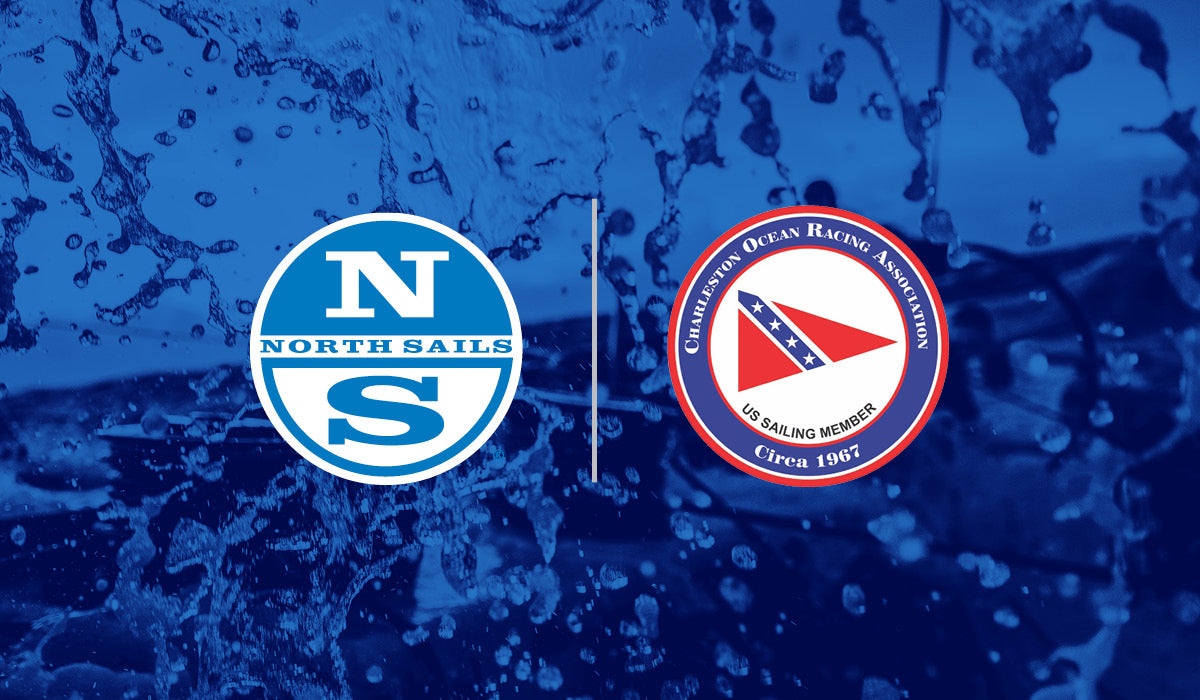
WE'LL COOK, YOU RELAX
WE'LL COOK, YOU RELAX
Dinner Is On Us At CORA's March Meeting
This has been postponed until April 16th. More information to follow.
READ MORE
READ MORE

INTRODUCING THE J-7 ALL-PURPOSE STAR CLASS JIB
Introducing The J-7 All-Purpose Star Class Jib
North Sails Expands Sail Inventory for Those Looking for Maximum Power
North Sails, the world leader in One Design, has added a new all-purpose jib to their inventory for the Star Class. The new sail is available now and can be delivered before the Bacardi Cup, a staple to the Star Class winter sailing schedule.
New for 2020, the J-7 is a powerful all-purpose jib for teams looking for maximum performance; this sail particularly excels in chop. The first J-7 was built over the summer and has been extensively tested, tuned and proven to deliver results throughout the development phase. A progressed design of the popular J-6 jib, this new sail utilizes a full radial panel layout for low stretch and maximum durability. North class sail designers added an entry angle down low for boats with stiffer masts and forestays.
“North Star sails enjoyed great success in 2019 and the J-7 is our first new class sail of 2020,” remarks North Sails class leader Eric Doyle. “The design brief for this was to develop a product which gives the boat plenty of power, while still being easy to trim and steer to. The J-7 is targeted towards lighter air, bumpy conditions but excels across a wide wind range. Our biggest takeaway from the R&D trial is the jib is durable and very fast throughout the range, traits our customers will quickly notice.”
Learn more about North Sails on our Star Class page.
READ MORE
READ MORE
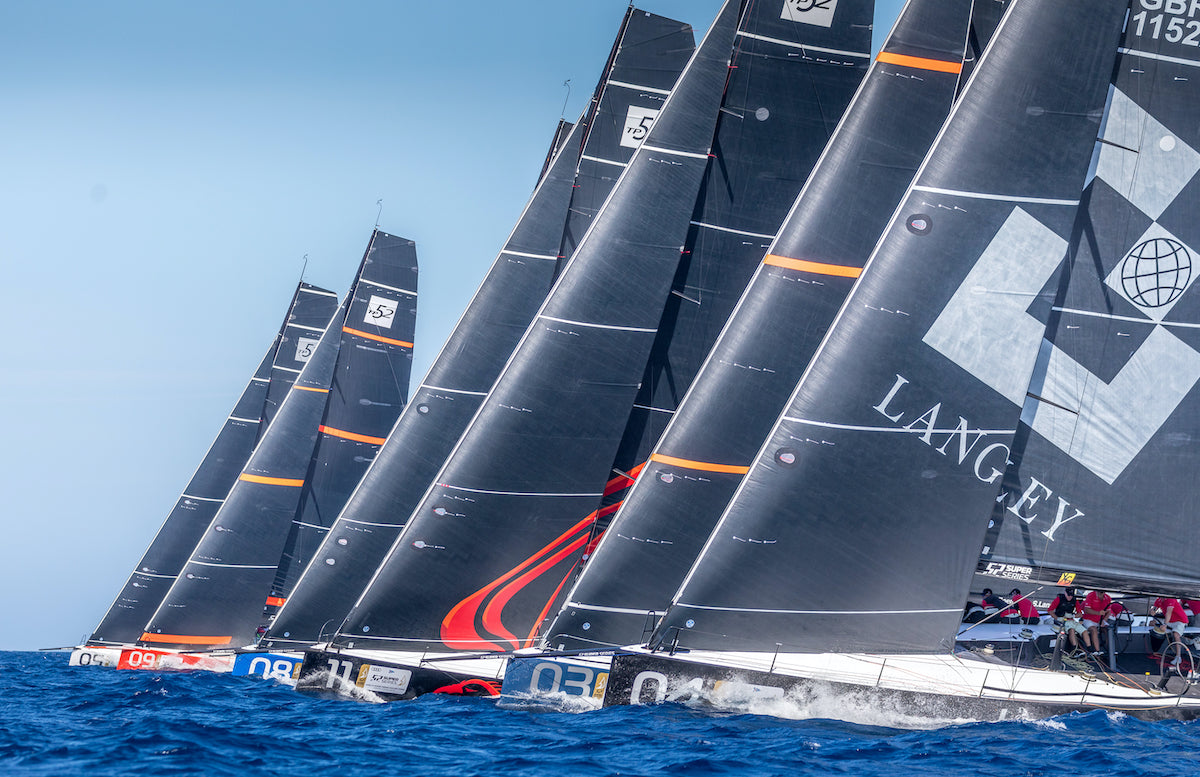
NORTH SAILS RENEWS PARTNERSHIP WITH 52 SUPER SERIES
NORTH SAILS RENEWS PARTNERSHIP WITH 52 SUPER SERIES
World’s Leading Sailmaker Continue their Association with the High-performance, One Design Monohull Circuit
📸Nico Martinez / Rolex
Following a successful partnership over the last two seasons, North Sails has today announced we will continue as an ‘Official Technical Partner’ of the 52 Super Series sponsored by Rolex. The 2020 circuit, now in its ninth season, will again play host to a stellar list of sailors and boats, with 12 boats from eight countries all vying to be number one. Year after year, the competition gets more compelling, with teams forced to out-think and out-sail each other in the high performance, one design TP52s. As an Official Technical Partner, North Sails will bring their world-leading expertise, design and sail technology, as well as sailor support to the fleet, with ten boats choosing cutting edge North Sails 3Di.
The TP52 has become the de-facto top monohull inshore race class in the world, appealing to the very top level professional sailors, discerning owners and teams. The all-carbon fiber boats with powerful sail areas and deep slender keels remain very close in performance. The current Champions Azzurra, racing with a North Sails 3Di inventory, has won the Championship four times (2012, 2015, 2017, and 2019), and there is only one other team who has taken the top spot.
With the America’s Cup just a year away, the ultra-competitive TP52 class continues to attract the best in the business. As North Sails TP52 Design Expert, Mickey Ickert commented: “The pace of this class is relentless – every year we are being pushed more and more out there on the race track, and the differences between boats are getting smaller, so we have to look for any marginal gains. We work very closely with all our North Sails clients in the fleet to help eke out every possible inch of boat speed. Each of our teams has a dedicated North designer who works with their sail coordinator to further refine the baseline inventory, and they are also on hand for feedback to make sure we are constantly moving forward.”
Commenting on the partnership, Paul Westlake, North Sails Executive Vice President, and Mainsail Trimmer for Bronenosec Gazprom concluded: “Every November we get the sail designers who have worked with the various teams together for a full debrief on what we have learned from the previous season and what is next area of development for the coming season. The partnership we have with the Super Series helps us to grow the support we can give clients and to enable North Sails to help them make more gains in the future. We have the utmost confidence in our sail design tools and 3Di composite technologies to provide our clients fast, reliable, cutting edge sail wardrobes. Still, we are always exploring the limits for ways to improve as we progress along the highly demanding season consisting of 60 races with all to count!”
Commenting on the partnership, Agustin Zulueta, CEO of the 52 Super Series said “We are delighted to extend our partnership with North Sails as a Technical Partner to the 52 SUPER SERIES. As a high-performance class, we are driven to push the boundaries of what is possible in our sport, and in North Sails, we have a partner whose mission is naturally aligned with ours. We look forward to continuing our successful collaboration with the expert sailmakers for a further two years.”
The 52 SUPER SERIES covers six trophies from March to September 2020:
Cape Town 52 SUPER SERIES Sailing Week: March 2nd – 6th, Cape Town, South Africa
ROLEX TP52 World Championship Cape Town, March 31st – April 4th, Cape Town, South Africa
Royal Cup 52 SUPER SERIES, Scarlino, Italy, May 12th – 16th, Scarlino, Italy
Audi 52 SUPER SERIES Porto Cervo & TP52 20th Anniversary Invitational, June 17th – 21st Porto Cervo, Italy
52 SUPER SERIES Valencia Sailing Week, July 18th – 22nd, Valencia, Spain
Puerto Portals 52 SUPER SERIES Sailing Week, September 15th – 19th, Mallorca, Spain
📸Nico Martinez / Rolex
READ MORE
READ MORE
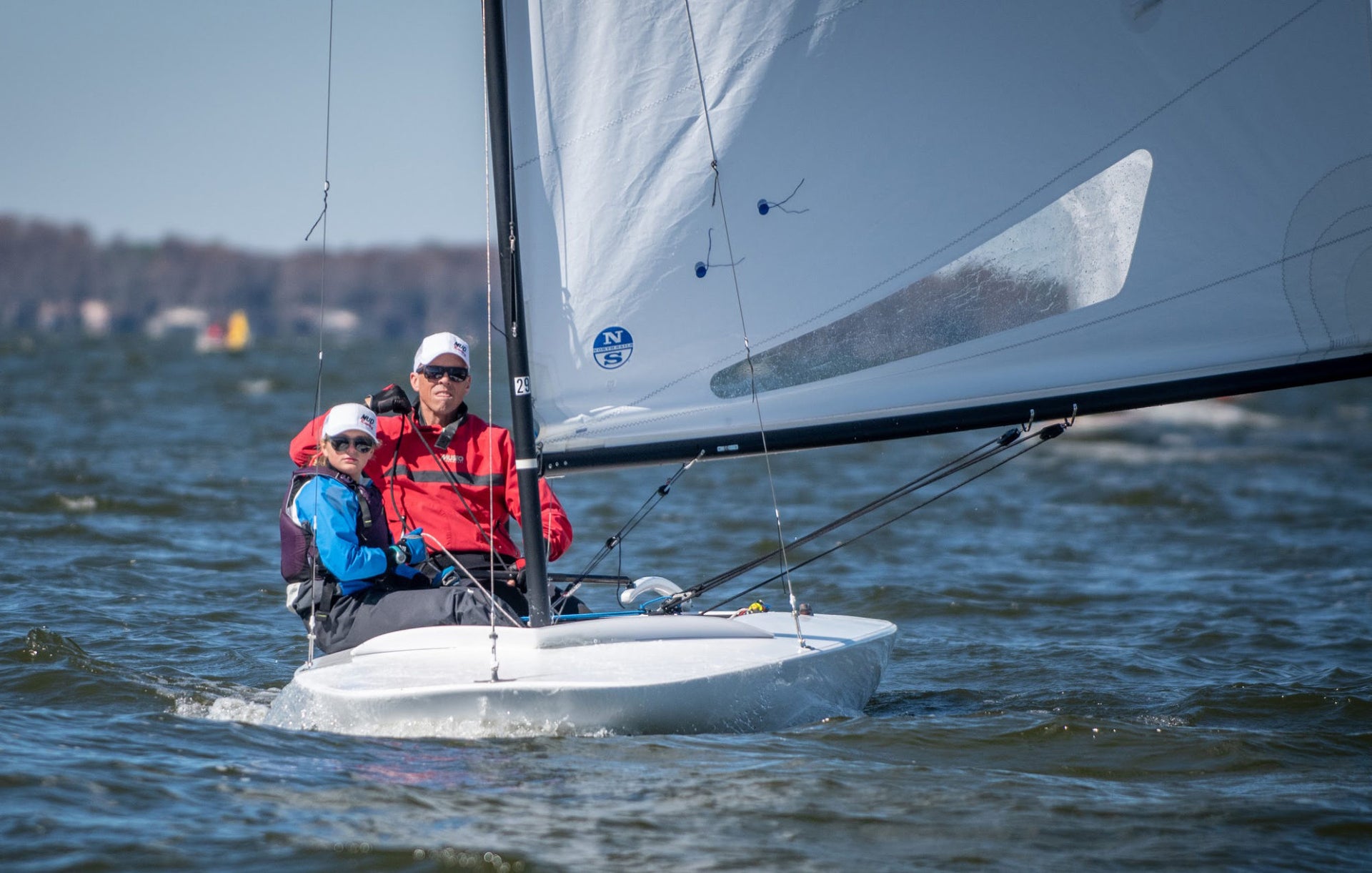
MC SCOW - FAMILY, FRIENDS & COMPETITION
MC SCOW – FAMILY, FRIENDS & COMPETITION
Interview with Chris Andert
📸 Regatta Girl Photography
We caught up with longtime North Sails Zenda customer Chris Andert after winning the second event of the MC Triple Crown Series in Eustis, FL.
You have been sailing all of your life. What sparked your interest in the sport?
Chris: Family, friends, and competition. They’re so intertwined in the sport, and, to me, it’s what makes sailing great! I’ve built lifelong friendships from sailing – some going back to my days in youth sailing, where now our kids are racing against each other. You meet new people at every regatta, you get to know someone whom you’ve only known by name, and you share your stories and experiences as to sailing means to them. Then you go out and compete against each other, trying hard to beat your longtime or newfound friends while on the water. Only to come back to shore where you help each other de-rigand share stories of tactics that led to successes or “almosts.” Sailing is a great fabric and community that every time I leave a regatta I’m longing for the next event.
Sailing scows must be your passion as you have raced them all at one time or another. Now you are sailing the Melges MC. What drew you to scow sailing?
Chris: It’s the character of each of the classes that for me sets scow sailing apart from other boats. Each Scow class is unique, from how you sail the boat to the fleet itself, and each provides its own excitement and challenges. I’ve been fortunate to participate on some great teams racing on As, Es, and Cs, but the MC has taken me a little more time to figure out than I originally thought. There’s such a balance between boat speed and tactics that you can’t emphasize just one. When racing C Scows, I always felt that if I was off on my tactics I could just make up for it with boat speed. The MC doesn’t let you do that – to compete with the top of this fleet you have to be good at both.
I like to think that my time sailing MCs has made me a better sailor, and forced me to think through my racing game plan and execution a little more.
You just won a major MC event in Eustis, Florida with over 40 boats in attendance, some of the best MC sailors in the country. What was the secret to your success?
Chris: I’ve had moments before in the MC – winning races at Nationals and Midwinters – but I’ve never been able to put together a series until this regatta. My goal for this event was to stick to my pre-race game plan and to not take big chances or get stubborn when something goes wrong. My last MC regatta in November, I blew a chance at a top-five standing over one race; a big shift came through that I didn’t want to acknowledge as it meant giving up boats. I hung on so long that I finished in the back of the fleet. The next race I went out and won, but I had already lost that regatta because of my poor reaction in the race prior.
There were so many good sailors at this regatta that I knew I couldn’t take those chances. I set a goal for myself to “sail for 5th,” start on the favored side but don’t try and win the start, watch the breeze come down the lake and position the boat to the course but stick with the fleet while doing so. These were the sorts of thoughts that were in my head as part of my plan for this regatta. I was focused on sailing well, keeping my boat moving, and staying within myself from a tactics perspective. This only works when you can trust your boat speed, and I’ve really come to appreciate the range that the North Sails Z-Max provides across conditions. This regatta had changing conditions each day, and I was confident that both the boat and sail would respond without significant tuning changes. I did a slight sidestay adjustment as the wind came up, but otherwise, I was able to adjust power effectively through vang, outhaul, cunningham, and traveler in that order.
North Sails Z-Max 📸 Regatta Girl Photography
Sailing and Family can go hand in hand. I know you love having your family involved with your sailing. What plans and goals do you have with your family’s sailing?
Chris: My two daughters Anna and Maija really caught the racing bug in 2019. I’ve officially become an Opti Dad! Both Liz and I love being on the water and around sailing, and its just as much fun for us to see them fall in love with the sport too. We’re attending several winter and spring events with them in their own boats, but I’ll definitely keep using them as crew on the MC. Maija got to race in this regatta, Anna is up next!
It’s so much fun to have them crew for me while I’m racing. But as I see them continue to come up the curve in their own sailing skill, I know it won’t be long until someday I’m crewing for them – I can’t wait for that to happen!
Both Liz and I love being on the water and around sailing, and its just as much fun for us to see them fall in love with the sport too.
As you go through this spring and summer, there’s no doubt you’re thinking of the 50th MC National Championship in Lake Geneva, Wisconsin. Do you plan to attend?
Chris: I really hope to be able to make it to the 50th! After racing at this regatta, I spent time talking with Brett Hatton and Scott Slocum, two past class Champions that I hadn’t really met prior. It was great to get to know them a bit, hear about their MC experiences, what they did to go fast, and then being asked what I was doing. It’s a great class with a great history, so I want to be there, but for now we’re just planning the next Opti event, and hoping that it doesn’t conflict with MC Midwinters.
📸 Regatta Girl Photography
READ MORE
READ MORE
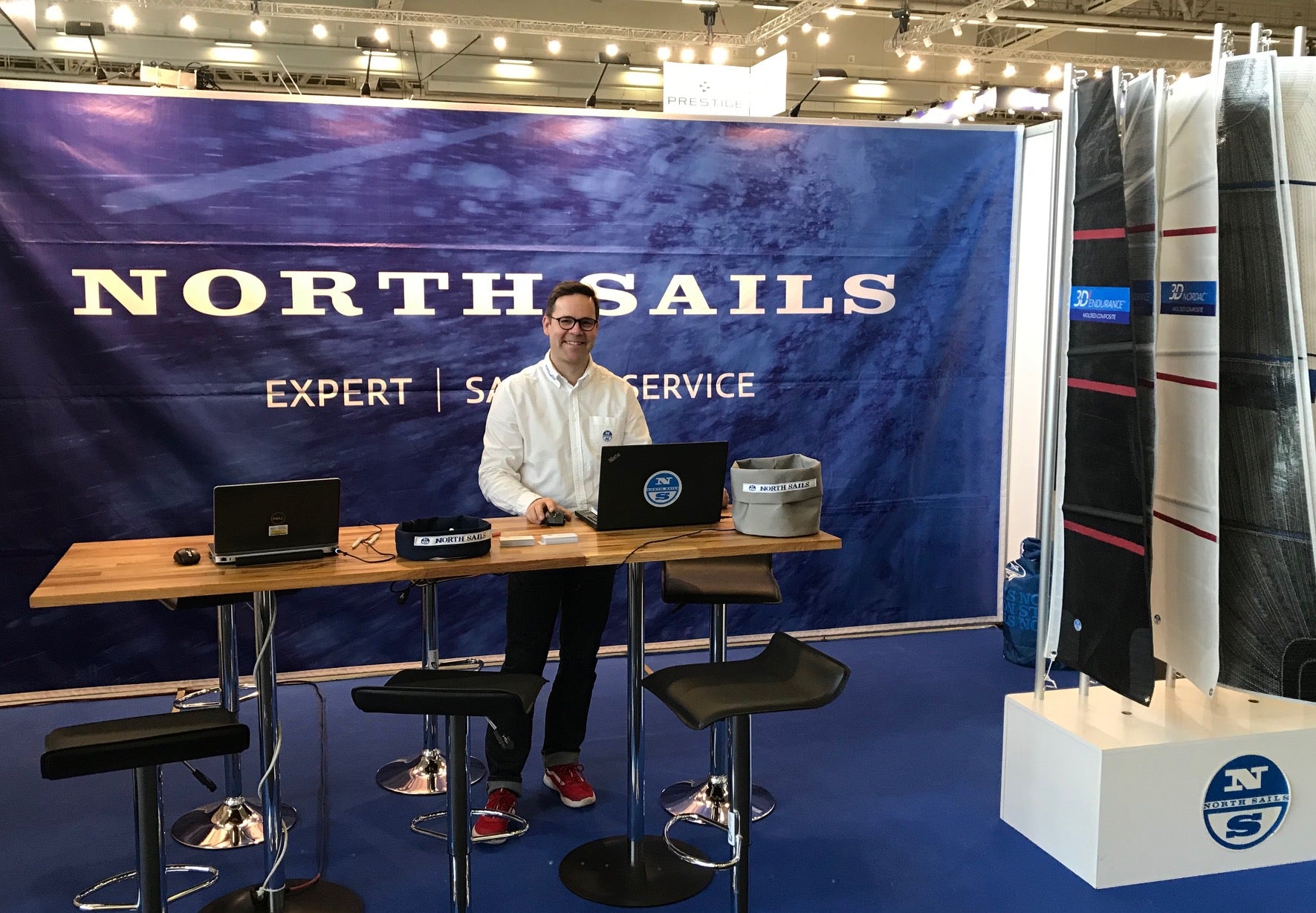
NORTH SAILS VENE 2020 BÅT MESSUILLA - LAUTTASAAREN TOIMIPISTE KIINNI
Purjeneulomo Ninirannan osasto löytyy messukeskuksesta, purjevenehallista, paikalta 7m140. Turon päivystäessä messuilla, Lauttasaaren toimipiste on kiinni 7.-16.2.
Tervetuloa messuille!
READ MORE
READ MORE
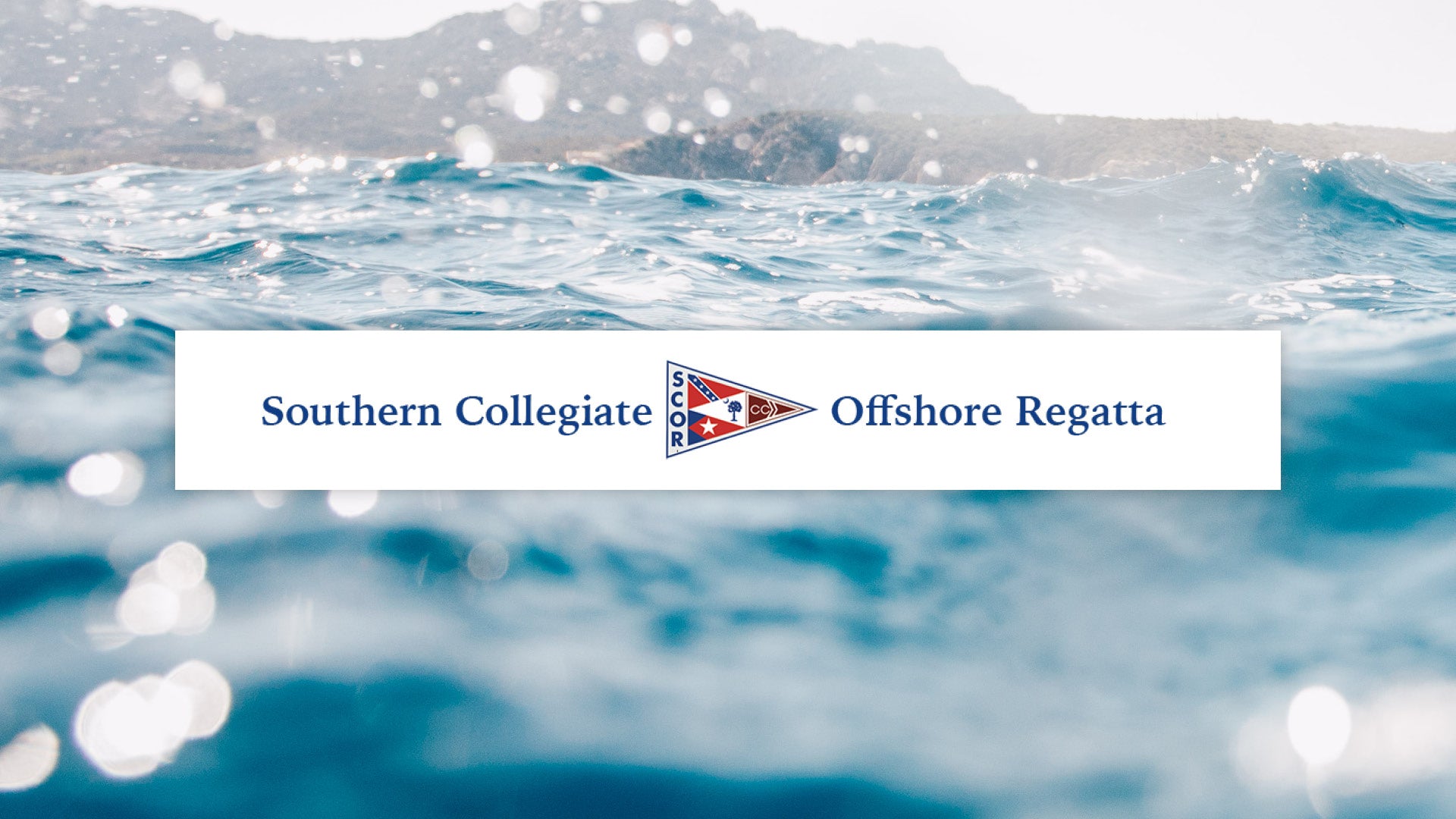
ARE YOU READY TO SCOR?
ARE YOU READY TO SCOR?
North Sails Charleston is Here to Help You Prepare
Onboard since its inception, North Sails Charleston is ready for another year of the 2020 Southern Collegiate Offshore Regatta at Carolina Yacht Club. The North Sails team in Charleston will be on hand to lend support to all teams in preparation for the the upcoming SCOR Regatta.
The ever popular regatta has 13 boats and owners participating with crew from 13 different schools across the country. Taking place February 14 – 16, all teams will have the support of local experts John Bowden, Tripp Fellabom and Ervin Grove as they prepare. Our team will be on the water coaching on Friday the 14th from 1-4pm. Teams are encouraged to come out, meet their skippers and get out on the water to find their groove. As event founder Tripp Fellabom shares, "Chemistry on the boat is incredibly important." The team looks forward to seeing everyone on the water.
READ MORE
READ MORE
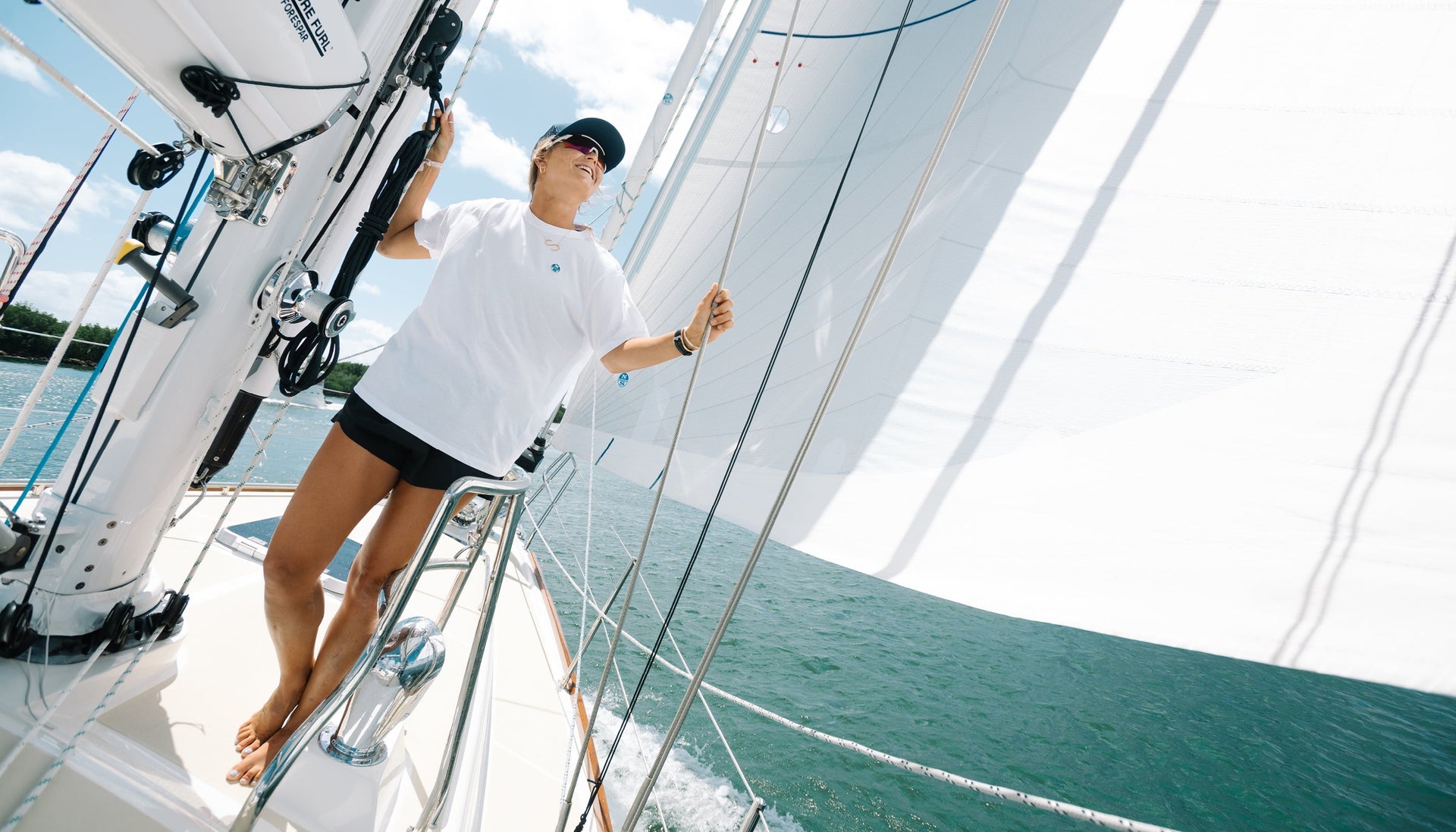
SAIL PLAN DIMENSIONS
Determine the Correct Rig Dimensions for Your Sails
When it comes to optimizing your boat's performance, one of the key factors is understanding your sail plan and how its dimensions affect the overall handling and efficiency of your vessel. The basic rig dimensions for a yacht are generally understood. However, there are some differences in how sailors describe these dimensions. At North Sails, we want to make sure everyone is on the same page, which is why we've put together this guide on how we define sail plan dimensions and how to measure them accurately. Whether you're a seasoned sailor or just getting started, knowing how to properly measure your sail plan is crucial for making informed decisions about sail choice and tuning. Let’s dive in!
I – Height of Foretriangle
Elevation of Forestay, measured down to elevation of main shrouds at sheer line.
J – Base of Foretriangle
Horizontal distance measured from front face of mast at deck to position of headstay at sheer line.
P – Mainsail Hoist
Elevation of upper mast band or maximum main halyard position, measured down to lower mast band or top of boom.
E- Mainsail Foot
Horizontal distance measured from aft face of mast at top of boom to boom band or maximum outhaul position.
Is – Height of Inner Foretriangle
Elevation of Forestay, measured down to elevation of main shrouds at sheer line.
Js – Base of Inner Foretriangle
Horizontal distance measured from front face of mast at deck to position of inner headstay at sheer line.
Py – Mizzen Mainsail Hoist
Elevation of upper mast band or maximum main halyard position, measured down to lower mast band or top of boom.
Ey – Mizzen Mainsail Foot
Horizontal distance measured from aft face of mizzen mast at top of boom to boom band or maximum outhaul position.
ISP – Elevation of Spinnaker Halyard
Measured down to elevation of main shrouds at sheer line.
SPL – Spinnaker Pole Length
Distance from the forward end of the mast to the point where the spinnaker pole attaches to the sail or to the pole’s furthest extension.
STL – Spinnaker Tack Length
Horizontal distance measured from front face of mast at deck, forward and horizontally to position of spinnaker tack attachment point.
READ MORE
READ MORE
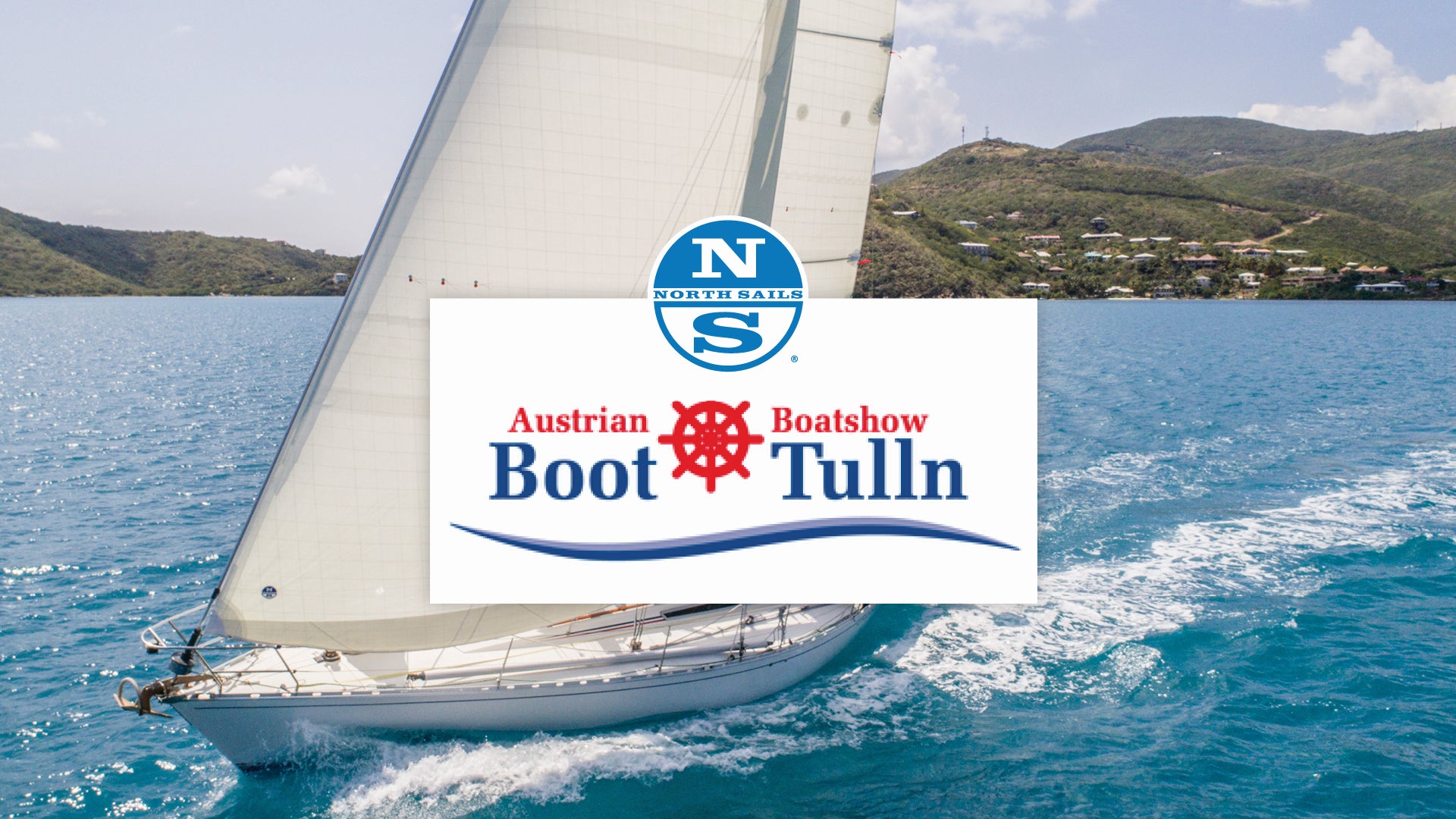
BOOT TULLN 2020
3Di NORDAC AUF DER BOOT TULLN
Das revolutionäre Fahrtensegel von North Sails
Das 3Di Polyester / Fahrtensegel von North Sails ist nun 3 Jahre auf dem Markt. Ziehen Sie gemeinsam mit uns Bilanz. Wir stellen das Fahrtensegel einer 24-ft-Yacht vor, welches zwei starke Segelsaisonen hinter sich hat. Überzeugen Sie sich selbst von der Qualität und Langlebigkeit dieses nahtlosen und dreidimensionalen Segels. Für den ambitionierte Fahrtensegler zeigen wir auf der ausgestellten Lago 26 Großsegel und Fock in unserem anspruchsvollen Xi-Tourenlaminat. Wie fit sind Sie im Segeltrimm? Testen Sie sich selbst am North U. Trimmsimulator. Stellen Sie am Bildschirm bei verschiedenen Windbedingungen mittels Trimmmöglichkeiten, Großsegel und Fock möglichst optimal ein und gewinnen Sie bei unserem Trimm-Challenge. Ihre vergünstigte Ermäßigungskarte finden Sie hier. Nutzen Sie die Möglichkeit und vereinbaren noch heute einen persönliches Beratungstermin. Rufen Sie uns an oder senden Sie uns ein E-Mail. Wir freuen uns auf Sie - am North Sails Austria Messestand in Halle 10 / Stand 1022, 5. - 8. März. Ihr Messeteam Andrea Seidl, Hans Spitzauer und Ralph Koper.
READ MORE
READ MORE

CHICAGO SEMINAR SERIES
CHICAGO SEMINAR SERIES
Enhance Your Racing Skills
Join North Sails experts to hone your racing skills for the upcoming season with North Sails Chicago seminar series. In coordination with Columbia Yacht Club and Chicago Area Sail Racing Association, this three part series will help you prepare for racing both inshore and offshore. All seminars are free from 7-9pm however registration is required ahead of time. To register please email the Chicago loft.
February 12th | North Sails Tactics on the Race Course
Positioning yourselves to win. North Sails expert Allan Terhune has won eleven North American Championships (in the Lightning, Flying Scot and Thistle Classes) and was crowned the 2013 J/22 World Champion. He will walk you through how to call tactics while out on the water.
March 25th | North Sails Distance Race Strategies ** POSTPONED TO MAY 8th **
Perry Lewis is a 40-year veteran of North Sails Chicago and local area expert. His race trophies include a dozen national and North American championships, and another dozen overall Mackinac race wins. Perry will be talking about how he goes about preparing his strategy for distance racing.
April 15th | North Sails Offshore One Design Racing
From racing to cruising, sail testing to helping his clients, Jack Orr is experienced in both inshore and offshore sailing. He has been part of the North Sails team since 1988. In addition, his years of experience in One Design with classes such as J/88, J/109 and J/111 allow him to share his real life experience to help educate sailors. Jack will be talking about offshore one design racing strategies + tips.
READ MORE
READ MORE
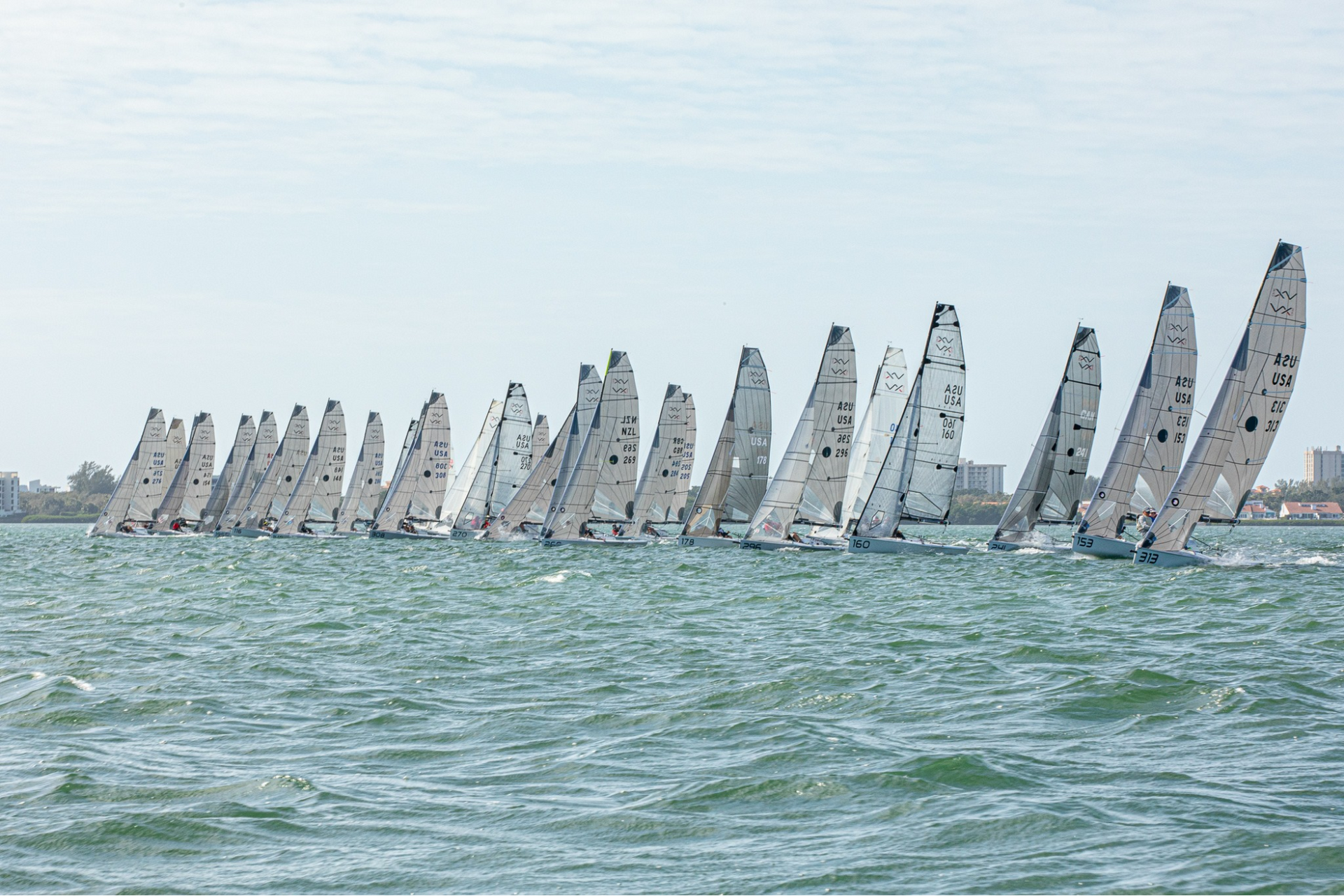
THE NUMBERS AT THE VX ONE MIDWINTERS
THE NUMBERS AT THE VX ONE MIDWINTERS
On-the-Water Observations
Heel angles off the starting line 📸 Sarah Wilkinson
The VX One is a rewarding boat because it is easy to set up, straightforward to sail, and attracts a uniquely fun group of sailors. With simplicity, however, comes the need to absolutely master each possible variable in order to get an edge on the fleet. During the Midwinters in Sarasota last month, VX One North American champion and North Sails sail designer Madeline Gill spent time on and off the water observing the setups of other teams and listening to what they had to say about it. Here are her thoughts:
Looking around the course, it was clear to me that boat setup was anything but uniform. Easiest to note were some of the basic details, like sail trim or leeward cap shroud tension (slack.) But, some of my other observations prompted me to do some more in-depth research after the racing was over. My major hypotheses were:
When it comes to using ‘relatives’ to compare performance, heel angle is a better indicator of net gains or losses than pointing angle is.
In most raceable conditions, getting the main as flat as you can is key to both getting off the start line ahead and extending your lead throughout the race.
Relative Performance
As the middle crewmember on a team with the driver trimming the main, one of my primary responsibilities upwind was to gather data. Keeping my head out of the boat and feeding constructive information to the team exercised my brain as much as hoisting, trimming, and dousing the spinnaker exercised my body.
As I have always been taught, I would relay information about our boatspeed and pointing angle relative to boats across the course. If the combination wasn’t a clear net gain or loss scenario, I would include my best guess with that regard. For example, if we were pointing a little bit lower, but going a lot faster, I would say, “lower, faster, net gain to us.”
Enter MONKEY WRENCH center stage.
I kept finding myself in situations where my conventional system would lead me astray. There would be a boat near us that we were pointing higher than and going the same speed as. This is a clear net-gain-to-us, no-need-to-even-mention-it situation, right? Not so fast. Next time I checked in, we would still be pointing higher and going a similar speed to them, but they had climbed off our windward hip, building gauge to windward and clearly having gained on us. The most glaring difference was that we were maintaining a few degrees more leeward heel than they were.
My realization at that point was that establishing and maintaining attached flow over the keel and rudder is majorly important. The shorter the cord length of a foil is, the more significant impact one unit of detached flow has. The angle of heel, and its subsequent hydrodynamic impact, is vital factor in VMG performance. As is always true, keeping the boat flat minimizes leeway, allows boatspeed to increase, and leads to better pointing angles. But the quantity of that impact is amplified in the VX One, thus my conclusion that, in conjunction with boatspeed, relative heel angle is a more valuable determinant in overall performance than relative pointing angle is.
Flat Sails
In general, we spend so much time talking about how to get the right shape in the right place in our sails, but when it comes to removing the shape, we sometimes forget that there is the same discussion to be had. Tighten the rig, put all of the sail controls on, and pull the mainsheet like your potential world’s strongest person sponsor is watching. Do you see overbend wrinkles extending from the mast toward the clew? Great. But don’t stop the conversation there.
Achieving overbend wrinkles in the main is a good indicator that you are taking power out of the sail and reducing aerodynamic drag on your boat.
Achieving overbend wrinkles in the main is a good indicator that you are taking power out of the sail and reducing aerodynamic drag on your boat. If you are still unable to maintain a flat boat, tighten the cap shrouds more, make sure the checks aren’t keeping the bottom of the main from getting flat enough, and put more tension on the vang. Depowering the bottom of your main is a good starting point, but if you are struggling with too much leeward heel, you should be trying to spread that flatness up the sail where the same amount of power has greater heel-inducing ability.
The Evidence
As it turns out, the event photos hold some nice examples that lend credence to my hypotheses.
First row
Middle row
Back row
The photo at the top of this article is a particularly good illustration of heel angles. I went through and measured the heel angle of nearly every boat on the line and grouped them by approximate row location. Sure enough, our Midwinter Champions in 269 are not only in the front row and sailing in clear air, but are notably flatter (≥2°) than every other boat in a similar position. In other words, Hayden and Mike were sailing their boat with 10%-15% less leeward heel than everyone else in the front row.
Overbend Wrinkles 📸 Sarah Wilkinson
Next, I hunted for upwind images of some top teams (isolating variables and choosing only teams using the same sails, of course.) The red triangles are where the overbend wrinkles on each main are dominating the shape landscape. The overall coverage is 30% of the area on 269 (extending 61% up the luff and 68% down the foot,) 20% of the area on 171 (extending 50% up the luff and 55% down the foot,) and 10% of the area on 276 (extending 20% up the luff and 67% down the foot.)
By extracting this data from the photos, we can see that the event leaders were sailing with a flatter boat and flatter sails than most.
By extracting this data from the photos, we can see that the event leaders were sailing with a flatter boat and flatter sails than most. And although each photo captures but a fleeting moment in time, I think it is safe to say these observations are more likely to be reflective of each team’s typical setup than not. Next time you’re setting up to go for a rip on your VX One, try focusing on (1) achieving as flat a heel angle as you can consistently sustain and (2) growing and shifting the flatness in your sails.
READ MORE
READ MORE
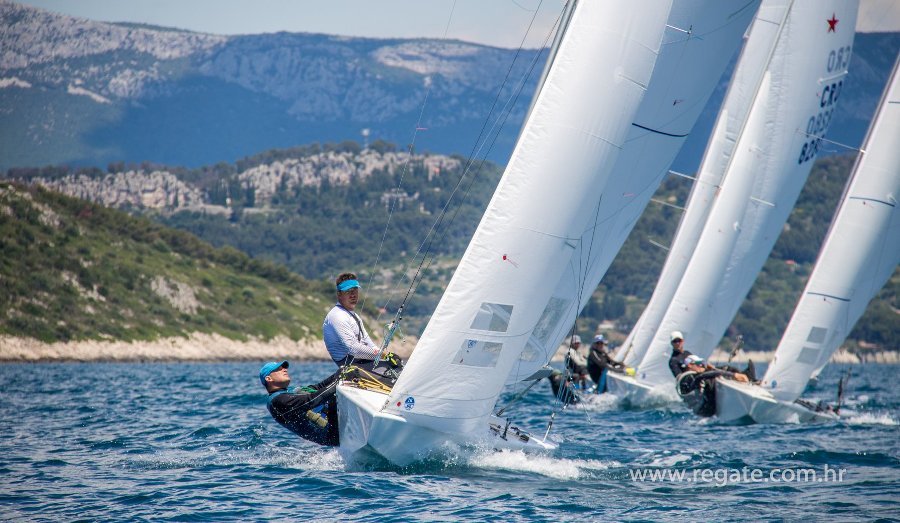
SPLITU EURO 2021. KLASE ZVIJEZDA
Splitu Euro 2021. klase Zvijezda
Dalmatinska flota će u suradnji s Jedriličarskim klubom Mornar biti domaćini Europskom prvenstvu klase Zvijezda u svibnju 2021.!
Da ne bi bilo zabune, s obzirom na ustroj klase Zvijezda (Star, Stella) koji je malo drugačiji od onog kod svih ostalih klasa, kandidaturu za bilo koju regatu ili okupljanje može istaknuti jedino "flota", a ne jedriličarski klub. Zato je u uvodu istaknuta Dalmatinska flota kao nositelj ovog organizacijskog pothvata.
Iznad "flote" kao veća instanca nalaze se distrikti kojih ukupno ima 21. Način kako su formirani distrikti nastoji povezati određena geografska područja u cjeline koje logički idu jedna uz druga. To često ne prati uobičajene obrasce na koje se povezivaju određene države u nekim drugim asocijacijama, pa se kod nekih većih država pojedini dijelovi mogu pronaći u različitim distriktima. Kako točno izgledaju distrikti možete pronaći na ovom linku.
Hrvatski jedriličari u klasi Zvijezda sudjeluju u aktivnostima kao članovi 17. distrikta zajedno s jedriličarima iz Austrije, Bjelorusije, Češke, Gruzije, južne Njemačke, Mađarske, Slovačke, Slovenije, središnje Rusije i Ukrajine.
Unutar 17. distrikta djeluje 26 različitih flota, a među njima su dvije naše. Po podacima koji se mogu pronaći na službenim stranicama klase, Dalmatinska flota je nešto ranije počela s organiziranim djelovanjem. 1952. godina je zabilježena kao početna godina u radu, dok je Kvarnerskoj floti zapisana 1959. kao inicijalna.
Do Domovinskog rata u Zvijezdama se dosta jedrilo, ali krajem 20. stoljeća uslijedila je faza kad je ova klasa ušla u hibernaciju. U tom periodu se jedrilo uglavnom na starim drvenim jedrilicama koje su nostalgično obnavljane bez regatnih ambicija, a jedini ozbiljan pristup se dešavao u Rijeci iz koje su muški članovi obitelji Lovrović odlazili na regate širom Europe, te na Olimpijske igre 2008. u Pekingu i 2012. u Londonu.
2008. godina je ujedno i godina od koje ponovno službeno djeluje Kvarnerska flota, dok se Dalmatinska reaktivirala godinu kasnije. Od tada, najzvučnija natjecanja koja su organizirana u Hrvatskoj bila su Prvenstva 17. distrikta. Organizirana su 2009. u Selcima i 2013. u Biogradu.
Kao zagrijavanje pred ovo EP bit će ponovno organizirano Prvenstvo 17. distrikta, a o svemu je malo više ispričao kapetan Dalmatinske flote, Marko Marinović.
Mi se već dosta vremena trudimo dobiti neko veće prvenstvo. Već puno puta smo se javljali na natječaje, pisali molbe itd... pri tom mislim na moj angažman kao kapetana Dalamatinske flote, Tonća Stipanovića i Tonka Barača, a za ovu kandidaturu dokumente smo poslali zajedno s JK Mornar. Možda malo subjektivno zvučim, ali dobio se osjećaj da su nas svih ovih prethodnih godina nekako ignorirali i da su drugi dobivali domaćinstva umjesto nas. I tako da je sad došlo do toga da su zaključili da su nas malo previše zaobilazili i da smo mi na redu. Tako da me je prije par mjeseci nazvao Christian Nehammer, tajnik 17. distrikta, s direktnim upitom da li i dalje želimo organizirati Europsko prvenstvo 2021. Nakon što smo potvrdili u JK Mornar da i dalje imamo njihovu podršku, krenuli smo s planiranjem. Odmah na početku smo dogovorili format natjecanja. Vikend ranije... petak, subota i nedjelja, 21 - 23. svibnja... jedrit će se Prvenstvo 17. distrikta. Potom slijede dva dana pauze, odnosno premjeravanja za Europsko prvenstvo i potom se kreće s regatama od srijede do subote, 26 - 30. svibnja. Očekujemo vrlo velik broj jedrilica, tako da će nam biti popriličan izazov gdje ćemo smjestiti tako mnogo jedrilica s obzirom da one moraju biti u moru svih dana prvenstva.
Marko Marinović, kapetan Dalmatinske flote
Pojačane aktivnosti oko Stella kreću već u veljači za kada su najavljena dva višednevna treninga s belgijskim jedriličarima. Sudjelovat će većina naših posada, a jedino neće biti nazočan Tonći Stipanović zbog nastupa na Svjetskom prvenstvu za Laser Standard koje će se jedriti u Australiji. Ujedno će to biti dobra priprema našem dvojscu Mišura - Barač koji tradicionalno putuju na Bacardi Cup u Miamiju.
Inače na Europskom prvenstvu može nastupiti neograničen broj natjecatelja iz pojedine države i nije bitan ranking na nacionalnim ljestvicama. To je ključno samo za sastav reprezentacija koje žele nastupiti na Svjetskom prvenstvu.
READ MORE
READ MORE
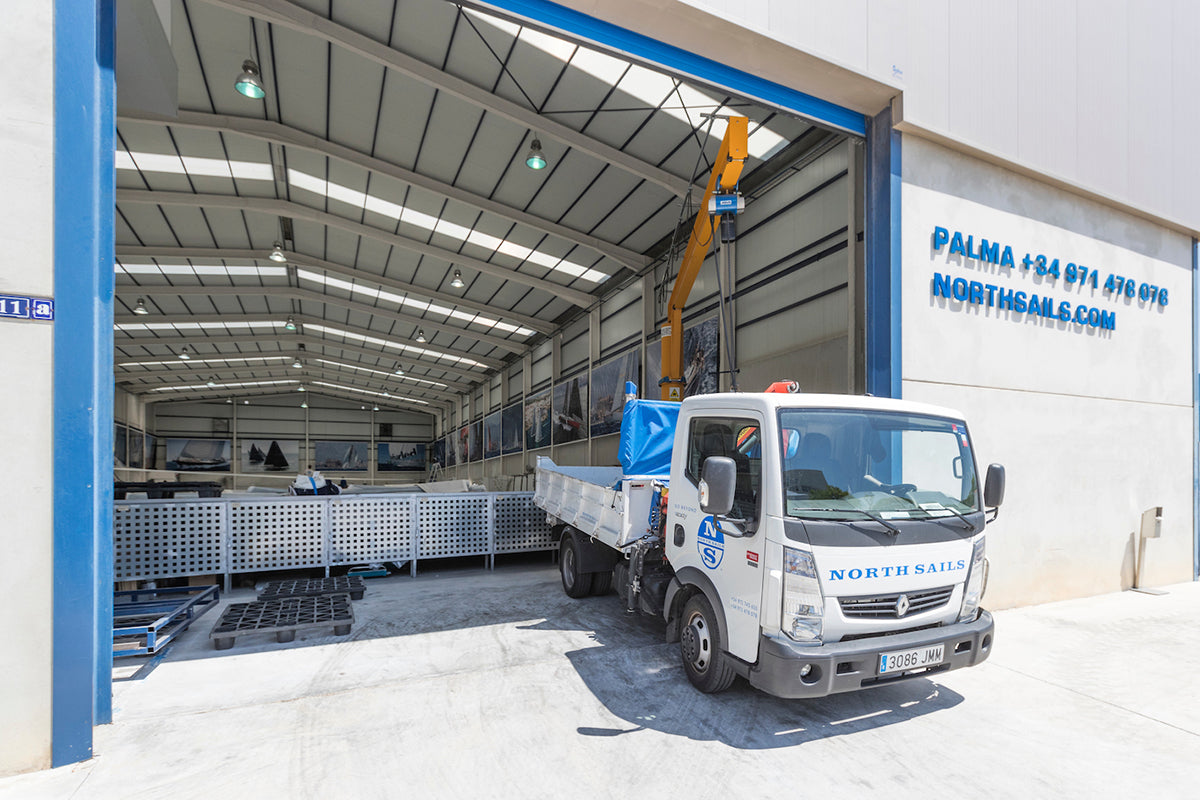
SERVICIO EN TODA ESPAÑA
SERVICIO EN TODA ESPAÑA
Pregúntanos sin compromiso.
📸 Ian Roman
El equipo de North Sails España ofrece servicio en todo el territorio peninsular e insular como parte de una estructura global que incluye 150 puntos de venta, 110 velerías certificadas y 1.600 trabajadores en todo el mundo.
En España, North Sails cuenta con velerías en Cuntis (Pontevedra), Valencia y Mallorca, centros de ventas en Barcelona, Málaga y Santander, y un equipo comercial que abarca literalmente todo el país. Si tienes dudas o necesitas información, pregúntanos sin compromiso y te pondremos en contacto con el experto North Sails más cercano.
READ MORE
READ MORE
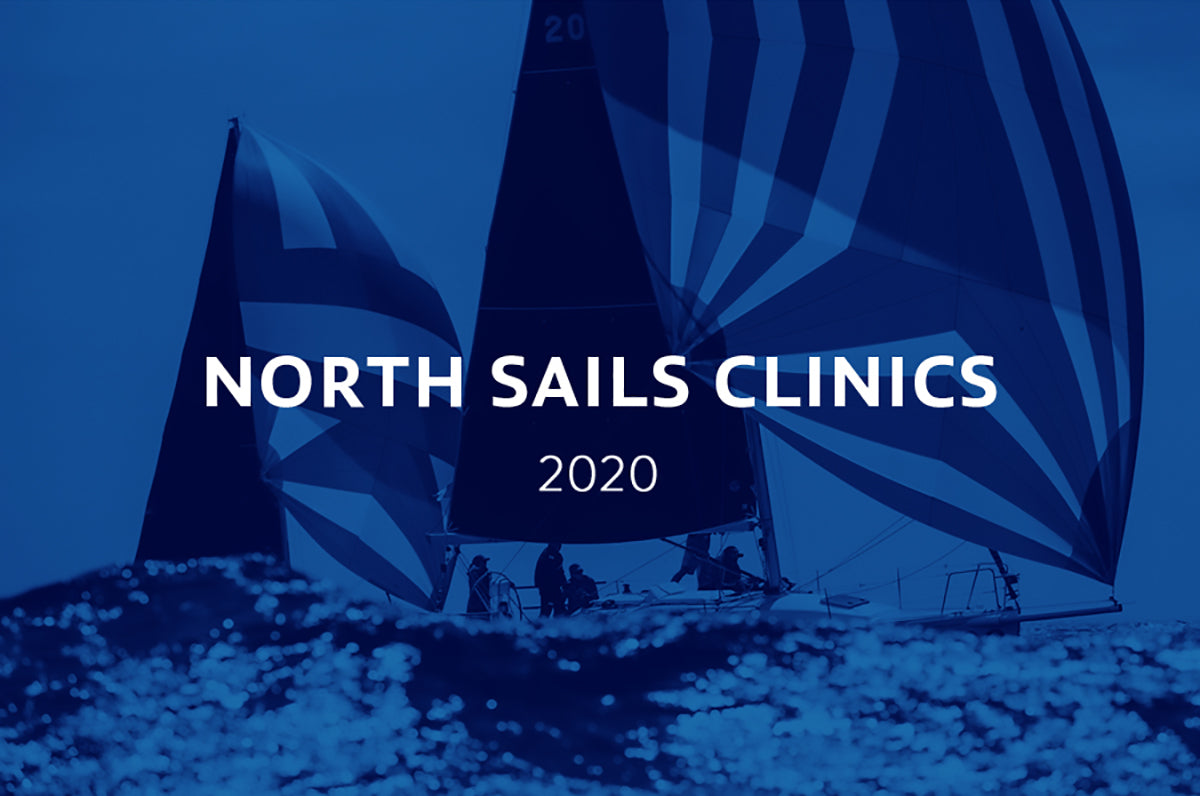
CALENDARIO FEBRERO
CALENDARIO FEBRERO
El calendario 2020 de clinics North Sails continúa en febrero.
Tras el éxito del seminario de Moraira el pasado 21 de enero, nuestros expertos trabajan ya en la preparación del clinic que impartirán en Cartagena el próximo 22 de febrero.
La flota viguesa de J70 decidió reprogramar el clinic de J70 de enero, que será anunciado en cuanto confirmemos nuevas fechas. Contacta con nosotros en info@es.northsails.com si estás interesado en participar o necesitas más información sobre los eventos organizados por North Sails España.
READ MORE
READ MORE
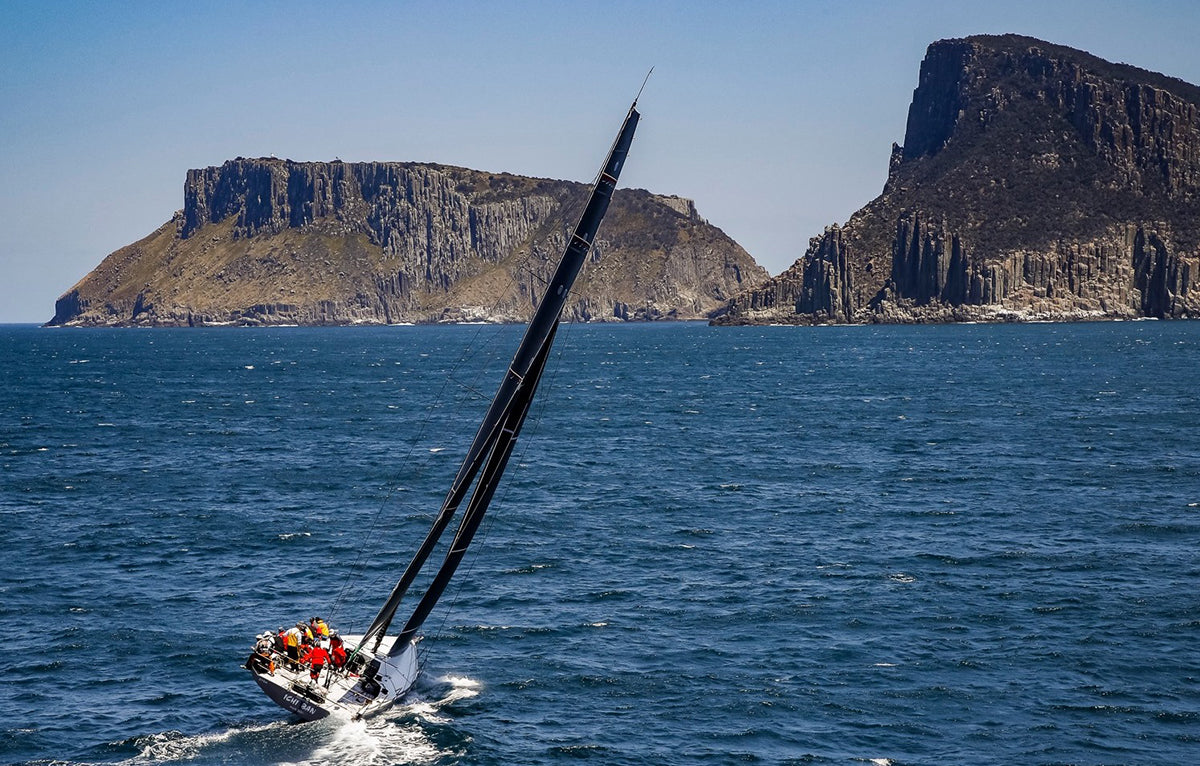
ICHI BAN GANA LA 75A ROLEX SYDNEY HOBART CON NORTH SAILS
ICHI BAN GANA LA 75ª ROLEX SYDNEY HOBART CON NORTH SAILS
La Rolex Sydney Hobart reunió a 157 barcos para celebrar su 75ª edición.
📸 ROLEX / Carlo Borlenghi
El recorrido de 628 millas náuticas entre la bahía de Sídney y el puerto de Hobart, en Tasmania, proporcionó un amplio abanico de condiciones que pusieron a prueba la habilidad de las tripulaciones y la preparación de sus embarcaciones.
El ganador absoluto bajo fórmula IRC fue el TP52 Ichi Ban del armador australiano Matt Allen, campeón también en 2017. El equipo eligió un inventario compuesto por 11 velas, incluyendo un paquete completo 3Di para ceñida y spinnakers NPC. En opinión del experto North Sails Rob Greenhalgh, trimmer a bordo de Ichi Ban, fue una regata muy igualada y la ventaja estuvo en los detalles: "Resultó clave gestionar bien las transiciones que presentó el recorrido. Nos mantuvimos siempre a la vista de nuestros inmediatos rivales, pero conseguimos despegarnos especialmente por el acierto en la elección de velas y un buen trimado".
READ MORE
READ MORE
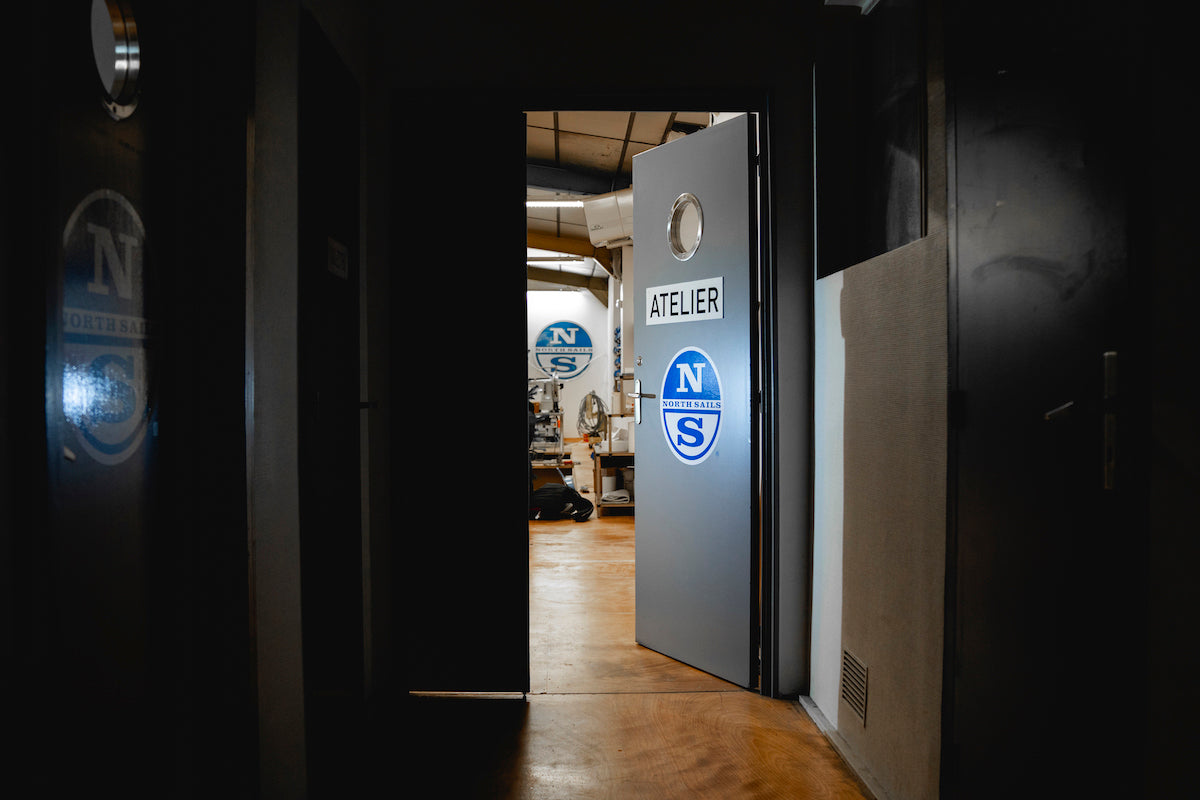
NUEVA VELERÍA EN LORIENT
NUEVA VELERÍA EN LORIENT
Una ubicación estratégica por su proximidad a los mejores equipos franceses de vela oceánica.
North Sails Francia refuerza su estructura con la apertura de una nueva velería en Lorient La Base, una ubicación estratégica por su proximidad a los mejores equipos franceses de vela oceánica.
"La llegada de North Sails a Lorient la Base es muy significativa para nuestro equipo por el acceso directo a la oficina de diseño, con la que pasamos mucho tiempo intercambiando ideas", explica Franck Cammas, patrón de Edmond de Rothschild. La nueva velería cuenta con una sala diáfana de 500 metros cuadrados para dar servicio a los clientes de la marca. Un complemento perfecto para las instalaciones principales de North Sails Francia ubicadas en Vannes, en plena Bretaña.
READ MORE
READ MORE

DISEÑANDO LA YOUTH AMERICA'S CUP
DISEÑANDO LA YOUTH AMERICA’S CUP
North Sails New Zealand colabora en el desarrollo de los nuevos monocascos voladores con los que se correrá la Youth America’s Cup a partir del próximo mes de noviembre.
Andrew Delves / America's Cup
Los barcos, de nueve metros de eslora, son fabricados en Auckland por el astillero Yachting Developments, y el equipo North Sails trabaja con diseñadores y el sindicato Team New Zealand para desarrollar aparejo, velas y configuración de cubierta. El primer AC9F será botado en las próximas semanas.
"Los AC9F van a ser barcos muy divertidos para regatistas jóvenes, especialmente en situaciones de match-race", avanza Magnus Doole, miembro del proyecto dentro de North Sails. "No serán fáciles de navegar, y exigirán que los tripulantes desarrollen las habilidades necesarias para competir en un evento como la America’s Cup".
El formato de la competición establece tripulaciones mixtas con edades entre 18 y 24 años y un programa compuesto por una regata de flota en China en noviembre de 2020, una de match-race en Auckland en febrero de 2021 y la fase final en marzo de 2021.
READ MORE
READ MORE

RÉCORDS 2019
RÉCORDS 2019
Nuestros clientes continúan añadiendo registros históricos al dossier de récords conseguidos con velas North Sails.
A lo largo de 2019 han sido varios los hitos alcanzados en diferentes disciplinas, y en los últimos cuatro años se han sumado más de 40 nuevas marcas al libro de los récords.
Repasamos los más importantes de 2019:
En enero, el ARGO de Jason Carroll batió el récord de la Pineapple Cup (2 días, 7 minutos y 44 segundos); en febrero, el Maserati de Giovanni Soldini, el de la Caribbean 600 (1 día, 6 horas, 49 minutos); en abril, el SHK Scallywag de David Witt (2 horas, 33 minutos y 53 segundos) y el Fujin de Greg Slyngstad (2 horas, 36 minutos, 33 segundos) batieron sendos récords en Les Voiles de St Barth; en mayo, el Rambler 88 de George David, el de la 151 Miglia-Trofeo Cetilar (13 horas, 50 minutos, 43 segundos); en julio, el La Fabrique de Alan Roura, el transatlántico oeste-este en solitario (7 días, 16 horas, 55 minutos); en agosto, el Edmond de Rothschild de Franck Cammas y Charles Caudrelier, el de la Rolex Fastnet Race (28 horas, 2 minutos, 26 segundos); en octubre, el Beau Geste de Kark Kwok, el de la Coastal Classic (5 horas, 27 segundos); en noviembre, el IDEC Sport de Francis Joyon, el Mauritius Route (9 días, 18 horas, 14 minutos, 45 segundos); y en diciembre, el OceansLab de Phil Sharp, el Around Isle of Wight (5 horas, 5 minutos, 4 segundos).
¡Felicidades a todos, y gracias por confiar en North Sails! Todos los récords North Sails están disponibles aquí.
READ MORE
READ MORE

VELAS MÁS COMPETITIVAS BAJO FÓRMULA ORC
VELAS MÁS COMPETITIVAS BAJO FÓRMULA ORC
La nueva reglamentación ORC para la temporada 2020 ofrece interesantes oportunidades de optimización de velas que podemos aprovechar para conseguir que nuestro barco sea más competitivo.
📸 Ben Zucker
North Sails España nos explica cómo:
El pasado 13 de enero, el Offshore Racing Congress anunciaba la nueva reglamentación ORC que se aplicará en las regatas de 2020. El documento muestra modificaciones que afectan a las velas y que ya han sido estudiadas por los expertos de North Sails España, que han identificado interesantes oportunidades para sus clientes. "La nueva reglamentación ORC 2020 abre un abanico de posibilidades para las velas de portantes que merecen ser estudiadas caso a caso", explica Luis Martínez Doreste, director comercial de North Sails España.
Entre los cambios aplicados, hay uno especialmente significativo que repercute a los espís asimétricos. "Hasta el año pasado, se consideraba que un espí era asimétrico si la cadena media era mayor o igual al 75% de su pujamen, y especialmente en rumbos de través cerrado proporcionaban un beneficio frente a la regla", explica Juan Meseguer. "De cara a 2020, ORC ha cuantificado cuánto te beneficias con esa vela y lo ha aplicado para definir el rating. En vez del 75%, ahora se considera espí a la vela con una cadena media a partir del 85% de su pujamen".
¿Esto supone una penalización para quienes equipen códigos cero? En opinión de Martínez Doreste, lejos de suponer una penalización, abre una ventana de oportunidades si dejamos la optimización en manos de una velería experta como North Sails, que cuenta con las herramientas necesarias para conseguir un buen ratio con las velas de portantes. "Para aquellos clientes que ya tengan velas tipo código cero, estudiamos la mejor configuración y la adaptamos al nuevo reglamento. Estudiamos cómo cambia su rating y adaptamos la vela a la mejor configuración posible". Además de mejorar las prestaciones puras de nuestro barco, conseguiremos optimizar su rendimiento bajo la nueva reglamentación ORC, resultando en una mejor competitividad en regata.
READ MORE
READ MORE

RED BULL KING OF THE AIR 2020
RED BULL KING OF THE AIR 2020
Counting Down To The Main Event In Cape Town, South Africa
Make sure you’re following @northkiteboarding to find out exactly what day the competition is called within the two week window, so you can watch the livestream at redbull.com. Want to tune into the world’s most jaw-dropping big-air contest?
The Red Bull King of the Air competition, proudly sponsored by North Kiteboarding will be returning to Kite Beach, Cape Town on the February 1st through the 16th. It’s all about the amplitude as contestants go head-to-head in a “flag out” competition format. During the two week weather window riders will only face-off in the perfect conditions – wind speeds of over 30 knots are ideal for providing the perfect swell from which to boost some extreme maneuvers.
The field for 2020’s Red Bull King of the Air will be made up of top six riders from the 2019 edition as well as 14 wildcards and four satellite entrants. 24 total kite boarders will take to the air between February 1st and 16th for a shot at the big prize.
Confirmed for the 2020 event is three-time defending champion and winner last year, Kevin Langeree, as well as North athlete and winner of the 2017 edition, Nick Jacobsen. He is currently the only person in the world with a set of North prototype kites. Unfortunately Nick missed out on a chance to defend his title in 2019 due to injury.
This year in particular is the first year a woman will have the opportunity to compete for the overall crown. Angely Bouillot will make her debut and is very excited for the chance to compete. “It’s a real honour”, says Angely. “I am excited to prove that women have a place in these extreme events and my mission is to inspire young women to participate in more events like this.”
Red Bull King of the Air is everchanging, and this year brings a new format for competition. Four winners, along with the 14 video/satellite entries will compete in round one and two. Both rounds will take place at a different venue that offers the best conditions; Witsand/Misty Cliffs or Kite Beach, Blouberg. From there, competitors will advance to challenge the top six from the 2019 event at Kite Beach for the big showdown in round three.
Video highlights of 2019:
READ MORE
READ MORE

SUZY LEECH: IMPRESSIVE AND IMPRESSED!
SUZY LEECH: IMPRESSIVE & IMPRESSED!
Teaming Up With Ken Read To Win Ft Lauderdale to Key West Race
📸 Billy Black
For more decades than she likes to admit, Suzy Leech has dealt with whatever challenge is thrown at her, on any kind of boat. From the bow of Mighty Mary, the 1995 all-women’s America’s Cup team, to forward teammate on Betsy Alison’s Olympic Yngling campaign, to navigating Enterprise to 2nd place at the 2019 12 Meter Worlds, Suzy is (in the words of Ken Read) a “bad-ass.” So it’s no surprise that she embraced her newest challenge, a 24-hour double-handed sprint down the Keys, with enthusiasm. It’s also no surprise that she helped Kenny achieve yet another victory.
“He was awesome,” Suzy says, when we caught up with her shortly before the prizegiving. “Kenny just wanted to go out and try this whole thing and see if he likes it. Between Jeanneau and North Sails, all the details were completely covered. I had a really great time, and it was the perfect introduction.”
Two brains are better than one. If you have the same skill set, you’re wasting it.
One reason why this first-time pairing worked so well, Suzy believes, is that it was so symbiotic. “I’m fine doing the sail handling and I loved navigating, but I am not that person to make your boat go fast. I’m not going to look at the sail combination and go, ooh, we need to tweak this here and do that there.” So while Ken kept suggesting sail changes (she figures they made about 20 in the course of the race), she worried about plotting the fastest course into Key West—in the dark. Watching the series of pre-dawn squalls on radar and trying to predict the next shift was totally different from the sailing she’d done before. “You’re completely blind. Maybe you see the stars are going away, but that’s it—a whole new world.”
📸 Billy Black
One of Suzy’s biggest takeaways was the incredible range of new sail designs. “We had a Code Zero and a Code 50, what they’re calling a tweener. It was a great all-purpose sail that we were able to put up and know that it could handle squalls and keep us going when the wind died. That last part of the race there was so much lump and rain, you couldn’t fly the A2. The code sails really came through for us because you could trim to what you needed.”
Suzy also raved about the prototype jib that reefed into a blast reacher, and their incredibly versatile staysail. “No matter what other sails we had up, whether it was the Code Zero, the Code 50, the A2, or the headsail, we always had the staysail up from the beginning of the race to the end.” That meant no bare-headed peels—but it also meant learning new lessons (in the dark, and on the fly) for this former bowman who describes herself as “an old dog.” Back aft after each sail change, the cockpit looked like “a home crocheting project gone wrong.” Fortunately Ken dove into cleanup with enthusiasm. “He didn’t care what he did, he just pitched in to help make the boat go faster. I was so impressed.”
📸 Billy Black
Looking ahead, Suzy says she’s excited to see where the partnership between North Sails and Jeanneau to promote double-handed sailing leads next. “They’re both looking at the long-term game. They want to get more people into sailing, because they want to find more buyers for boats and sails. We came up with a list of things to change, and any idea that we had was like, okay, ‘let’s do that. Let’s try it out. Let’s make it happen.’ It’s very refreshing.”
She’s also excited about the new mixed double-handed offshore Olympic discipline, and racing with Kenny to Key West taught her what to look for in a potential teammate. “First is compatibility. Can I hang out with you? Do we like the same wine?” She laughs. “That’s important!” While that might be the same for any sailing campaign, her second priority is a bit different: complementary skills. “Two brains are better than one. If you have the same skill set, you’re wasting it.”
And after dealing with so many different sailing challenges for so many years, Suzy also knows that the talent pool for offshore sailors who happen to be female is not very deep at the moment. “I hope that this new generation steps up to the plate. It’s going to be a great opportunity.”
📸 Billy Black
READ MORE
READ MORE

BACARDI WINTER SERIES #2: NORTH CLIENTS SHINE
BACARDI WINTER SERIES #2: NORTH CLIENTS SHINE
North Boats Win Both Overall And Corinthian In The J/70 Class
📸 Kathleen Tocke
For the second edition of the Bacardi Winter Series in Miami, 25 J/70s and 25 Melges 24s raced in 5-10 knots over two days. The Bacardi happy hours were a hit as always!
North boats took five of the top ten places in the J/70 class. Oivind Lorentzen, Ian Coleman, David Shreiner, and Lucas Calabrese won overall, while Zachary Segal, Ashton Hamerlin, Enrique Quintero, and Piet van Os won the trophy for top Corinthian team. Both winners used the XCS-2 mainsail, the J-2 High Clew Jib and the AP-1 Spinnaker.
North Sails expert Zeke Horowitz sailed on John Heaton’s Empeiria, and he shares some lessons from a light air weekend.
Dynamic sail trim is hugely important.
If the boat isn’t fully powered up, both sails should be adjusted in every slight velocity change or wind shift. Err on trimming too loosely. The upper leech of the jib should be trimmed to the outside spreader mark, while the foot of the jib should be just touching the toe rail.
Fight the desire to feel weather helm!
Especially in light air, it’s common to want some “tug” on the rudder, because weather helm gives you feel. This is not as fast as the uncomfortable feeling of having zero helm. A “dead stick” means no rudder drag, which is fast both upwind and downwind.
Flat is Fast, even in light air.
Sailing the boat with as little as 5 degrees of heel in flat water is ideal. If you don’t have a heel indicator, get one!
Keep the backstay snug enough to avoid the rig bouncing.
Keeping the backstay just snug is good, even in conditions where you aren’t trying to bend the top of the mast. Reducing headstay bounce makes it easier for trimmer and helm to stay in the groove. This goes for downwind too!
Full results
First Place overall Oivind Lorentzen, team Nine. 📸 Kathleen Tocke
1st Place Corinthian, Zachary Segal and team USA 1154 📸 Kathleen Tocke
3rd place overall John Heaton and team Empeiria. 📸 Kathleen Tocke
📸 Kathleen Tocke
📸 Kathleen Tocke
READ MORE
READ MORE

MATULJI ČETVRTI NASLOV PRVAKA HRVATSKE
Matulji četvrti naslov prvaka Hrvatske
Još jednom je prvo Prvenstvo Hrvatske u kalendarskoj godini, jedne od službenih klasa HJS-a, bilo organizirano u Rogoznici od strane JK Val iz Šibenika. S obzirom da je u inozemstvu Rogoznička uvala poznata kao "raj za RU jedrilice" lako je zaključiti da su u pitanju bile RU jedrilice klase IOM.
Već 14. put se RU jedriličari okupljaju na mjestu koji je geografski centar Jadrana, na mjestu gdje se 2018. organiziralo Europsko prvenstvo ove klase. Ta centralna pozicija na karti se poklopila i s klimatološkim elementima koji omogućuju da Rogoznica često ima mnogo ljepše vrijeme nego što je u njenom susjedstvu, a to je pogotovo u siječnju vrlo primamljiv faktor za sve one koji planiraju provesti vikend na otvorenom.
S obzirom da se šibenski klub već odavno potvrdio kao vrstan organizator i ovakve vrste regata, a Rogoznica kao izvrstan domaćin, nije trebalo puno da se popis sudionika popuni s maksimalnim brojem od 40 sudionika.
Do ovog ograničenja je došlo s obzirom da SHRS sustav,po kojem se jedri na ovoj regati, dozvoljava da istovremeno na moru može biti do 20 jedrilica. A kroz godine rade se pokazalo da je optimalno kad se jedri u dvije skupine jer tada svi sudionici imaju dovoljno vremena i za jedrenje, a i za odmor između pojedinih plovova. Najveći teret je tada na presuditeljima koji moraju presuđivati na moru za obje grupe, a također i donositi odluke u eventualnim kasnijim prosvjedima, odnosno članovima Regatnog odbora koji stalno moraju pratiti situaciju s vjetrom i korekcijama bova omogućavati regularne uvjete za natjecanje.
Od prijavljenih 40 natjecatelja 15 je bilo članova HJS-a, a ono što posebno veseli kako organizatore, tako i članove RU klase je to što je ovo bila već druga godina za redom kad se među njima pojavilo i jedno novo lice. Lani je to bio prvi junior nakon dugo vremena, Bruno Marević, a ovogodišnji premijerni nastup u Rogoznici je imao Tomislav Bezić.
Standardno otvaranje regate je bilo s navigacijskim jedrenjem oko Rogozničkog poluotoka. Međutim, u petak je zapuhalo tek oko 11 sati. S obzirom da je kompletna ruta navigacije duga oko 3.5 NM, a start klasičnog jedrenja oko oznaka predviđen za 12:30 odlučeno je da se jedre samo prva i treća etapa, a najdulja da se ove godine izostavi iz programa.
Kako je vrijeme jedrenja bilo ograničeno start je dan s vjetrom u krmu, nije se postavljala dodatna privjetrinska oznaka.
S obzirom na uvjete i broj jedrilica (ovdje nema ograničenja na veličinu grupe) koje su imale namjeru prijeći startnu liniju, nije se isplatilo igrati s rizikom prijestupa. Zato su svi pažljivo odradili ovaj kritični dio plova i krenuli u lov na svaki namreškani dio morske površine. Pokušavana su imalo ekstremnija odvajanja od grupe, ali u tom prvom dijelu regate je najviše profitirala sredina i jedrenje po najkraćoj ruti. Tek nakon obilaska prve oznake (na karti žuta oznaka - Mark) svježe je zapuhalo iz E-SE i dionica preko mosta je odjedrena praktički u "vlakiću" i tek nakon "control gatea 1" ponovno kreće taktičko nadmudrivanje i biranje prolaska rutom bliže kopnu ili više u sredini uvale.
Flota se u principu podijelila u tri skupine. Prvih 5-6 jedrilica se dosta odvojilo na čelu, a zatim jedna veća skupina i zatim društvo sa začelja.
U principu standardan rasplet na kraju, osim što se desio jedan presedan u vidu ulaska mađarskog jedriličara Lászla Csóke kao pobjednika u cilj etape. Iza njega završava Ante Kovačević, te još dva mađara ispred najboljeg od talijanskih predstavnika. Prvi idući hrvatski predstavnik je tek na 8. mjestu. Ove godine su se zamijenile uloge... a jedrila se još samo jedna etapa...
Nakon kratke pauze nakon što je posljednji ušao u cilj, RO je pokrenuo predstartnu proceduru za povratak na Miline, dio Rogoznice pred ulazom u marinu Frapa od kuda je i krenulo navigacijsko jedrenje.
Po sad već pomalo formiranom laganom SE-S krenulo se ponovno u krmu. Ovog puta jedrenje je bilo značajno brže. Scenario sličan prethodnom... nekoliko jedrilica se izdvaja na čelu, potom velika grupa i nekoliko jedrilica na začelju. Međutim ovog puta flotu je predvodio domaći jedriličar Boris Bakotić. Njemu je za rukom pošlo ponoviti ono što je napravio László Csóka u prošloj etapi, ali nažalost je Boris bio dosta sporiji u tada, pa se nije mogao nadati dobrom generalnom rezultatu. Zato je László jedrio u jednakom stilu kao što je i otvorio navigacijsko jedrenje i ulazi u cilj odmah iza Borisa.
U konačnici je cijela flota bilo mnogo brža, a osim Borisovog skoka na prvo mjesto, ostali akteri u vrhu su bili isti kao u prvoj etapi. Međutim, u ovoj revijalnoj regati jedini tko je na kraju bitan je pobjednik, a kao što ste pretpostavili to je ovaj put bio HUN 23 - László Csóka. To je bio tek drugi put da je trofej pobjednika Rogozničke navigacije otišao van granica Hrvatske. Prvi stranac kojem je to pošlo za rukom bio je talijanski jedriličar Matteo Longhi 2011. godine.
Kako su prošli ostali možete vidjeti u rezultatima na ovom linku.
Prva iduća točka programa, a prije početka jedrenja Prvenstva Hrvatske, bilo je premjeravanje jedrilica. Od svih pravilima dozvoljenih kombinacija provjeravanja opreme i zadovoljavanja pravila, izabrana je najjednostavnija. To je vaganje ukupne mase jedrilice, kompletno opremljene s najtežim kompletom jedara i baterijama. Ta masa ne smije biti manja od 4000 grama.
Svi koji nisu zadovoljavali ovo pravilo morali su u trup ubaciti dodatni balast i tek nakon što su svi zadovoljili ovaj nužni uvjet moglo se krenuti s kvalifikacijskim jedrenjima.
SHRS sustav predviđa šest kvalifikacijskih jedrenja nakon kojih se formiraju zlatna i srebrena jakosna skupina. Kvalifikacijske skupine su svaki put različite, a formiraju se na osnovu rezultata prethodnog plova, dok je samo za prvi plov sastav skupina određen položajem na rang ljestvici za hrvatske jedriličare, a slučajnom metodom za inozemne sudionike regate.
Južin koji je puhao na drugoj etapi navigacije držao je skoro cijelo poslijepodne i regatno polje je postavljeno u skladu s njim. Po tim uvjetima odjedrena su po četiri plova za obje skupine.
Rezultati su bili dosta "šareni" i za dio jedriličara se nije moglo prognozirati u koju finalnu skupinu će upasti. U svakom slučaju trebalo je pričekati subotu, pa da se završi cijeli kvalifikacijski ciklus s obzirom da su u kvalifikacijama dva odbacivanja!
Subota je po prognozi trebala ponovno biti u znaku laganog južina, ali je Rogoznica bila u znaku laganog levanta koji ipak nije otišao u desno za suncem. Iako je puhao skoro cijeli dan ipak nije bio dovoljno stabilan da bi se moglo odjedriti dosta plovova.
Uglavnom, završile su se kvalifikacije. Deset hrvatskih jedriličara je ušlo u zlatnu skupinu, dok ih je petorica morala nastaviti jedriti u srebrenoj.
U jednom trenutku je vjetar okrenuo na NW i cijelo polje se zarotiralo ali nažalost nije dugo potrajalo... sve nade svih sudionika su se okrenule prema nedjelji i da će zaista probiti bura koja je bila u najavi za cijeli Jadran.
Na obostrano zadovoljstvo svih uključenih u regatu, bura je uistinu i zapuhala u nedjelju. Preko 10-12 čvorova je puhalo od samog jutra, da bi se kasnije tijekom dana u refulima dizala i na preko 15 čvorova!
Ove granične vrijednosti su dijelom bile i razlogom zašto su flote bile mješovitog karaktera po pitanju jedrilja koja su se koristila. Većinu jedrenja jedriličari su kalkulirali da li da jedre s najvećim jedrima ili da se prebace na srednji komplet. Po pitanju brzina u orcu uglavnom su bile slične za oba kompleta. Mala razlika bi se javila u kutu jedrenja, ali najveća razlika je bila vidljiva prilikom jedrenja dionica niz vjetar. Dok ne bi stizali refuli brzine su bile malo više u korist veće kvadrature, ali kad bi "stisnuo" reful jedrilice s velikim jedrima su doslovno jedrile slalom izmeu onih s manjim, sve do trenutka kad više ne bi mogli kontrolirati kretanje i s "nose diveom" nekontrolirano štraorcaju.
Ovo su bili uvjeti po kojima se najbolje vidjela razlika među jedriličarima, a i među njihovim bolidima.
Velika većina jedrilica na regatnom polju je bila od poznatih i provjerenih proizvođača, ali Kantun 2, Zvonka Jelačića je apsolutno dominirao, pogotovo po jakom vjetru! Čak prvih 13 jedrilica u generalnom plasmanu su bile K2!
Što se tiče borbe za vrh ona se vodila između Roberta Matulje iz JK Opatija i Ante Kovačevića iz JK Zenta. Ostali nisu mogli pratiti njihov tempo i nadmetanje je bilo napeto do samog kraja. Jedini Kovačevićev kiks je bio u predzadnjem plovu kad je imao DNF. Nakon toga se definitivno otvorio prostor koji je Matulja izvrsno iskoristio i s pobjedom u posljednjem plovu potvrdio svoj četvrti naslov prvaka!
Ukupni rezultati regate mogu se pronaći ovdje.
A evo i kratkog razgovora s novim prvakom Hrvatske. Inače, ovo mu je drugi naslov koji je osvojio u Rogoznici:
Ove godine je konkurencija malo iznenadila po pitanju inozemnih natjecatelja. Nekolicina ih se dignula jedan viši nivo, pogotovo László Csóka iz Mađarske koji je završio na 5. mjestu. Šteta je što su falili neki naši vrlo dobri jedriličari, a svi ostali smo bili manje više tu gdje smo svi očekivali. Tako su završili i talijani koji su s nama jedrili na Europskom prvenstvu. Završili su u prvih 15 i to je po mom mišljenju za sada njihov doseg, a tu je također bio i turski predstavnik Kaya Dinar koji je na prošlom SP završio 34. Ostali strani predstavnici bili su uglavnom u srebrenoj skupini koja je neka njihova realnost s obzirom na našu trenutnu snagu. Mislim da je jedrenje u nas trenutno na stvarno visokom nivou. Evo nakon dužeg vremena ponovno vidimo i nova lica među splitskim jedriličarima, a moram reći da i kod nas u Opatiji ima nekih osvježenja. S nama su počeli povremeno trenirati Boris Rosović i Damir Puhar. Inače jedre za JK Orion iz Mošćeničke Drage, ali treniraju s nama u Opatiji. Istina, u Opatiji nam nedostaju juniori u IOM-u, dok klinci iz kluba tu i tamo znaju zajedriti u RG65. Uglavnom je to još kroz zezanje, tako da još neko vrijeme neće iz te skupine isplivati neko novo ime. Ali nadamo se da će se i to popraviti. Tako da smo ja i Robert Grubiša manje više sami na treninzima kojih je bilo nešto manje u posljednje vrijeme dok sam ja bio bez jedrilice... do prije 15 dana sam jedrio sa starim bratovim Lintelom ali evo sam i ja sad član K2 flote :) Sad se nadam da ćemo odjedriti sve naše zimske regate, a možda otići na po jednu regatu u Italiju i Mađarsku. Jedino što je još upitno u sezoni ispred nas je Europsko prvenstvo koje će se jedriti u talijanskom Orbetellu od 25. travnja do 2. svibnja. Što se tiče samog Kantuna 2 i kratkog vremena kojeg sam imao za prilagodbu na njega, mogu reći da ga ne mogu usporediti niti s jednom drugom jedrilicom koju sam vozio. Jedan osjećaj je po laganom vjetru, a s druge strane je strašno dominantan po jakom vjetru. Moram reći da mi se njegove maritivne mogućnosti generalno sviđaju, dok bi se o vizualnom dojmu moglo raspravljati :) I za kraj želim pohvaliti sve koji su bili uključeni u organizaciju i suđenje, savršeno odrađena regata!
Robert Matulja, JK Opatija
Kao što je bilo i najavljeno, u Rogoznici se jedrilo i s jedrilicama klase RG65. Sudjelovali su maleni rogožnjanci, primoštenci i splićani, a stiglo je i nekoliko seniora.
I ove jedrilice su se uspješno nosile s burom, a priliku za upoznavanje s RU jedriličarstvom na svim razinama iskoristili su juniori JK Split koji su stigli iz Splita na studijsko putovanje s praktičnim vježbama.
Inače, u ovom klubu se nakon dosta vremena ponovno organizirala modelarska radionica, a u sklopu nabavke opreme nabavljeno je i 8 jedrilica klase RG65, te se nadamo da će i taj klub postati još jedno jako uporište ovog vida jedrenja u Hrvatskoj.
Kompletnu fotogaleriju ovog atraktivnog vikenda u Rogoznici možete pronaći na ovom linku, dok kratki video presjek nedjeljnih jedrenja možete pronaći u video galeriji.
READ MORE
READ MORE

EFFECT OF WINTER SUN ON BOAT SAILS
EFFECTS OF WINTER SUN ON BOAT SAILS
UV Is Not Your Friend
We all know that ultraviolet (UV) light breaks down traditional fabrics, which is why sunshine is bad for your sails. (FYI 3Di is composite technology, not a sail laminate. For info on 3Di sail care, read Sail Maintenance.) Even the lower sun angles of winter can wreak havoc on our sails. Here’s what you need to know about UV damage on traditional fabrics. Fortunately, there’s a way to protect your sails and extend their life expectancy: be diligent about covering them up when they are not in use. Once fabric is rotted from UV exposure, the only remedy is replacement. Read on for other factors that make a difference.
Fiber type
Some fibers have better UV resistance than others. For two fibers of the same type, a smaller diameter fiber will degrade more rapidly than a larger diameter fiber. Woven polyester fabrics are made with warp yarns that are almost always smaller than the fill yarn. So when dacron has been rotted by the sun, it will rip more easily across the warp (parallel to the fill).
The simple test of your sail’s fiber integrity is to lightly scrape the surface of the fabric with a dull metal object, like the edge of a spoon or the thick side of a knife blade. If the fibers are still in good shape, the fabric will become shiny and smoother where you rubbed it. If the fibers are rotted, the filaments on the surface will fuzz up or sluff off of the sail. If the UV damage is very advanced, the fiber might rub away completely—the sign of a sail that is going to fail.
Most UV exposure occurs when the boat is sitting with the sails down. Accordingly, some areas of the sail will get more exposure than others. The mainsail leech lying on top will rot long before the parts of the sail hidden beneath it. The same is true for a roller-furled headsail. The fabric on the inside of the roll will last much longer than the leech, which forms the outside of the roll.
Sometimes the degraded area of a sail can be economically replaced. But more often, when the sail fabric is degraded enough to easily rub the fibers away, or to tear a Dacron fabric along the fill yarns, it is time to replace the sail.
Suncovers
You may be surprised to learn that your sail will degrade right through its sun cover. As the cover ages, it becomes less effective at blocking the rays of the sun. Heavier fabric provides a more effective barrier than lighter fabric, and dark colors provide better protection than light colors. If you spend time in the tropics, consider a multiple layer cover. It will be much more bulky, but your mainsail will last longer.
Last but not least, the deck of your boat is an excellent UV barrier. Keep your sails below decks whenever possible.
A suncover can help protect your sail from UV rays, but step one is making sure your sail is furled correctly so the suncover is on the outside. This image shows how the sun has damaged the sail material because the sail was furled incorrectly.
Stitching
Sewing thread will rot in the sun much sooner than a fiber of the same size woven into sailcloth, because it sits on top of the fabric and is more exposed. If resistance to UV rot were the only criteria for selecting the thread weight, bigger would always be better. But selecting thread too heavy for the application will result in a hopelessly puckered up seam and eventually the fabric will tear along the dotted line. A needle that is too small for the fabric weight can bend and deflect around large fibers, adversely affecting the timing tolerances of the machine. With these considerations in mind, the sailmaker typically chooses the lightest thread and smallest needle that the fabric will allow.
Thumb Test
Anyone with a thumb can test for rotten thread. If you can scrape the thread away with your thumbnail, it’s time to restitch your sail. Check each seam in several locations, especially along the leech tabling or on the sail cover of a roller furling genoa. Some areas will rot sooner because of the way the sail is rolled or flaked.
If you can scrape away any of the thread, circle the area with a pencil and then start looking for more rotten thread. Restitching is an easy, time-consuming job, but less time-consuming if you catch the rotted thread before the seams come apart.
Sun degrades stitching. It’s important to get scheduled sail service to address these types of issues to avoid disaster on the water.
Straps and webbing
When you inspect your sails, take a close look at the outside of any web straps. If you see any broken fibers, start planning to get the sail into a loft to have new straps sewn over the old ones. It is not a good idea to attempt to sew through an old
corner strap with an onboard sewing machine, or any other light duty machine. The corners of the sail get harder as the sail is used, and you will be exploding lots of needles.
Excerpted from The Complete Guide to Sail Care and Repair, by Dan Neri
Webbing damage due to long-term sun exposure.
READ MORE
READ MORE

THE YEAR AHEAD
THE YEAR AHEAD
North Sails Experts Share Their 2020 Season Hopes
We had a great year in 2019, from distance races to weeknight racing to Saturday cruises, our time on the water was fantastic. As we start the New Year ahead, our team shares what they're looking forward to this sailing season and what makes them excited to get back out on the water.
Doug Folsetter
J/70 Canadians at Charlottetown Race Week. I'm looking forward to sailing with friends and visiting PEI as I've never been there.
Mike Wolfs
Sailing on the new Saffier 37 lounge coming from Amsterdam.
Hugh Beaton
I'm looking forward to delivering new modern cruising sails we've been working on all winter and doing sea trials with them. For racing, I'm excited for the 8 Metre Worlds in Enkhuizen, Netherlands.
Louisa Bobyk
All racing this summer. I'm excited for the 2nd annual Raft Party Race as well as J Fest at Etobicoke Yacht Club. Combined with some weekend sailing with the family, I think it will be a fun summer on the water.
Have an event you're looking forward to this summer? Or want to share a local activity you think we should be apart of? Let us know. We're always looking for new and exciting things to sail, support and share on the Great Lakes. Email us today.
READ MORE
READ MORE

CUSTOMER SPOTLIGHT: TOM MULDER
CUSTOMER SPOTLIGHT: TOM MULDER
An Extra Special Christmas For Sailing Enthusiasts
Now that the holidays are over and we focus on what’s ahead in 2020, I was able to get in touch with Tom Mulder about a very special gift from his parents on Christmas and ask him a few questions about his new North Sails, his sailing past, and a peculiar question about the Edmund Fitzgerald.
I had the pleasure of speaking with your dad about a very nice Christmas gift that you received last month for Christmas….a new set of white North Sails for your Harpoon boat. Did you have any idea that they might do something like this?
How it all started was your previous location was in Grosse Point if I remember correctly, off Mack I think. I I’ve had my Boston Whaler since 1988, 32 years now. It had original sails, I’m the second owner. Those sails after 42 some years, started to decay obviously. I kept them in good condition, kept them protected obviously, and what not. I figured that right now would be a good time to replace the sails, both the jib and the mainsail. Since we knew that you had an office location nearby to get in contact with you guys. And as we found out, you can do repairs as well as fabricate sails at your location. That’s really what started it, to contact you guys North Sails Detroit> to help us replace sails.
I was under the impression that this was going to be a surprise. Was it supposed to be a surprise?
Yes, it eventually ended up as a surprise. It started out as, especially leading to a place-- Both my wife and I live down here in North Carolina and my parents are still up in the Metro Detroit area, so it was behooving them and us to see local availability for them. And for us to see if you could either repair them or if the sails were not repairable, if you could replace them. We knew that the sails were going to get dropped off. I wasn’t quite sure if they had resolved whether the sails could be repaired or not or if they were just going to get replaced.
What thoughts were going through your head when they told you about the new sails?
So when they came down here just a couple weeks ago for our son’s birthday, they showed us the pictures of the new sails and the new sail bags. They were actually fantastic. The new sails looked absolutely wonderful. I am so very excited for summer time to get back up to Michigan and put the sails on the boat and get out on the water.
Your Dad mentioned that you are a bit of a North Sails enthusiast. How did you originally discover North Sails and what about the North product do you appreciate the most?
It was kind of by happenstance. In the late 80’s my cousin-- both my mom and my dad’s side are from the west side of Michigan, Holland and Grand Rapids area. I have several cousins over in Muskegon and one of my cousins invited me out there to go sailing with him. I had never been sailing before, it was about ‘87. I ended up being a part of his crew, if I remember correctly on a 27’ J-Boat and well, he had North Sails. Ironically at the time my other cousin, his brother was on the boat and then their sister, my other cousin was on a different boat. I just was enamored. I got the sailing bug. Right away. With the experience of the North Sails that he had and the equipment I just thought-- it was one of those things that I had a great experience, fantastic sailing and just thought instead of trying to change something, I’ll just stick with it. Ironically within about a year I had bought my Boston Whaler and that came with 2 North Sails on it, a jib and a main and just stayed with it. Didn’t look at Hood or any other type of sailmaker. I Kind of thought, just stay with North. We never had any problems with any of the sails or durability so it’s been great.
Your dad said that you were adamant about white sails, no other colors, can you elaborate?
Yeah, I know through just experience and racing and watching on TV growing up in that timeframe, before the current sails I’ve always just wanted white sails with numbers for personal and for racing thoughts. That was it. No colors. I know with spinnakers we can get colors, but for me it’s always been about just a clean white sail on the blue waters.
Your Dad claims that you made a model of the Edmund Fitzgerald when you were a kid. Could you tell me what inspired you about this particular boat that now lies on the bottom of Lake Superior?
I did; out of a 2x4. Living in Michigan, it was the inland lakes where we have had cottages and where my boat currently is- at my parent’s cottage. I love the great lakes, the freighters, the lake boats. I don’t quite remember how I got caught on that bug, with the Edmund Fitzgerald, but I’ve had that knowledge with me and that desire to just obtain as much information as I could. I still have the information with me, as well as the documentaries and books that have been published. It came to a point where while my grandparents on my mom’s side were still alive, I made a USS Constitution for my grandpa and grandma. I just thought why couldn’t I? It didn’t seem too complicated that I make an Edmund Fitzgerald out of wood by myself. I started with the hull out of wood from a 2x4, and then taking cardboard to create the super-structure, all the forward and aft. And it worked out pretty good, not too bad for that age that I was and ironically when my parents came down last fall, they brought the original boat down with them. I still have it here, in my possession.
Did you carve it?
The hull was carved and shaped into the bow structure and then the stern was rounded. I didn’t get into the finite details of under the hull of it with the propeller or the tiller, or the rudder. I just did to whatever accent I could. And just sort of made out of cardboard, thin cardboard, the super-structure from there. I took a little bit of architectural license with it, but it was quite good.
Do you have any stories from your past that may have helped shape your appreciation of the sport of sailing?
I will say this. Part of the official sailing experience with my cousins on Lake Muskegon was, if I remember correctly, I was there for about 4 days. We sailed on Wednesday or Thursday qualifying and the race was on a Saturday. On the qualifying, off of Lake Michigan there was a squall that came in. I remember being on Lake Muskegon and reefing the sails and the harbor was too tight with the boats and the slips on the dock that we had to actually stay out on the lake during the storm. It didn’t last more than 30 or 40 minutes but part of that experience was getting the bug inside me. That was another reassurance for me that the North Sails were strong enough and would last forever.
After that throughout the 90’s and early parts of 2000, I know being on my Boston Whaler I broke both shrouds at the mast out in the middle of the lake the mast keeled over into the water. You’ve got to do what you’ve got to do. You disconnect it, pull it back out onto the boat, and haul yourself back into shore or flag someone down for assistance. But at the end of the day, North sails never caused any problems or any issues what-so-ever. It’s been another element of experience and I’ve been a very happy North Sails customer.
Have you been able to pass along your interest in sailing and marine activities to your family?
Well, honestly, our son is going to be 12 this week and our daughter just turned 5 last September and they’re not quite- My son has been interested in sailing but at this point it’s not quite as fast as the power boat. And the amount of work to be done on a boat; especially on a smaller sailboat where your controlling the jib and the mainsheet with the lines it’s not just get on the boat and go. That part of it, the way I look at it- you’re by yourself on the boat trying to find your own propulsion with the wind. That I’ve never lost. It’s been great, but on the other side too, not to be a traitor to sails but definitely having a power boat has been another element for us to at least be on the water. Which both my wife and I are very-- growing up in Michigan we need to be near a lake to get out on the water and just enjoy the peace and quiet and the solitude, lake-wise.
Now that you know you have the new sails waiting for you in Michigan with your boat, what are your plans for the upcoming sailing season?
We do, we started past years coming up in the summertime for a week and just based on our sons school schedule and my daughters starting kindergarten this summer. Both of them will be in year round school down here and usually the July or August timeframe is when they have 3 or 4 weeks and that’s when we plan to be going up. This year we’ll be going up in July around the 4th timeframe. It’ll be good up there. Right around the time when the Michigan lake waters warm up just enough. We’re excited to get up there and to see the sails and try them out.
READ MORE
READ MORE

